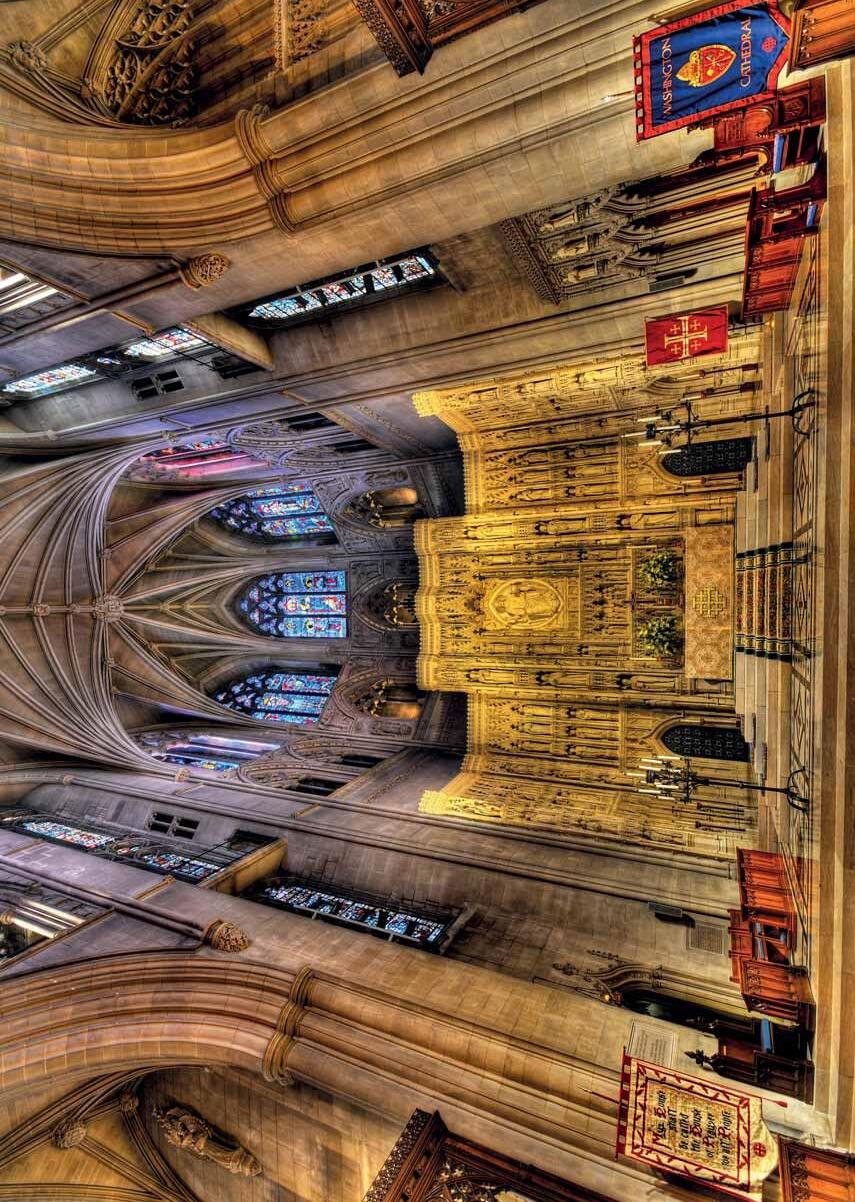C CATHEDRAL MUSIC

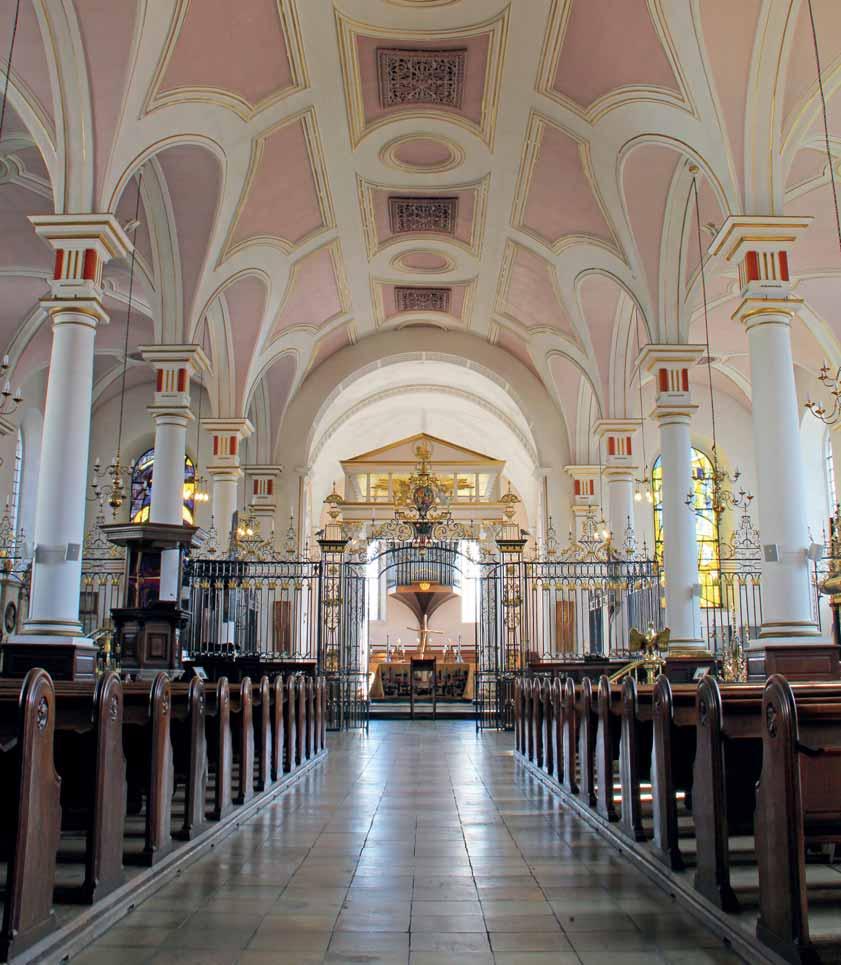

















With the recent acquisition of Copeman Hart & Company Ltd by Makin Organs, as a combined company we now offer the best of both worlds with the foremost sampled sound technology from Makin and Johannus and real-time computing from Copeman Hart. No other company offers such a broad range of products covering all technologies. Our customers are now in a unique position in that they can choose anything from a simple home practice instrument through to the largest of cathedral organs. Please take the time to visit us and browse our websites, we don’t think you will be disappointed.

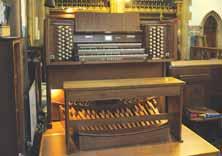


www.makinorgans.co.uk



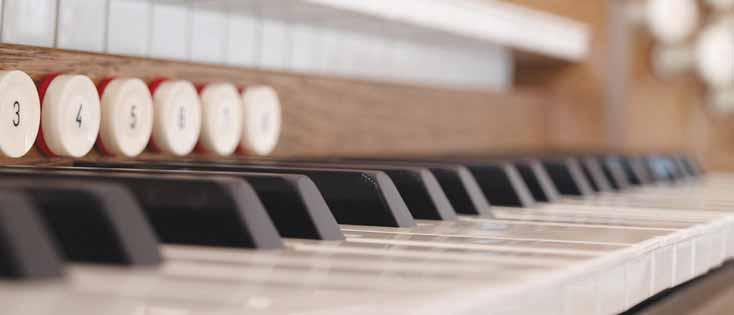
www.copemanhart.co.uk











For more details and brochures please telephone 01706 888100
CATHEDRAL MUSIC is published twice a year, in May and November.
ISSN 1363-6960 MAY 2013
Editor Mrs Sooty Asquith, 8 Colinette Road, London SW15 6QQ sooty.asquith@btinternet.com
Deputy Editor Roger Tucker
Editorial Advisers
David Flood & Matthew Owens
Production Manager Graham Hermon FCM email info@fcm.org.uk Website www.fcm.org.uk
The views expressed in articles are those of the contributors and do not necessarily represent any official policy of Friends of Cathedral Music. Likewise, advertisements are printed in good faith. Their inclusion does not imply endorsement by FCM.
All communications regarding advertising should be addressed to:
Roger Tucker, 16 Rodenhurst Road, London SW4 8AR 0208 674 4916 cathedral_music@yahoo.co.uk
All communications regarding membership should be addressed to: FCM Membership, 27 Old Gloucester Street, London WC1N 3AX Tel: 0845 644 3721 International: (+44) 1727-856087 info@fcm.org.uk
Every effort has been made to determine copyright on illustrations used. We apologise to any individuals we may have inadvertently missed. The Editor would be glad to correct any omissions.
Designed and produced by MYPEC Beech Hall, Knaresborough HG5 0EA 01423 796262 info@mypec.co.uk www.mypec.co.uk
Cover photographs
Front Cover Derby Cathedral
© Geraldine Curtis
Back
5 From the Editor Sooty Asquith
6 “It’s got a Good Reverberation, this Cathedral...” David Flood celebrates his fourth Enthronement
12 This is your Life
Canon Peter Gould, Derby Cathedral’s Master of Music
16 A Different Way of Speaking
Martin Neary reflects on the music of Jonathan Harvey (1939-2012)
18 Francesca Massey Profile
22 Richard Allain: A Bed in Exchange for an Anthem? Richard talks to Sooty Asquith
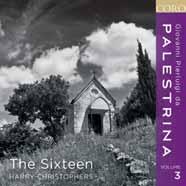

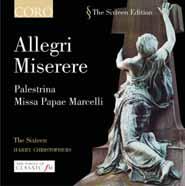
































































Readers of the most recent Cathedral Voice may have noticed a report on the sponsorship by FCM (amongst others) of a special City of London Sinfonia tour of many of the UK’s cathedrals. If there is to be a performance near you (they are visiting Durham, Ely, Portsmouth and Derby in May, and other cities in October), your attendance would be rewarded by a programme including the Poulenc Organ Concerto and Fauré’s Requiem. In each venue, the cathedral organist will be the soloist in the concerto, and the cathedral choir will sing works by Tallis and Gabriel Jackson. For FCM members there is a special 15% discount – please quote ‘Fauré’ and mention your membership when booking by phone or in person. Unfortunately it is not possible to access this discount online, and discounted tickets are limited to four per member. Details are available on www.cls.co.uk.
In this issue there is a feel of FCM’s wider reach, in that there are articles on post-earthquake New Zealand, a chorister exchange between Chichester Cathedral and St Thomas New York, and Michael McCarthy’s thoughts on the music at Washington National Cathedral. Is this evidence that our profile is becoming more international, or merely an
indication that there are few boundaries in today’s world, and almost none in the world of music?
We also celebrate length of service: Peter Gould, who still relishes his post after more than thirty years as Derby’s Master of Music (what is it about Derby? His assistant has served only one year less), and Willie Kendall, lay clerk at Winchester, who undoubtedly is not the longest-serving lay clerk, but nonetheless has notched up over thirty years too.
An update on Priory Radio, which was recommended in CM about a year ago. They have ceased the service, since it resulted in no sales, which is understandable but nevertheless a shame: it was wonderful to be able to listen to a random selection of tracks from their extensive catalogue.
As Editor, I am fortunate indeed to have two colourful and invariably helpful advisers, Matthew Owens and David Flood. This latter, in his role of Organist and Master of the Choristers at Canterbury Cathedral, has been responsible for the music for not just one or two but four archiepiscopal enthronements, the latest of course being that of Justin Welby in March. Read in the following pages a behind-the-scenes view of some remarkable events from a very experienced eye.
Sooty AsquithLog onto www.fcm.org.uk and fill in the form, or write to/email the address given on p3.
Member benefits include:
• welcome pack
• twice-yearly colour magazine and twice-yearly colour newsletter
• ‘Singing in Cathedrals’: a pocket-sized guide to useful information on cathedrals in England, Ireland, Scotland and Wales
Opportunities to:
• attend gatherings in magnificent cathedrals
• meet others with a shared interest in cathedral music
• enjoy talks, master-classes, choral and organ performances etc.
UK members are asked to contribute at least £20 per year (£25 sterling for European members and £35 sterling for overseas members). UK choristers and full-time UK students under 21 qualify for a reduced rate of £10. New members subscribing at least £30 (standing order) or £50 (single payment) will receive a free fulllength CD of cathedral music, specially compiled for FCM members.
FCM’s purpose is to safeguard our priceless heritage of cathedral music and support this living tradition. We strive to increase public awareness and appreciation of cathedral music, and encourage high standards in choral and organ music. Money is raised by subscriptions, donations and legacies for choirs in need.
Since 1956 we have given over £2 million to Anglican and Roman Catholic cathedral, church and collegiate chapel choirs in the UK and overseas; endowed many choristerships; ensured the continued existence of a choir school, and worked to maintain the cathedral tradition. Please join now and help us to keep up this excellent work.

“IT’S GOT A GOOD REVERBERATION, THIS CATHEDRAL...”© Chris Ison/PA
Canterbury Cathedral hosts many grand and impressive occasions, along with hundreds of more intimate but no less meaningful ones, throughout a year. Few come close to the Enthronement of an Archbishop, however, when the eyes of the world turn towards us as we seek to help and provide resources for the man who must take on this astonishingly demanding role. The staff of the cathedral are all switched into double speed once the date of an Enthronement is known, in preparation for this one day when all focus falls on the Archbishop and our magnificent building.
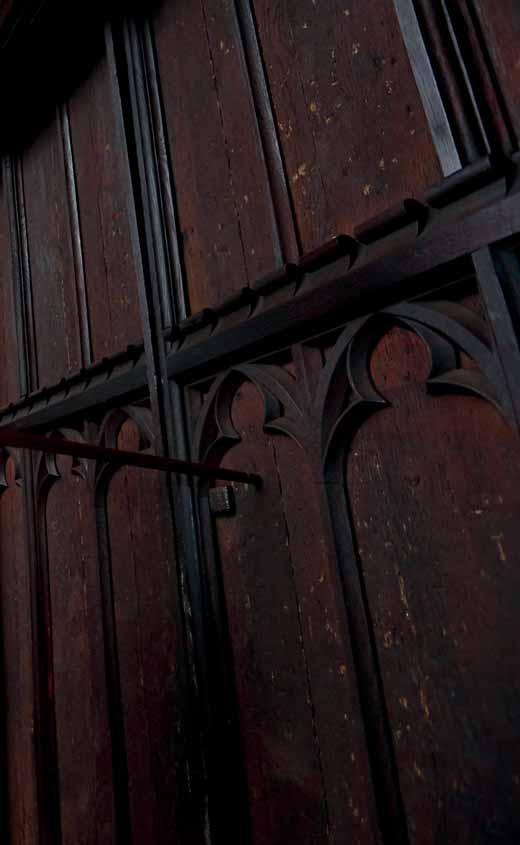
As I have had a relationship with Canterbury Cathedral which goes back almost 35 years, the Enthronement of Archbishop Justin on 21 March was the fourth such service in which I have taken a role. I had not long been in post as Assistant to Allan Wicks when we knew that Archbishop Donald Coggan would retire and Robert Runcie would be enthroned in March 1980. Perhaps too late for a baptism of fire, some would say, but uppermost in the musicians’ minds at that time was the very substantial rebuilding of the organ, including the long-awaited addition of a section of organ for the nave. This all-important renovation, happening for the first time, was scheduled to be completed in the first half of 1980. Until then the congregation in the nave had been poorly served, either by the distant Willis organ in the quire which could barely be heard in the nave, especially if the singing was enthusiastic, or else by the 1961 Hammond organ. (To make that work, two organists would play at the same time, one on the Willis and one on the Hammond, all the while looking at each other across the organ loft to keep in time.) The nave organ was completed just in time for the 1980 Enthronement, to the particular delight of the Assistant Organist whose task it was to play for the service, with a congregation of around 2,500. Having the Willis organ back in service only towards the end of 1979, however, gave little time to gain the experience of balance and detail, bearing in mind the unique acoustical problem of two practically separate spaces to be governed at once for the first time.
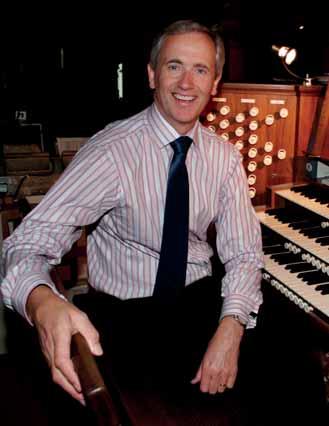
David Flood celebrates his fourth Enthronement.David Flood
The pulpitum steps in Canterbury make a natural place for the choir to sing, even though Bell Harry tower rises directly above them, taking away some of the sound. The problem for the organist is how to accompany from the quire at a level which the choir can hear but which will not deafen the congregation in the quire, all the time being aware that the organist is unable to hear the choir on the steps below when the organ is accompanying. This was the situation we were learning to manage in May 1980, and we still manage it today. For the young, green, organist it was a challenge especially with a TV camera just the other side of the console and a continuity announcer on the far side of the loft: so important a vantage point is the screen.
In planning the music for an Enthronement, such as many colleagues do for similar great occasions, it is vital to strike the balance and approach which the Archbishop himself desires. Conversations about repertoire, hymns and psalms, and also about whether a new piece can be commissioned, begin as early as possible. For the three most recent services we have been able to commission a new piece to mark the occasion and to add a fresh contribution to the celebration. For Archbishop George Carey in 1991 I invited Grayston Ives to
write a new setting of the Te Deum. This appeared as his Canterbury Te Deum and included parts for fanfare trumpets. On the day itself we welcomed the fanfare team from the Royal Marines School of Music, then in Deal, to take part, with astonishing results from those amazing players. For Archbishop Rowan Williams in 2003 a new anthem was commissioned from James MacMillan: To my successor, set to a text by George Herbert, on whose day the service was. A much more restrained piece, this was designed for a different effect: to come at the time of intercession and reflection in the service. For the most recent enthronement, Archbishop Justin had arranged a collaboration which resulted in an anthem from Michael Berkeley: Listen, listen, O my child, with a text taken from the Rule of St Benedict, whose commemoration day is 21 March. The comment and gesture which a new piece can bring and the colour it contributes to a particular moment in the service are very important. It is a gift to the occasion and to the Archbishop.
As with an Ordination or a Consecration, there is a good amount of legal and other things that are required. Various groups of people must move from one place to another. Different representatives of various parts of the Communion or
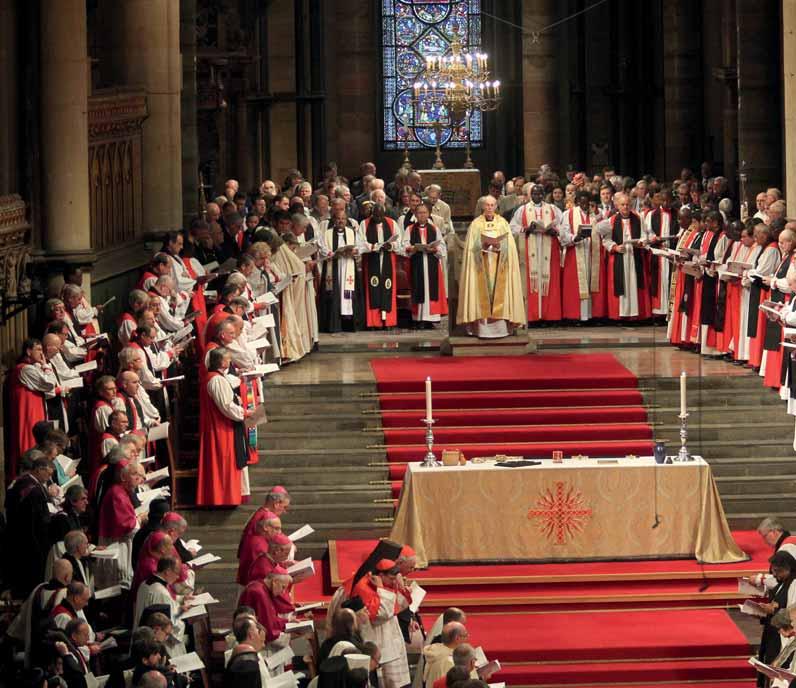
other churches will have significant things to say, read or present. For all this movement, especially in a long building like Canterbury, hymns are needed. And to respect the very wide diversity of the Anglican Communion and the representatives of various provinces who will be present, the hymns become a good opportunity both to join all these elements together in one expression and also to inject some local colour. ‘Singability’ is vital and, whether familiar or unfamiliar, the hymns need to allow inclusion and variety. Many can cross international borders, and we try to include those which we think serve the liturgy best. For Archbishop Carey’s Enthronement we were delighted to welcome the musicians from All Souls’ Langham Place, with Noel Tredinnick, who presented a group of contemporary songs as the Archbishop greeted many of those from churches around the world. For Archbishop Williams, we were able to include some African and Asian songs into which all could join, and similarly for Archbishop Welby, the whole congregation was able to sing Saranam, saranam, a Punjabi hymn to which members of the choir added a subtle percussion obbligato. Since a large proportion of the Anglican Communion is in the African continent, in 2013 we invited a group of African dancers and drummers, Frititi, to bring their
very special rhythm and colour to the service. They danced the Gospel procession from the high altar to the nave steps and back again, with great drama and effect. So many commentators noted the important acknowledgment this gave of the worldwide role of the Archbishop and of Canterbury Cathedral.
For the cathedral musicians, though, there is not a great deal of music to be sung alone once the service has begun. For us, the role is to step into the light when required and to act as solidity to all the hymnody. To give full opportunity for the treasure of cathedral music to shine, there are the ‘set pieces’ of the Te Deum and the anthem. The Te Deum chosen by Archbishop Justin was Britten in C, very suitable in Britten’s centenary year. It would have been good to have a chance to programme such a piece in the regular repertoire just a few weeks beforehand, but with an Enthronement falling in Lent and the choice of music finalised after the February music had been published, the Te Deum was like the commissioned anthem — brought to the peak for the day. Two lucky choristers had the thrill of singing the long solo part in front of a worldwide television audience. It is amazing how they will all compete to take that role!
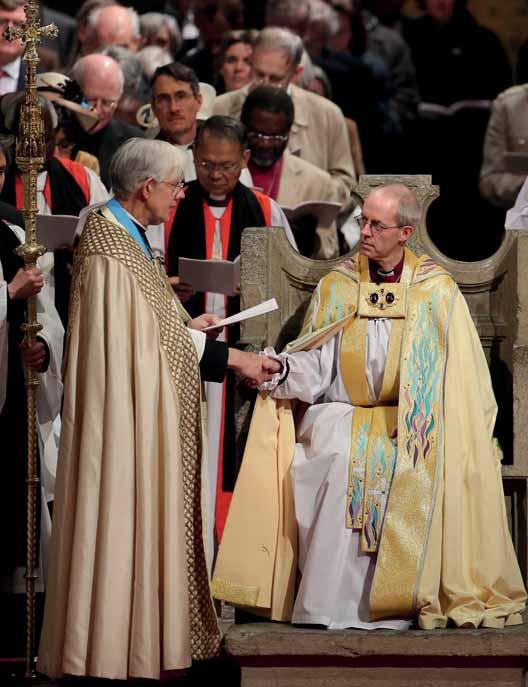
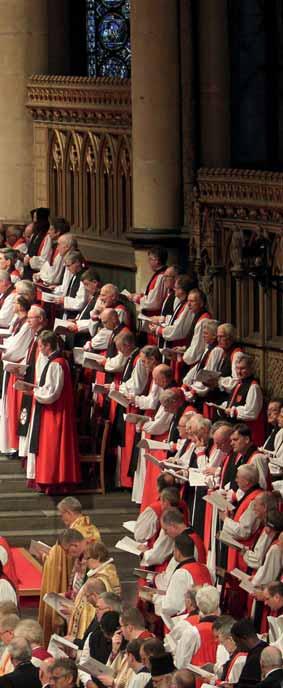
After so much ceremony, celebration and international vibrancy, the place in the service taken by Lord Berkeley’s anthem was a magnificent moment of stillness and attention. While performing this excellent and quite simply constructed piece, so well crafted for the situation and for the acoustic of our building, it was astonishing to see and feel the complete attention of the congregation. Such is the gift that an original creation can bring and the interest in the piece during the weeks following has been considerable.
The other moment of repose in the service was the presentation of gifts from five different areas of the worldwide Anglican Communion. The gifts were placed on the high altar by the Archbishop’s staff, and those who brought them moved individually from different parts of the quire. For this time of reflection the Archbishop requested organ improvisation in what might be called the French style, and since to do this for a huge worldwide audience takes a very particular skill, I invited my former colleague Matthew Martin to come back and play; this kind of improvisation is one of his special talents.
The major role for the cathedral musicians is to perform for the hour before the service itself begins, during which literally hundreds of bishops, clergy and guests will process into the cathedral. We are then the focus of attention but the timing needs to be accurate, so that we can match the music to the length of a procession. For those who will have missed this part owing to the later arrival of the television broadcast, you will not know that a great deal of this music is sung with processions moving between the two sides of the choir: both telepathy and good preparation are therefore essential. The singers were able to take a couple of breaks so that David Newsholme could play some wonderful organ music, particularly fitting since 21 March was J S Bach’s birthday.
Each Archbishop brings something of his own to the service. Rowan Williams requested Penillion – a Welsh tradition of singing lyrics to a harp accompaniment. Justin Welby preferred the more modest opening to the service: yes, a short fanfare, but then a conversational greeting and a section of Psalm 80 sung to plainsong.
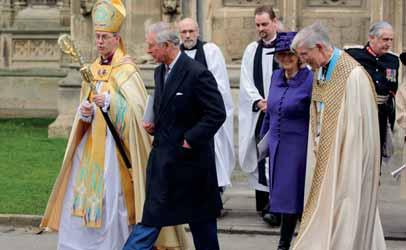
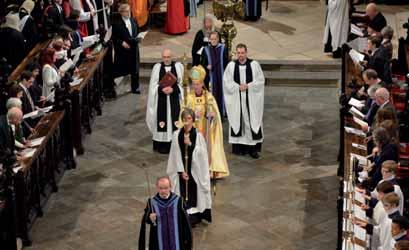
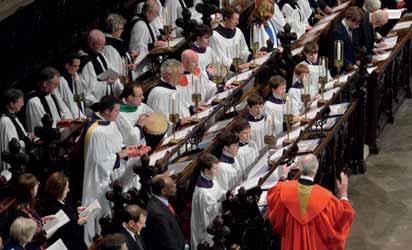
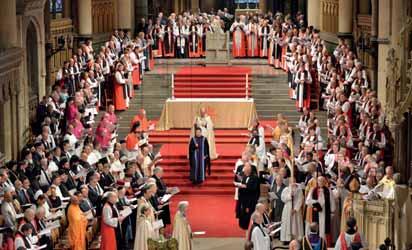
The most vital part here is to ensure that all these strands are kept together and to make each one flow seamlessly: imagine holding a large quantity of playing cards carefully stacked in your hand and knowing that you must put the right one down at the right moment… Next, having the very best colleagues is wonderful and to prepare carefully with them is essential. All sorts of things happen out of public view, and many are different to what has happened in preparation: how could the brass players and their instruments have arrived on top of their scaffold platform in the south quire aisle when minutes before they had been playing to the nave? Is there an organ tuner in a corner of the gallery, just in case?
We trust that the occasion has the right balance, focus and celebration for a new Archbishop who is making contact with many of his worldwide flock for the first time. Our task is to serve and support, to make sure that every detail is as prepared as possible. And then, of course, as soon as the great day was over we moved on into Palm Sunday, Holy Week and Easter. Normal service was resumed. We have been thrilled to welcome our new Archbishop over this period and to get to know him so that we can support his worldwide ministry even better, keeping the Canterbury community behind him wherever he may be in the world. The world’s eyes and ears rarely leave us but an Enthronement is our biggest shop window.

Derby Cathedral’s Master of Music, Canon Peter Gould, looks both back and forward.


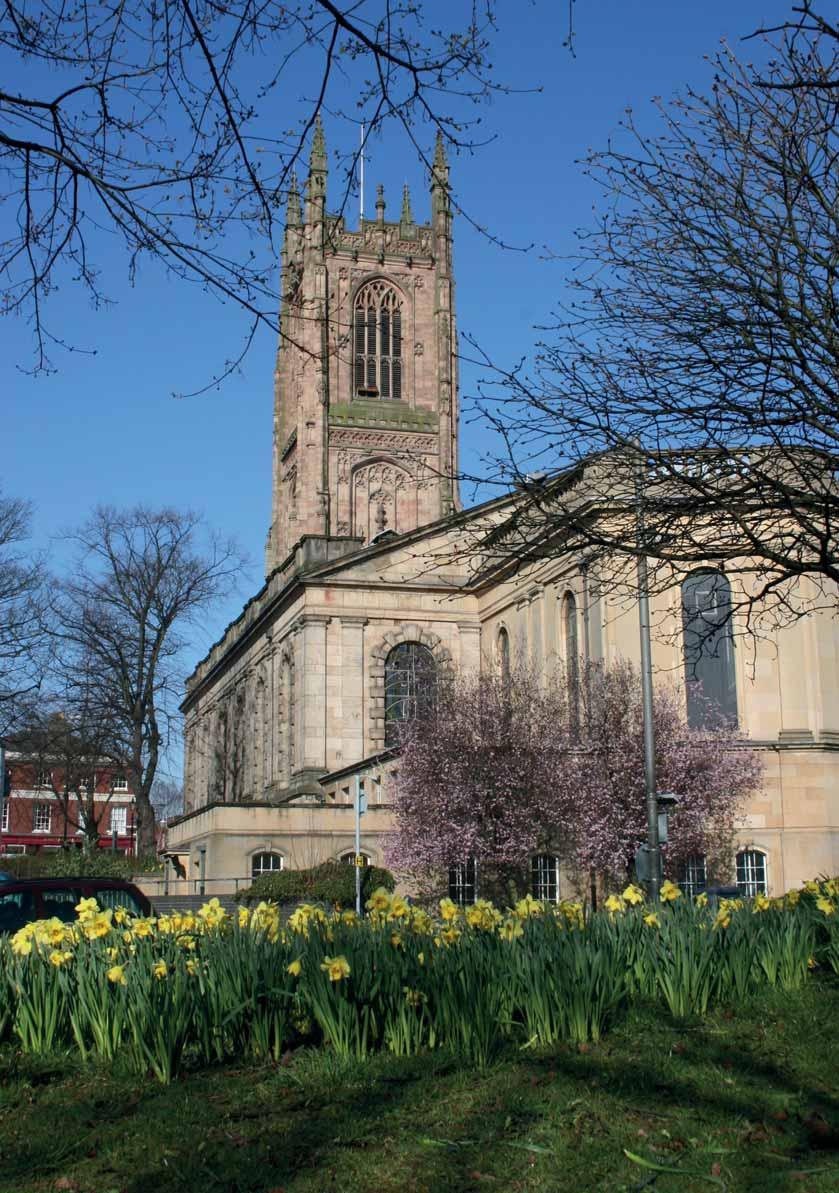
Avery successful party was held not so long ago to celebrate my thirty years as Master of the Music at Derby Cathedral. It included a This is Your Life-style presentation attended by four of the five previous precentors with whom I have worked (the first died several years ago) and large quantities of food, drink and cake. The cathedral choir sang a specially-written psalm, with a text by a deputy lay clerk, and attendees included over 150 choir members, parents, people from the congregation, organists, vergers, local musicians, friends and family. I felt truly honoured.
Derby Cathedral seems to attract loyalty and longevity in its music staff. My own appointment was in 1982 (though I started work on 1 January 1983) and my assistant, Tom Corfield, has been working with me for almost 29 years. Is this partnership a record within an English cathedral? My two predecessors each spent 25 years in office, though it should be acknowledged that the clergy have not matched this achievement! In my time here I have worked with five Provosts or Deans, five Precentors and four Bishops.
At the second rehearsal I took of the cathedral choir in 1983 – the story is now legendary – I met (and sacked) my wife. She was singing in the choir. I announced that evening that I would be reinstating boy choristers on the top line, and that the existing choir would become the Voluntary Choir (at the time there was only one boy in the choir, and his attendance was sporadic). Since we married later that same year, I think she must have forgiven me, and we saw our only daughter married almost exactly 29 years later in the same building with a lot of the same music and three of the four organists too!
When I moved here I never thought that my stay would be so long, but obviously I enjoy the work and have no plans to leave, at least for the next 12 months! The problem is that the job needs enthusiasm and constant new ideas, and this is where my predecessors struggled towards the end. And it’s not as though the job gets any easier –expectations are higher now than they have ever been, commitment from prospective choir families is harder to encourage, and child safety matters take up a disproportionate amount of my time these days.
Despite these problems, I still feel that I am so privileged to have been able to carry out the work that I do while enjoying almost every moment of the job. I trained initially as a school
teacher and was never an ‘official’ organ scholar –I just happened to be in the right place at the right time! I was always keen on playing the organ, partly because my father was an organist in a small church in Portsmouth. I used to play hymns for the Sunday School, then later was the organist for local weddings on most Saturdays because my father was a grocer and couldn’t get time off work. I put my knowledge and enjoyment of harmony down to this experience. My enthusiasm continued when I was a student at the RAM in London. Though I studied piano and cello in my first year, I was soon persuaded to take lessons on the organ too, and that was one of the best pieces of advice I have ever been given! By my third year in London, organ had become my first study. During this time I was organist at St Margaret’s Church in Putney, where I built up the choir and took choir members on cathedral trips. When I subsequently went to Bretton Hall College I played at Bradford Cathedral, and met Keith Rhodes, who encouraged me to accompany the choir. In 1974 I got my first official appointment, teaching music at Honley High School in Huddersfield, and I was able to combine this with being the first official Assistant Organist at Wakefield Cathedral (following on from John Scott, who at that time was the organ scholar-elect to St John’s College Cambridge).
The next eight years taught me a great deal of repertoire, and I thoroughly enjoyed the new experience of regular musical worship where I was totally involved. Recordings, concerts, broadcasts and tours provided me with the steep learning curve that I had so missed through not being a cathedral chorister.
There have been plenty of high spots over the past thirty years, the greatest being two visits from the Queen, one to open our new cathedral centre, and then a second when Her Majesty came to distribute the Royal Maundy in 2010. On this occasion I was lucky enough to be able to talk to her and shake her hand at the reception following the service in the Cathedral Quarter Hotel. The service itself was amazing too: the music included no fewer than six anthems, which were sung whilst the Queen was distributing the money. We also had the pleasure of welcoming the Chapel Royal Choir to sing with us, and even the preparation for the occasion was a great excitement for our choir, especially as we were all given some Maundy Money to remind us of the event. The other great pinnacle of my time to date was to be part of the Sons of the Clergy Festival service in St Paul’s Cathedral in 2004, when we were guests alongside Winchester Cathedral Choir and of course the choir of St Paul’s. Other momentous times have been visits from the BBC: we have sung several Radio 3 Choral Evensongs, especially in the last ten years, filmed four episodes of Songs of Praise, recorded two programmes for Radio 2’s Sunday Half Hour and a few BBC Radio 4 morning services sung live direct from Manchester. We still hear or see repeats from some of these programmes (though repeat fees seem mysteriously to get lost in the post!).
On talking to past and present members of the choir you will find that it is the tours that stand out in their memories. Each year I have taken the choir to sing in other places, sometimes within the diocese for concerts or services, sometimes to other cathedrals for one-off evensongs, for a weekend or sometimes even a week’s residency. Occasionally we have been to foreign parts. Venues include two trips to Tuscan cathedrals, Paris’s Notre-Dame on three occasions, and several visits to our twin town, Osnabrück in Germany. More recent tours have included Northern Ireland (the longest tour at 9 days) and to the Cambridge colleges last Easter.
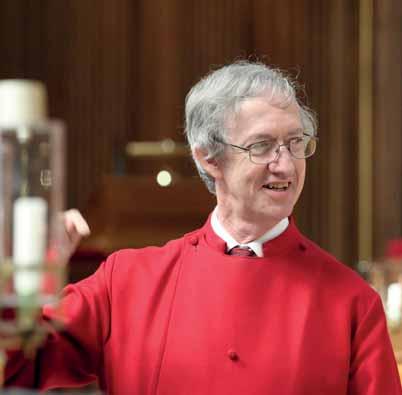
When I was first appointed, my position was half-time only, and shared with the local education authority. I therefore went into junior schools for three days a week, teaching music and singing where there was then no specialist. This allowed me to have access to the resources that I needed to build up a ‘new’ cathedral choir of boy choristers, which became very successful. In 1997 I persuaded the chapter that I needed more time in the cathedral itself and suggested that I might form a girls’ choir (especially as my daughter was showing signs of interest and I could plainly see the great benefits that being a chorister gave in preparation for a future musical life). This they agreed I should do, and it turned out to be one of the best decisions I have ever made. With the girls’ choir up and running we were able to increase the number of weekly sung services in the cathedral, giving the boys some very appreciated time off at weekends and also allowing us to expand the repertoire hugely, something that satisfied the songmen and also myself, since we then had the chance to perform in a wider range of styles. As Derby has no choir school there are no age restrictions, so that with the girls being between 10-18 we are able to provide a high quality treble line which has both experience and youthful enthusiasm. In terms of recruitment, I work hard to produce choristers for auditions by going round various schools well in advance (this year I went to 17 schools!). At our Open Evening recently 22 boys turned up, and I’m hopeful that something similar will happen with the girls shortly.
We have appreciated very much the help that we have had from Friends of Cathedral Music in the past. When I arrived in 1983 there was little music of a contemporary nature and the music budget was very small. We were given an emergency grant to buy basic things like the Tudor responses, Oxford psalters and new hymn books. Since then, we have been given grants to pass on to all choristers for individual singing lessons from a professional, help with instrumental tuition fees and a new piano for the song school. It’s particularly nice that we will be welcoming friends from FCM on 11 May when we are hosting another regional gathering through the day, culminating with a performance conducted by Stephen Layton (born just outside Derby!) by the City of London Sinfonia that night. This is one of a series of concerts sponsored by FCM that the CLS will be giving in English cathedrals; it includes Poulenc’s Organ Concerto (in which Peter is the soloist – Ed.) and Fauré’s Requiem
I’m pleased to say that we are still attracting interest from the locality and beyond, and that services in Derby Cathedral are generally better attended now than they have ever been in my 30 years here. Evensong has certainly become more popular, and we now also have many extra services that usually attract a large congregation. Visitors like the Mayor, High Sheriff and the Lord Lieutenant are regulars, and the Christmas carol services have become so popular that we sing the same service twice with over 1,000 in each congregation and the numbers limited by ticket. Recent events have included Derby University’s prizegiving (in which in 2009 I was awarded an honorary Master of Music degree), a service organised by the Lord Lieutenant to celebrate the Queen’s Jubilee, and the annual High Sheriff’s service, which always has a huge music input.
Many people say that Derby punches above its weight musically, especially as there is no choir school and we have no financial reserves. The music department has only one director of music, a part-time assistant organist and currently no organ scholar (though we have just started to train up a young and enthusiastic local lad to fill this position). The cathedral office will help with occasional clerical matters, but the music department is minute. It currently enjoys great support from all the clergy and the chapter, and only last year bestowed on me the position of lay canon. It means that I can wear a special gown and have my own particular seat in the chancel (though I shall never sit in it and only occasionally wear the gown!).
I am proud to say that I have conducted over 6,000 services and worked with over 200 boy choristers and 100 girl choristers in my time here. Some have gone on to be professional organists and singers in their own right now, and the term ‘songman’ has recently been replaced with the title ‘lay clerk’ as we have now appointed our first female alto. Purists should note that she has fitted into the choir extremely well. Many of our lay clerks are ex-trebles, and though the turnover is not huge, with a large spread of ages, only one of the men has been here longer than me!

Looking ahead, I have a special project: for the next two years I plan to play every church pipe organ in the diocese of Derby! I start in April, in the Wirksworth and Matlock areas, with nineteen organs being played on two days. This project should keep me more than occupied for the foreseeable future, though in any case I am never short of things to do –music at Derby thrives!

Harry Christophers and The Sixteen are delighted to present their 13th Choral Pilgrimage, ‘The Queen of Heaven’, looking at the music of three composers who, although separated by centuries, are unique in their devotion to the church. The tour encompasses 34 concerts around the UK and Ireland and features Palestrina and James MacMillan. The former is known for his immaculate craftsmanship and sheer output, although the latter’s setting of the Miserere is an astounding and powerfully emotional work, one which will have you on the edge of your seat. It is contrasted here with Allegri’s Miserere, the single most famous piece of sacred music ever written.
Pre-concert talks: Many concerts include a free pre-concert talk about the 2013 repertoire. Talks last for approximately 15 minutes and explore the context and performance practice of the concert programme.
Choral Workshops: A perfect combination of historical context, provided by soprano and practical scholar Sally Dunkley, and expert vocal tuition from The Sixteen’s Associate Conductor Eamonn Dougan. Sessions include a range of vocal advice including warm-ups, breathing technique, voice production and blend. Singers should be confident in holding their own line, and music is sent in advance to all participants. For ticket prices please call the relevant box office or visit www.thesixteen.com.
Lindsay Gray, the former Director of the RSCM, has been made an Emeritus Director by the RSCM Council, the charity’s governing body. Lindsay Gray resigned from the post last year to pursue a range of professional interests in music, education and charity work nearer home (he lives in Cardiff). The title has been conferred in recognition of Lindsay’s significant contribution to the RSCM in nearly five years as Director from 2008. During that time, he travelled widely and worked with RSCM members all over the world. The post of RSCM Director is now held by Andrew Reid, formerly Organist at Peterborough Cathedral.
St German’s Cathedral, Peel, Isle of Man, is the newest of the Anglican cathedrals in the British Isles. February 10 saw an historic occasion when 10 probationers were admitted as full choristers of the cathedral, the first new such singers since the time of Bishop Hildesley in 1745. At that time a private chapel at Bishopscourt, the Bishop’s official residence, was the pro-cathedral (a parish church serving as a cathedral), but in 1980 the Manx Church sold Bishopscourt and St German’s Church, Peel, was hallowed as the island’s cathedral. Dr Peter Litman was appointed Organist & Director of Music at Easter 2012. Choristers are drawn from the island’s primary schools and sing Choral Evensong every Sunday in term time (the morning services being sung by the adult Nave Choir). The choristers also join the Nave Choir for large diocesan and civic services, and major feast days. Currently there is a Music Renaissance Appeal to raise funds for music lessons for the choristers, a dedicated song school, and restoration of the cathedral’s organ. Details can be obtained from www.peelcathedral.im.
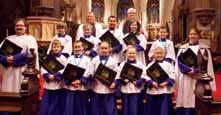
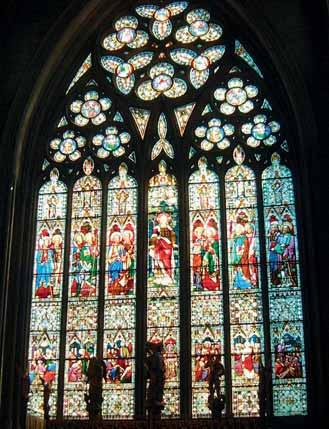
The Choir School at Ripon has closed. A new choir has been created, with choristers drawn from a number of schools in the district: a boys’ choir of eleven choristers and twenty-two making up the girls’ choir. A new rehearsal timetable is now in place, and although it is still very early days the music department is to be commended for keeping the vital choral tradition very much alive. Further recruitment is ongoing and it is hoped the numbers will grow during the coming year.
The magnificent new glass doors at the west end of the cathedral have made a huge difference to the light quality within the building. Looking west from the choir it is now possible to see the sun streaming into the cathedral, and the movement of trees not far away.
Having held a mini-gathering on the occasion of the Three Choirs Festival, Ripon are now looking ahead to hosting a National Gathering on 3 - 5 October 2014. Although a long time ahead, you might like to make a note in your diary now.

The City of London Sinfonia has launched its online crowd-funding campaign on Just Giving (www.justgiving.com/GabrielsAngels). Called Gabriel’s Angels, the appeal hopes to raise the £6000 needed to pay for the new work commissioned from Gabriel Jackson and performed as part of the CLS cathedrals tour (see p5 for details). People can donate any amount (from £5 upwards) through the website, and there are some interesting and quirky rewards to be had.
There are some corrections from the November 2012 issue. The Editor apologises for the mistakes made.
On p48 it was not made clear that Bob Chilcott’s The Angry Planet was commissioned by The Bach Choir. Both the idea and the title came from the choir’s Musical Director, David Hill.
In the article The Third Way, the photograph used on p26 was of St Andrew’s Cathedral, Singapore, and was taken by David Wilson. The insert on the organ at St Peter’s, Nottingham, on p29 was written by Dr Peter Siepmann, the Director of Music at the church. There are also some new, very impressive, installations to be seen on the MPOS website — www.mpos-organs.com.
Ever since his untimely death on 4 December, tributes have been pouring in from all over the world about Jonathan Harvey. They include letters to his wife, Rosaleen, from such luminaries as Pierre Boulez, who in the 1960s invited Jonathan to be one of the early participants at IRCAM (Institut de Recherche et Coordination Acoustique/Musique) in Paris, testifying to his world-wide reputation at the forefront of the avant-garde movement.
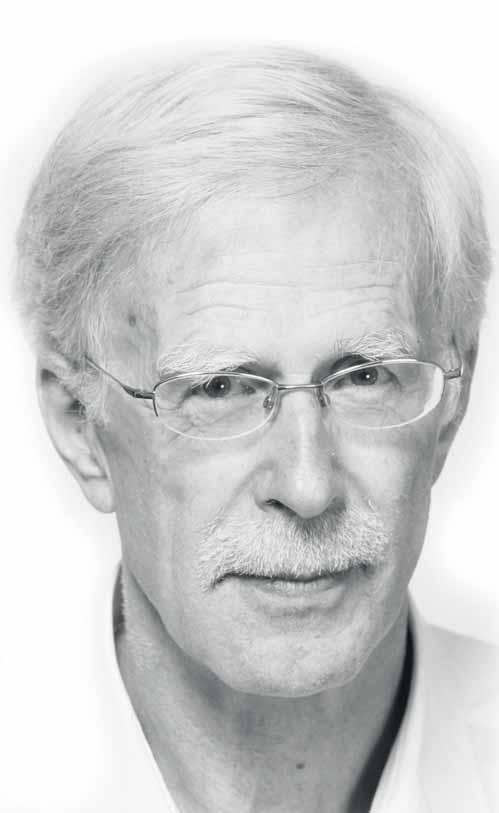
The range of Jonathan’s compositions was extraordinary, not least in the way he found a magical way of integrating electronic and live music, and nowhere is this better demonstrated than in his opera, Wagner Dream. It is sadly not untypical that, while warmly applauded in Luxembourg and Amsterdam after the first performances in 2009, Wagner Dream should not have been staged in the UK until this year (at Welsh National Opera in June). Also still awaiting a fully professional staging in the UK is his memorable church opera, Passion and Resurrection.
Passion and Resurrection was in my view Jonathan’s outstanding work for the church, but as a result of its complexity and ambitious orchestration it has not received the performances it undoubtedly deserves. Yet, dare I say, in Winchester in 1981 we managed to stage it using mainly Winchester-based vocal forces, with the Bishop of Winchester, John Taylor, as producer, and Donald Sweeney, the incomparable Winchester lay clerk, taking the part of Jesus. In one sense the production became a kind of Winchester Oberammergau; the BBC1 documentary, The Challenge of the Passion, chronicled the local preparations, including some unscripted reactions from the Waynflete Singers, one of
whom, a retired colonel, was heard to say that “Harvey has done to choral music what Goering did to Coventry” and that he made Schoenberg sound like Palestrina! (Jonathan took these comments with typical equanimity.)
The documentary also captured the sense of commitment which, I believe, was experienced by all the participants. Before we started the first rehearsals in the cathedral, there was a moving communion service attended by all involved and celebrated by the Bishop in the Lady Chapel. This was very close to Jonathan’s heart; he had loved the liturgy and the church’s ritual from his days as a chorister at St Michael’s, Tenbury.
In Passion and Resurrection, the action grows out of the liturgy, with Jesus himself intoning the words: “Take, eat, this is my body” offstage, in a kind of recitative expanded from plainchant –the basis of the musical language for all the soloists in the first part. This plainsong element also comes out forcefully in two great Passiontide hymns sung by the congregation: Pange lingua and Vexilla regis. After the dark austerity of the Passion music, the mood completely changes with radiant, dance-like passages for the Three Marys, ending with wonderful brass fanfares from all parts of the building as the audience is exhorted to spread the word. Reviewing the first performance, Nicholas Kenyon wrote in the Observer that Passion and Resurrection ‘is a cunning blend of simple dramatic imagery and apparently effortless music subtlety and elegance’, while Andrew Clements in the Guardian thought that the (1999) BBC recording* ‘should encourage other choirs to investigate it further’. If only…
Jonathan clearly loved writing for the church. I had the privilege of seeing this at first hand from 1974, when he began composing for the Winchester Cathedral Choir. In The dove descending he found a musical way of matching the symmetry of Eliot’s words in Little Gidding by imaginative use of the tritone. The next Winchester anthem, I love the Lord, was, he said, “the fruit of listening to the cathedral choir (in which his son Dominic was by now a chorister), on Sunday afternoons”. It is a supreme example of his ability to integrate quasi-modern techniques into traditional harmony, without any loss of integrity. A G major triad (representing the love theme) is heard almost throughout, set against a chord of E flat minor (the sorrows of death), which is finally subsumed into the home key of G.
After the Winchester performances of Passion and Resurrection, Jonathan’s relationship with John Taylor, Bishop of Winchester, blossomed. There were several more compositions, from A New Litany for the Ordination services at Winchester Cathedral to Lauds, the first and sadly only completed setting of texts written by John Taylor relating to the seven offices of the day. Lauds, which is scored for two independent choirs and solo cello, drew the following comments in Le Monde in March, 1995: “Harvey est bien le descendant de Benjamin Britten qui sut offrir à ces mêmes choeurs d’enfants des musiques exigentes et de haute qualité.” (Harvey really is the descendant of Benjamin Britten, who knew how to challenge these children’s choirs with demanding and high-quality music.)
I suspect that Lauds will be comparatively unknown, but both I love the Lord (1975), which was sung during their visit to the Vatican last year by the Westminster Abbey Choir in the Sistine
Chapel, and also Come, Holy Ghost (an anthem composed in 1984) have rightly become classics and a regular part of the cathedral repertoire. Of course Come, Holy Ghost, and the Magnificat and Nunc Dimittis with their use of aleatoric and atonal techniques are challenging and need plenty of rehearsal time, but they can be extremely rewarding. And what a thrilling finale the Gloria from the Missa brevis made to the first of last year’s BBC 2 programmes on Westminster Abbey!
Jonathan Harvey was a prolific composer, with over 250 works to his name, several of immense complexity; in the last decade of his life he enjoyed a fruitful collaboration with the BBC Scottish Symphony Orchestra and its chief conductor, Ilan Volkov, and I wish there were space to write about some of these massive creations, many of which combine electronic with live sounds. But I will end this tribute by mentioning two electronic works with special relevance for cathedral musicians: first the Toccata for organ (1980) which, in the manner of a concerto, is built around the dialogue between live solo organ sounds and a prepared tape; and secondly the IRCAM commission Mortuos plango, vivos voco, which was based upon the overtones of the great tenor bell of Winchester Cathedral and the treble voice of Jonathan’s son, Dominic. Whenever I hear that piece, I always discover something new in it, and the première at the Lille Festival in 1980 was an overnight sensation.
So what will be Jonathan’s legacy? As we have seen, as a man and a composer he was both avant-garde and deeply spiritual; his innovative voice not only broke down barriers in the church music world, but also created, I believe, some of the most spiritual sounds ever heard. Over and above his remarkable musical achievements, however, I will remember Jonathan Harvey for his quiet yet scintillating humour, his gentleness and his loving kindness.
* made by the BBC Singers and Sinfonia 21 of a broadcast concert performance at St John’s Smith Square, in 1999. Available from Amazon.
August 18th - 25th, 2013
The 58th Festival of Church Music within the Liturgy at the Priory Church of St Mary Edington (near Westbury in Wiltshire)
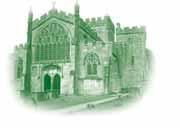
Information from John d’Arcy, The Old Vicarage, Edington, Westbury Wiltshire BA13 4QF
Tel: 01380 830512
www.edingtonfestival.org
“Jonathan has created a different way of speaking, and provided a fundamentally different way of hearing the world, through music.”
(The Chief Executive of the Incorporated Society of Musicians, when presenting him with the ISM’s Lifetime Achievement Award)
Age: 30
Education details:
Edgbaston High School, Birmingham (11+ and VIth form Music Scholar)
Gonville and Caius College, Cambridge (MA in Music)
Royal Northern College of Music (Postgraduate Diploma in Performance – Organ)
Career details:
St George’s Chapel, Windsor Castle: Organ Scholar 2001-2002
Gonville and Caius College, Cambridge: Organ Scholar 2002-2005 and Assisting Organist / Acting Precentor 2005-2006

Great St Mary’s Church, Cambridge: Assistant Organist 2005-2006
Manchester Cathedral: Organ Scholar 2006-2007
Peterborough Cathedral: Assistant Director of Music 2007-2011

Durham Cathedral: Sub-Organist 2011 to present
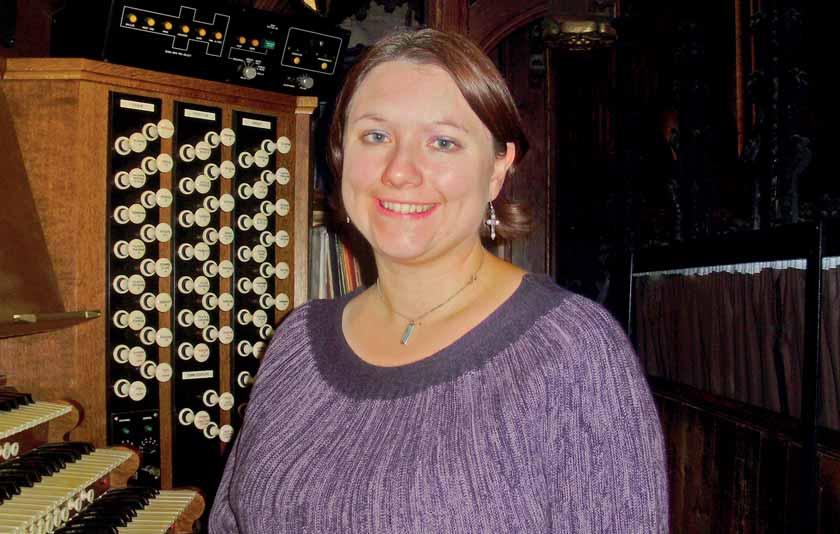
What or who made you take up the organ?
I started learning the organ at my local parish church in Halesowen (West Midlands) at the age of 12, and afterwards became Organ Scholar at St Thomas’s Church in Stourbridge. Having been a chorister in two church choirs, and learnt piano and violin for five years, I was interested in the great variety and range of orchestral sounds on the organ, and the fact that you could do without an accompanist when practising!
When you were at school, did you think you might end up where you are now?
Yes and no. Becoming a musician was certainly my top ambition, although as to exactly what form that would take I wasn’t sure. I believe that making and sticking rigidly to career plans can either lead to the disappointment of unachieved targets or else a blinkered approach whereby you don’t take advantage of opportunities that present themselves along the
way. At school I felt it important to keep many career avenues open. My first desire was to be an Olympic gymnast (perhaps slightly ambitious, although I still have all my medals from regional competitions!), and I was also very interested in Maths and Languages in particular. Musically, I continued playing the violin in numerous orchestras, singing with the National Youth Choir and the City of Birmingham Symphony Youth Chorus, and playing the piano as a soloist and in chamber groups as long as I could. Eventually I set my sights on an Oxbridge organ scholarship and a possible venture into the cathedral world, although I had no idea as to exactly where that journey would (and will) take me: in our small profession some positions don’t become vacant for many decades!
What did you enjoy most about your tour of the French cathedrals whilst at Peterborough?
The cathedral choir tour to France in summer 2011 was a wonderful occasion. I have fond memories of the stunning architecture, acoustics and organs of the cathedrals in Amiens, Rouen, Bourges, Blois and Orléans. As a great lover of French organ music (both Classical and Romantic onwards) it was a privilege to have the experience of performing that repertoire on the sorts of organs for which it was conceived. We had much fun using the Grand Orgues and the Orgues de Chœur simultaneously in two-organ repertoire, once the long trek up to the extreme heights of the west-end organs had been made (Amiens, in particular, is not one for those with vertigo!). The Organ Scholar and I were also treated to an exhilarating private tour of the upper levels of Orléans Cathedral, including climbing one of the 80m-high towers and touching one of the feet of the stone angels which adorn the very top. It was a rather terrifying ascent, but the views over the Loire Valley and the local belief that those who touch the angel will have luck for life made it all worthwhile!
What does (or did) your work for the Oundle for Organists courses involve?
I have been honoured to have the opportunity to work as a tutor on Oundle’s ‘Pulling out the Stops’ course a few times. The course is designed for young organists who have recently started, and some who are approaching the organ for the first time. The aims are to give the students an introduction into musical styles, registrations, hymn-playing, practice techniques, encountering new and differing organs (including an ‘organ crawl’ in Cambridge!) and getting used to performing in front of others. Moreover, it is a relaxed environment whereby youngsters can meet like-minded souls and make connections for life. As someone who met many of my current friends and colleagues on the Oundle courses which I attended as a teenager, it’s a very rewarding experience to play a part in encouraging a new generation of talented youngsters.
Do you have time to fit in any teaching in your current position?
Yes I do, and it’s something I find very engaging and beneficial. Durham University (with which the cathedral has strong links, being its founder) has a collegiate system, with many of the colleges having chapel choirs and organ scholarships. Consequently there are numerous organ students within the university, many of whom I have the pleasure to teach, alongside other pupils of varying ages. I find the act of teaching necessitates a verbalisation of the reasons why or how you do something, which naturally clarifies the issue in your own mind. Teaching is certainly a two-way
process, and I am constantly re-evaluating my own interpretation of pieces by learning things afresh with others. This prevents your own performances becoming stale and keeps the grey cells in order!
What organ pieces have you been inspired to take up recently and why?
My ‘must-learn’ list is ever-increasing, although being a cathedral organist does give you a regular performance forum (of liturgically appropriate music, of course!) and so I constantly have the luxury of being in a position to learn new repertoire. Currently I’m studying Dupré’s Le Chemin de la Croix, and the remaining ‘visions’ of Messiaen’s Les Corps Glorieux: having played a few of the movements for a number of years, completing the cycle was long overdue!
Have you been listening to recordings of them and if so is it just one interpretation or many and which players?
I always try to avoid listening to recordings of works I’m learning as I think it’s vitally important to allow the music to speak to you directly and to form your own interpretation, rather than merely being a clone of someone else. That said, I have a fabulous version of the Dupré by my former teacher, Jeremy Filsell, and the complete Messiaen box-set by Olivier Latry: if my end product is akin to either I will be content!
What was the last CD you bought?
I think it was either Polyphony’s recording of MacMillan’s Seven Last Words from the Cross, or Pascal Rogé playing Debussy’s piano works, although I haven’t bought a physical CD in a long while, being more of the digital generation.
What was the last recording you were working on?
My latest project was accompanying Durham Cathedral Choir on a recently-released Priory CD featuring the premiere recording of James MacMillan’s Missa Dunelmi (composed for Durham and see p57), alongside an assortment of anthems and Demessieux’s Te Deum (organ solo). The Demessieux has long been one of my favourite organ works, so I was delighted to have had the opportunity to record it.
What is your favourite organ to play?
I’ve played some fabulous organs in Scandinavia especially; St Jacobs Kyrka, Stockholm, Sankta Maria Kyrka, Helsingborg (Buxtehude’s church) and Roskilde Cathedral would be highlights. Closer to home, Peterborough and Coventry Cathedrals and Hexham Abbey are particular favourites, alongside Durham of course!
What is your favourite building?
For sheer individuality and decoration, La Sagrada Família in Barcelona and the Russian Orthodox cathedral in Nice.
What is your favourite anthem?
Finzi Lo, the full, final sacrifice, Gowers Viri Galilaei and Purcell Jehova, quam multi sunt hostes mei.
What is your favourite set of canticles?
Leighton Second Service, Howells in B minor or McCabe Norwich Canticles.
What is your favourite psalm and accompanying chants? Most minor key chants, particularly Howells’s in B flat minor.
Other favourites: Ps 22 (Wesley), Ps 49 (Stainer), Ps 69 (Millington), Ps 130 (Walford Davies or Turle/Purcell).
What is your favourite organ piece?
Liszt Fantasia on BACH, Alain Trois Danses and Duruflé Prélude et Fugue sur le nom d’Alain.
Who is your favourite composer? Mahler and Poulenc.
When is your next organ recital? Which pieces are you including?
My next recitals are at King’s Lynn Minster and St Hilda’s, Hartlepool. Programmes include Bach Fantasia on Komm, Heiliger Geist, Alain Deux Danses à Agni Yavishta, both Sweelinck and Wammes Toccata Chromatica and Duruflé Choral Varié sur Veni Creator. Before then I have a number of exciting orchestral engagements: I’ve recently been working with the Northern Sinfonia at The Sage, Gateshead, on the chamber organ, piano and celeste, and in the next few weeks I’ll be playing piano duet in Britten’s opera Noye’s Fludde, continuo in Bach Magnificat and Beethoven Mass in C, and organ in Poulenc’s Organ Concerto with the City of London Sinfonia.
Have you played for an event or recital that stands out as a great moment?
Yes, far too many to narrow down! I have been involved in numerous exciting concerts, recordings, tours and broadcasts, including the back-to-back live TV transmissions of Midnight Mass and Christmas Day Eucharist at Peterborough, two Bishop’s Enthronements (and soon to be a third, due to the departure of our Bishop to Canterbury), Stanley Vann’s 100th birthday celebrations, and sadly later that year his funeral, solo recitals in many great venues including the Bridgewater Hall, Manchester and Westminster Abbey, a joint organ and brass concert with players from Northern Sinfonia, and many Royal occasions at St George’s Windsor including the Garter Service, the Golden Jubilee, the funeral of Princess Margaret and The Queen Mother’s memorial service (even though I was mostly page-turning!). As a member of the CBSO Youth Chorus, I was lucky enough to perform in Vienna and the Salzburg Festival under Sir Simon Rattle (as well as at all the major concert halls in the UK), and in Paris with the Berlin Philharmonic under Claudio Abbado. We sang at Sir Simon Rattle’s final concert with the CBSO at Symphony Hall (Mahler’s 2nd Symphony), which heralded an extremely lengthy and memorable standing ovation. I also had a small solo part in Britten’s opera Death in Venice, with the BBC Philharmonic and Yan Pascal Tortelier, alongside Michael Chance, whose signed CD containing the words ‘brilliantly done’ is among my prized possessions!
Has any particular recording inspired you?
Yes. In terms of choral music I particularly enjoy the Westminster Cathedral recordings of the Martin, MacMillan and Poulenc Masses, and the St John’s College Cambridge series of English Choral Music on Naxos. Fantastic music and singing!
How do you cope with nerves?
Nerves need not be a negative force; adrenaline when channelled properly can focus the mind and reminds you that you still care about the outcome! Obviously experience plays a part, but I think the important thing is to be thoroughly prepared, so that you can go into a performance knowing that you’ve done everything in your control to enable a satisfactory result. Doing a trial run and/or recording what you are due to
play is often a good idea to see where the gremlins are lying in wait! Being well rested, having a sufficient break between rehearsal and performance, doing some simple muscle-relaxing exercises (such as shaking your arms out) and eating bananas I find also help, but everyone has their own routine! During a performance, it’s important to put any slips or mistakes quickly out of your mind and into perspective; you can’t change what has happened and the beauty of live performance is that there will inevitably be a few imperfections. I would much rather give (and hear) a performance that is vibrant and exciting if slightly flawed (within reason!) rather than a thoroughly accurate but robotic and lifeless account. I find this attitude helps to keep debilitating nerves at bay.
What are your hobbies?
I enjoy tennis, swimming, cycling, walking (especially in the Swiss Alps), travelling, cooking, reading, cinema, and most of all relaxing with family and friends.
Do you play any other instruments?
Yes, I play the piano, the violin and I sing. I’m the rehearsal pianist for The Durham Singers, which not only immerses me in wonderful choral repertoire from outside the cathedral spectrum, but puts my keyboard skills to the test each week, whether it’s transposing Bach’s B Minor Mass to Baroque pitch, or score-reading a contemporary work with up to 12 staves!
Would you recommend life as an organist?
Absolutely: it’s an extremely varied lifestyle which helps to keep things fresh and invigorating. Having the opportunity to work alongside inspirational musicians in equally awe-inspiring settings and on an array of fantastic instruments is a privilege, as is the involvement in the musical education of choristers and young organists. Knowing that your contribution to a service or a performance has brought joy, or else moved someone in some way, makes it all the more worthwhile.
What are the drawbacks?
I think there are few who work as hard as an organist does at Christmas and Easter! Organists often work at unsociable times, and not having defined working hours means that they can feel as if they are always ‘on call’, especially if they live on site. Getting enough access to the organ is often an issue for many organists, whether it’s being trusted enough to be granted a key, being kept in the loop as to events in the church’s diary to avoid wasted journeys, or places where playing isn’t allowed at all during opening hours, due to the impression that visitors don’t like to hear the organ being played! The concept of organ practice is widely misunderstood: because we all enjoy being musicians it’s thought that we just play for fun, rather than because we have a job to do. Consequently, people can complain when you play something they don’t like, request their favourite tune whilst you’re busy trying to learn notes, and don’t understand that it’s not always possible to ‘turn the volume down’ when you only have five minutes to try out your registrations! After choosing between either practising nocturnally or to the simultaneous (and out of tune) accompaniment of a vacuum cleaner, you then find that people will either talk very loudly in earshot of the organ during your voluntary, or else leave at the first opportunity. I once had all the lights switched off and doors locked in mid-voluntary (and it wasn’t Liszt Ad Nos, either!). So, sometimes it can seem a thankless and lonely existence up in your loft, playing away to yourself!
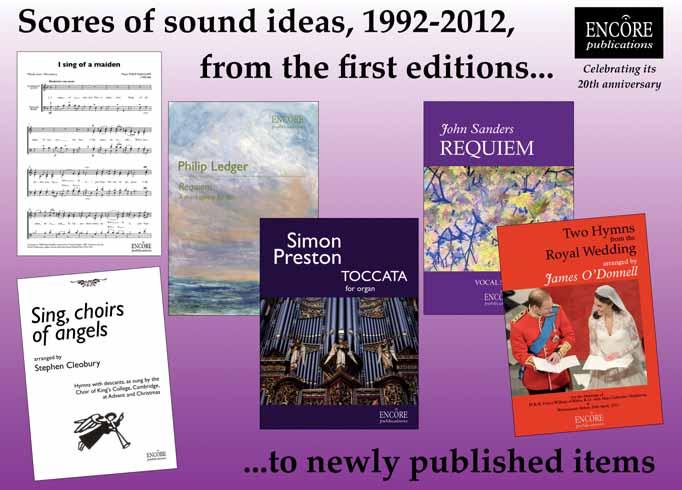
The catalogue enjoys a worldwide reputation as a specialist publisher of choral music. It comprises over 400 printed publications and features the works of more than 90 composers.
The church music list has evolved from the works of leading musicians, such as Stephen Cleobury, Philip Ledger, Richard Lloyd, Philip Moore, June Nixon and James Whitbourn. In the early years, the content of the catalogue was shaped by significant contributions from composers Bryan Kelly and Alan Ridout. An Advent carol, I Sing of a Maiden, and two anthems by Philip Radcliffe were the first pieces to be published, together with hymn arrangements with descants by Stephen Cleobury. Simon Preston’s Toccata for organ is among the most recent publications, together with Philip Ledger’s new Christmas cantata This Holy Child
“Having started the business from scratch, it has been a milestone to reach twenty years in publishing,” said Managing Editor, Tim Rogers.
“The achievements have been of international significance within the church music market. Sales reached over 100,000 copies of sheet music products several years ago. In the last five years, the catalogue has benefited from growth in the US market, as well as Australia, New Zealand, South Africa and other parts of the world.”
In 2011, Encore Publications published two thrilling arrangements of congregational hymns made by James O’Donnell for the Royal Wedding of Prince William and Catherine Middleton. Works from the catalogue have also been used in other high profile services including the Enthronement of Rowan Williams as the 104th Archbishop of Canterbury in 2003 and the Festival of Nine Lessons and Carols from King’s College Cambridge.
Timothy Rogers started his career in music and book publishing, initially working at Banks Music Publications, and later at Novello, Chester Music, The Royal School of Church Music and Walker Books. In 1992, he founded Encore Publications as his own publishing company and now works as its Managing Editor, handling the musical works of more than 90 composers.
As a composer, his music has been widely performed by cathedral choirs in the UK, Canada and USA, and by organists such as Kevin Bowyer and Dr Francis Jackson, as well as being broadcast on BBC Radio.
In 1987, his carol O Queen of Heaven was published in 100 Carols for Choirs, edited by Sir David Willcocks and John Rutter, and he became one of the youngest composers to be included in the best-selling Carols for Choirs series. More recently, the choir of Canada’s St Paul’s Cathedral in London, Ontario has become a strong supporter, giving performances of newer pieces including A Man was the First Guilt, On Christmas Night and Behold, the Great Creator Makes. His choral and organ music has been published by OUP, Stainer & Bell, RSCM and Encore Publications.
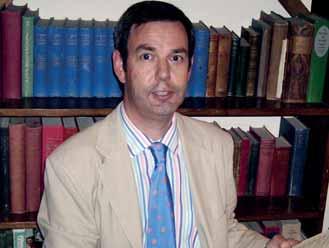
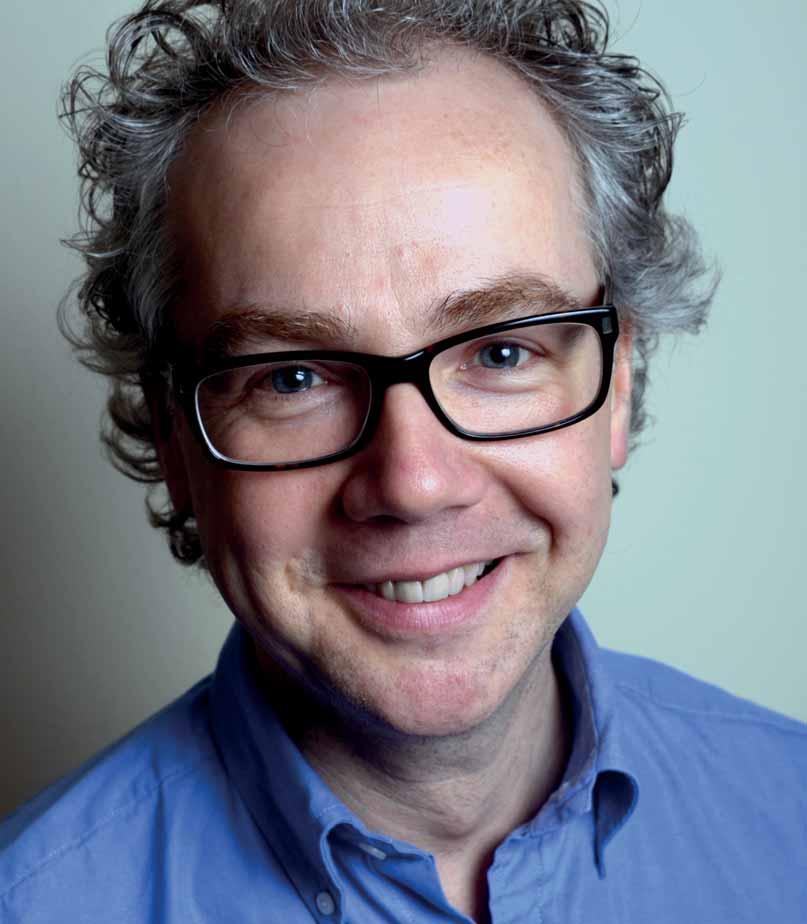
You are Composer in Association to the National Youth Choirs of GB. What does this involve, and how did it come about?
NYCGB has been a very important part of my career as a composer. I had been writing tonal choral music since the early 1980s (a genre that was entirely frowned upon during my university years) and, despite spending most of my days writing for several years after college, my music had received very few significant performances, I was unsure of my musical voice and I had yet to establish a secure technique and gain all-important
experience. Musically speaking, the turning point came in 1992. I was working as a schoolteacher and our first child was on the way; I spent the summer writing Salve Regina (SSAATTBB). The piece sat in a drawer for the next three years before Mike Brewer premiered it with the extraordinary NYCGB. Since then I have written many pieces and arrangements for all of the various choirs that make up the organisation including Laudibus (the chamber choir); I have chaired a composition competition with them, and we have recorded a CD (When I’m
Gone Delphian DCD34026). Salve Regina has since been published and has received performances in many parts of the world, including at the BBC Proms.
Is most of your work written to commission? What are you working on at the moment?
These days much of what I write is to commission. This is an interesting point, however, as it raises the question of what motivates composers. When time allows I still write music for pleasure, and I am now in the fortunate position that these new pieces will usually find a performance somewhere. Writing to commission for specific groups is both exciting and slightly terrifying. Commissions often force you to do things you might not normally consider (e.g. unusual instrumentation) which is refreshing; the challenge is to produce something that shows the choirs to their best advantage while still retaining one’s own musical vision. For amateur groups especially, the act of commissioning new works is a huge leap of faith, and it is the composer’s job to make that journey a successful one.
Regarding choral music, I would love to see a scheme that both promoted new music for cathedrals and choral foundations, and at the same time removed something of the usual pressures of writing to a commission. In my experience, it’s not unusual for cathedrals to have a couple of spare rooms somewhere, brilliant choirs and musicians on hand, several music services a week and a good tea-shop, but not much money to spend. There are a number of talented writers (old and, especially, young) who would surely benefit greatly from spending time observing, living amongst and even being mentored by these institutions; in return they could write new works which, aside from giving them an excellent opportunity to develop as composers, could potentially feed a significant number of high quality new works into the liturgy. I would urge all cathedrals and choral foundations where possible to offer a bed and a study to a composer for, say, a fortnight, along with free access to the tea-shop and observation at rehearsals. This wouldn’t detract from the usual fees for commissioned works from established composers (and could easily work in partnership), but it’s important to remember that composers write their best music when they are inspired. Anything that encourages a dialogue between choirs and composers and promotes creative thinking has to be a good thing.
Tell us about your sacred choral works. Sacred choral music formed part of my childhood and so I think it has always been in my blood. I have written canticles, anthems, carols, a setting of the Passion and the Song of Songs. I love the textural possibilities of the human voice. Sometimes a piece is written in response specifically to the text – perhaps a good example is the St Matthew Passion, at other times pieces reflect my personal circumstances: the poly-choral Ubi es? was written after the death of my eldest brother. Cana’s Guest was written for the wedding of a dear friend and colleague, Andrew Trewhella, and premiered by his school chapel choir. The piece has since been published and taken up by several cathedral choirs. It has been included in The Choirbook for the Queen, and by the end of 2012 had been performed at St Paul’s, Durham, Ely, Rochester, St Edmundsbury and Arundel cathedrals and the Chapel Royal, Hampton Court.
What is your day job? How do you fit composing into work and family life?
I am Director of Music at Norwich School. I love teaching at all levels and, although exhausting at times, it is a stimulating environment for any musician. Norwich School has a strong history of ensemble music making, so there are literally hundreds of pupils making music every week in bands, choirs, jazz groups and orchestras. The cathedral choristers (all of the boy choristers are educated at the school) sing the daily services, and several girls from the school’s own chapel choir are also in the cathedral’s girls’ choir. Ashley Grote has recently been appointed the new Master of Music, David Dunnett will continue as Organist, and we are all looking forward to some excellent musical opportunities between us in the years ahead.
As for fitting in family life and composing, I am not sure what to say! I work at least sixty hours each week as a teacher, so family life is pretty compressed. Composition tends to take place in the holidays although you never know when inspiration will strike: I once wrote a short setting of What Sweeter Music for the Bach Choir one Friday lunchtime when a rehearsal had been cancelled! I try to remember to carry a notebook, but I am inevitably caught out on the rare occasion when inspiration strikes. In this regard, the iPhone (to which I find myself umbilically joined, 24/7) is a fabulous invention as it’s a doddle to record ideas on the fly.
What groups or choirs have you worked with that stand out particularly?
I have genuinely enjoyed working with so many it is hard to place one above another. NYCGB, Commotio (who recorded Ubi caritas which subsequently became a regular item on Classic FM), Chantage (who performed Christ’s Love-Song as part of their winning programme for Choir of the Year 2008), London Oriana Choir and Wells Cathedral all hold special associations for me. Writing Welcome all wonders for Stephen Cleobury and Collegium Regale for a Christmas Eve broadcast from King’s College was also a very special experience. I also enjoyed an Easter broadcast with the BBC Singers under David Hill who performed Ubi caritas live to 27 countries.
Is there a particular genre you like composing for?
I enjoy so many different areas of music that I don’t really have a favourite as such. I would, however, like to write film music if the opportunity should ever arise, and I have an opera that needs to be written.
You are not only a composer but also an arranger of music. What have you done in this field that you are proud of, or that you enjoyed (or both!)?
Rewriting other people’s music is much easier than writing your own! Over the years I have arranged music for my own students, all sorts of choirs and all kinds of instrumentalists. I have arranged pop songs – including an a cappella arrangement of Paul McCartney’s Maybe I’m Amazed for BBC Radio 2, spirituals – among them When I’m gone, Christmas classics – including Santa Baby and older music – including Coventry Carol (which appears in Novello’s Noel 2). Arranging is hugely rewarding and enjoyable.
Sacred choral music formed part of my childhood and so I think it has always been in my blood. I have written canticles, anthems, carols, a setting of the Passion and the Song of Songs.
Does writing for cathedral choirs have an appeal for you?
Undoubtedly. Some years ago I was asked to give an address in Wells Cathedral to the musicians. I was struck by the fact that the average chorister performs more music in a week (in terms of hours’ worth) than a band such as Coldplay have recorded (at least in terms of albums) in a career to date. Please do not misunderstand me here! Firstly, I am a massive fan of Coldplay. Secondly, yes, I am comparing two rather different musical animals, but I am in awe of the musical discipline, skill and dedication that cathedral choirs enjoy away from the spotlight of the commercial marketplace. Making music in beautiful spaces has inspired musicians down the ages. I don’t wish to sound like a heathen, but it is really the work of mankind – in the construction and vision of the buildings and skill of the performers – that is the greatest source of inspiration to me in these wonderful places.
Do you play an instrument, and if so, do you still perform? Do you, or did you, sing?
I do a good deal of accompanying in my teaching, but I am a piano player not a pianist. I have a passion for playing jazz (though I have a great deal to learn). I still occasionally get asked to play cocktail piano for parties which is immensely enjoyable as I have a great fondness for the American Songbook.
Tell us about your collaborations with your brother Thomas. Does he also compose?
We have written music together for thirty years – songs, musicals, children’s cantatas and sacred choral works. He has an incredible gift for language and is always the one I turn to for advice about texts. He is a great lyricist who has the gift of writing both beautiful religious texts (e.g. Cana’s Guest) and laugh-out-loud lyrics (e.g. Abandon Sheep from the Christmas cantata Manger Tom). Aside from his day job in publishing, he is a composer in his own right, as well as an accomplished choral singer.
You have also written works for children – is this something you find rewarding?


Again, this is something I have done with my brother, Thomas. I like the moments he falls off his chair when he’s thought of another gag! We’ve written seven cantatas together, some were originally for single schools, but many were written for primary schools’ festivals in Surrey for Sarah Inglis (Jake and the Right Genie) and George Jones (Go, Lightning Vikings! and Do You Know What Kind of Day I’ve Had?). George has masterminded performances with getting on for 20,000 school children – and he’s still going strong. There’s a man that deserves an OBE! Although light-hearted in character, all of the pieces have a

deeper message. Our challenge is to make the music as accessible as possible to a wide range of schools, which includes producing backing tracks and tutorial materials. It’s great fun to do, but incredibly time-consuming. However, I consider it an essential part of my writing, not merely a sideline. Writing and recording Manger Tom remains a career highlight for me.
Do you think you have a recognisable style? In general, are your pieces challenging to play or sing?
With the children’s cantatas there is of course an element of pastiche as they are largely cast in the pop mould. However, I would like to think that my other music has its own voice and character. A while back Novello published Balulalow, a carol that was written when I was a sixth-former – some twenty years before it made it to print. Although very simple in its construction, I was surprised by how some of my musical fingerprints are already established in that early piece. The choral world is now awash with composers writing tonal, homorhythmic settings which exploit added harmonies, but my language has always been rooted in plainchant, jazz and, to an extent, popular music, as well as being based around traditional forms. Some of my pieces are challenging to perform – which indicates the good fortune I have had in working with some exceptional ensembles; others are simple and straightforward. Many of my pieces started life being written for my own pupils, so I understand the challenges of performers’ abilities and rehearsal pressures and so on. Regardless of level, I hope that they are all rewarding to perform in some way.
What is on the horizon next?
Ashley Grote has commissioned a new setting of evening canticles for Norwich Cathedral; they will be premiered in June and a BBC broadcast is planned for November. I am in the middle of revising a music theatre piece Salome (based on Wilde) for a student performance at this year’s Edinburgh Fringe Festival. I finished my largest choral work to date (for the Southend Festival Chorus) at the end of 2011 and am re-scoring it for full orchestra with the hope of trying to interest some choirs in performing it in a new version. For the last two years I have been writing and recording with the singer Vivyenne and the album is just about finished now. Cover Girl is a collection of songs that really represents my love-letter to pop music. I have recently attended recording seasons – My Promise by Chantage and In the bleak midwinter by David Hill and the RSVP choir; both are recently published by Novello and the recordings are due for release this autumn. 2014 will see the premiere of a new choral work for Sospiri (to mark the centenary of WW1) and a new piece for cello and strings for the cellist Katherine Jenkinson.


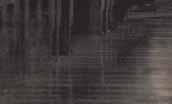




For almost a thousand years, a choral tradition has been at the heart of the Cathedral’s daily life. You can become part of this living tradition by supporting the young choristers and the musical life of this great church with a gift today, or a gift in the future through your Will.
To support choristers please visit www.stpauls.co.uk/choristers or telephone 020 7246 8333
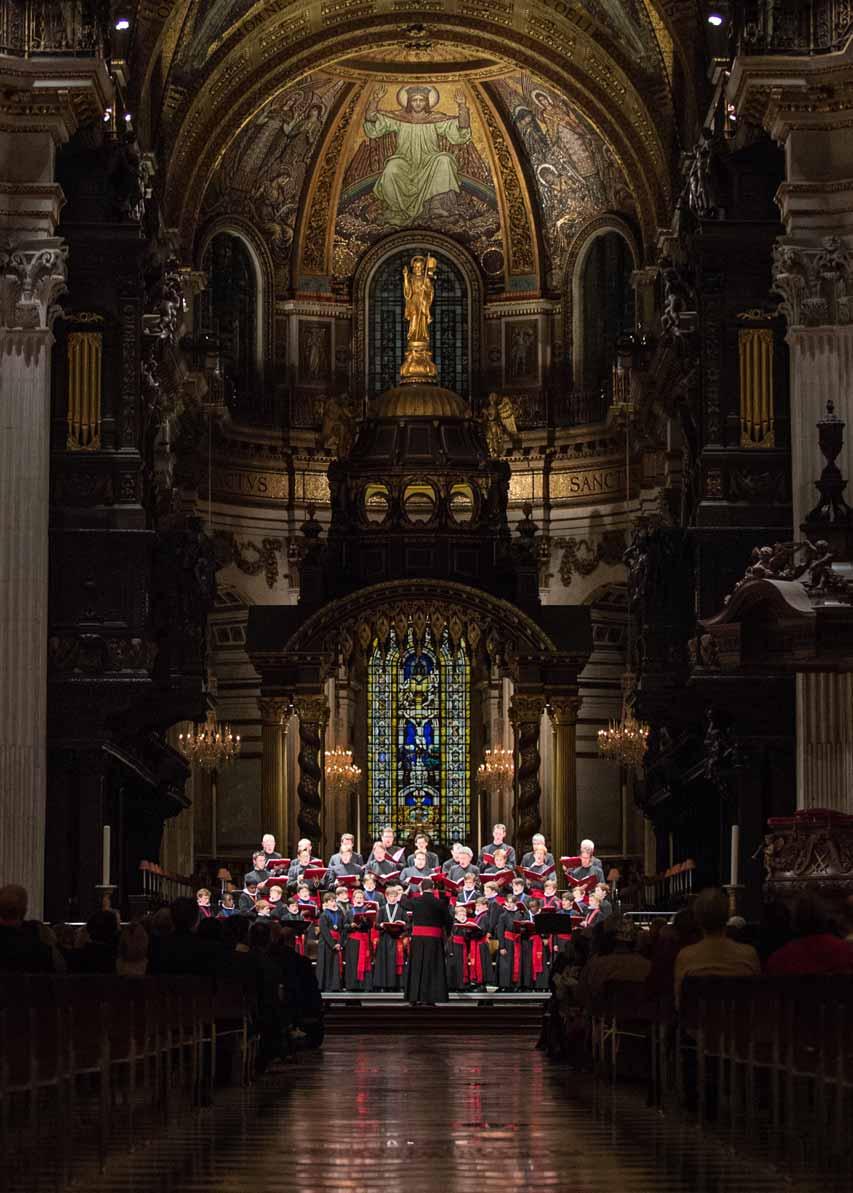

When it came to choosing which cathedrals to apply to for my gap year, and knowing that I wanted to travel abroad, I quickly discovered that wanderlust and the unusual requirements of an organ scholar elect were not necessarily happy bedfellows. I felt a bit like Goldilocks, confronted not by three but by hundreds of bowls of porridge, and cursed with an overly sensitive palate. I knew there were certainly plenty of cathedrals and churches in exotic places which would prepare me relatively well, but I was extremely cautious about ending up in a cathedral in Timbuktu, and subsequently arriving at St John’s having had a marvellous time but unable to play Stanford in C.
After months of relatively fruitless investigation, I eventually stumbled quite by chance across New Zealand’s ChristChurch Cathedral, and upon further research it seemed the perfect balance of adventure and preparation. Christchurch was founded by the Canterbury Association in 1850, and was designed around its cathedral, both spiritually and physically. The cathedral choir was modelled strongly on its English counterparts and the cathedral grammar school was built to educate the choristers. Services were sung five times a week, and the strong choral tradition had been further enhanced by the appointment of Brian Law as Director of Music in 2004. The choir had recently been on a very successful tour of
England, and enjoys a healthy relationship with Christ Church Cathedral Oxford, and a yearly exchange programme.
Apart from practising the Lord’s Prayer in Maori, I also invested in a new pair of hiking boots and I brushed up on New Zealand’s indigenous wildlife. Sadly, I had counted my kakapos before they were hatched; whilst I had been meticulous in my enquiries about choristers and services, I had somehow neglected to investigate Christchurch’s proximity to major fault lines. On the morning of 22 February 2011 I was horrified to see a picture of the shattered cathedral on the front page of the BBC News website: having weathered an earthquake of magnitude 7.1 the previous September, the cathedral and much of the central city had been destroyed by a mere 6.3 rumble.
A few frantic phone calls later, it was decided that I would spend the first half of the year as organ scholar at Auckland Cathedral and then move down to Christchurch at the beginning of February, when Jeremy Woodside, the assistant organist, was leaving. I duly departed from the UK at the beginning of August.
Auckland Cathedral I can only describe as something approaching a cross between Guildford Cathedral and a Bedouin tent. The interior is magnificent and is graced by a Harrison & Harrison organ, though this is shortly to be
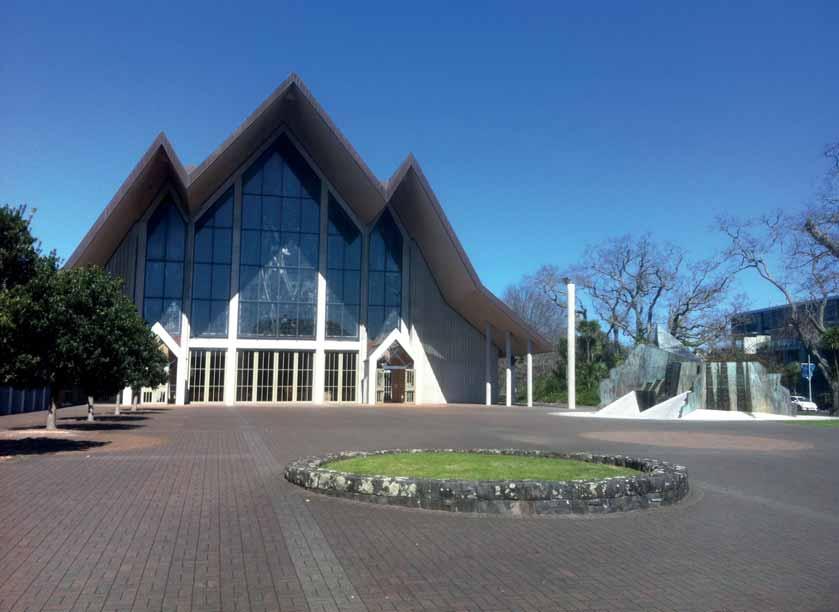
replaced as part of a redevelopment project that includes the construction of a new chapel. There are five choral services a week, provided by the three choirs: a boys’ choir, a girls’ choir and an adult choir. I arrived when the music department was in something of a state of flux before the advent of Timothy Noon, who had been appointed Director of Music. Within a month of my arrival, I had played for the televised state funeral of Sir Paul Reeves (the first Maori Governor General of New Zealand) and also given a recital on the Auckland Town Hall organ (stunningly refurbished by Klais) as a warm-up act for a performance by the pianist Piers Lane. It was opportunities such as these that I believe are one of the main advantages of a gap year abroad. Young organists are considerably rarer in New Zealand than in England, and as such I was probably given more playing experience and responsibility than I might have received in an English cathedral.
I played for three services a week at the cathedral, and spent most of the day working as a gap student in the music department of King’s College, a local secondary school. I lived in a small cottage in what is reputedly the most expensive street in New Zealand, not far from the Prime Minister, and from my driveway I could see three volcanoes and enough palm trees to convince me that this was truly an exotic gap year.
The arrival of Tim Noon was an extremely exciting time to be Organ Scholar at the cathedral; as a consummate musician and a very fine leader, Tim effected a change, over the four months in which we overlapped, that was nothing short of remarkable. The great sense of optimism engendered by Tim’s appointment led to a spectacular outpouring of enthusiasm, and the performance of the choir at the Festival of Nine Lessons and Carols was nothing short of magnificent. The cathedral choir grew rapidly and significantly, so that by the time I left it was more than twice the size it had been when I arrived, with around thirty singers. The choir recently performed, over five successive Sundays, five ‘Parisian’ masses – Widor, Vierne, Langlais, Briggs, and one composed by Tim Noon, and welcomed Olivier Latry as organist for the Widor. There is no denying that this is an excellent place to spend a gap year.
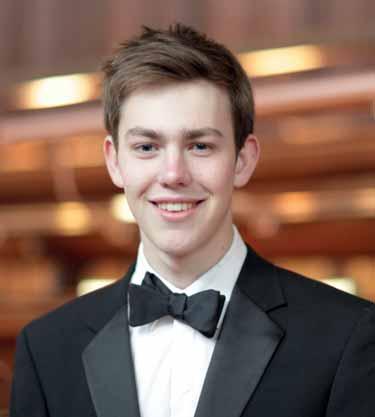
Another of the great advantages of a gap year abroad is the opportunity to travel. Over the course of the year, to mention but a few of my adventures, I climbed a glacier, held a cave weta, was taunted by keas, marvelled at cliffs illuminated by glow worms and sunned myself on countless beaches (including one on Christmas Day). I tramped along three of New Zealand’s nine great walks, climbed the mountain used to film Mt Doom for The Lord of the Rings, enjoyed a wine pilgrimage to Central Otago, visited Cape Reinga via NinetyMile beach, swam in a geothermal river, held a moa skeleton and visited a forest that was petrified 180 million years ago. I learnt to dive, and went on dives at both the world-renowned Poor Knights Islands and Milford Sound, as well as being swept along on the world’s fastest ‘drift dive’. I learnt to ski, ice-skated on a frozen lake and visited a staggeringly large number of film sets, some of them quite by chance. On leaving New Zealand, I stopped off for two and a half weeks’ diving in Fiji on the way home!
I arrived at Christchurch close to the first anniversary of the February earthquake. At that stage, most of the centre of the city was still cordoned off to allow for demolition – the cathedral wasn’t even visible. The centre opened up gradually over the time I was there, so that by the time I left it was possible to cycle through and look at some of the devastation. The destruction of the cathedral is a stark reminder of the
immense power of the earthquake: whilst the tower has been deconstructed, the main body of the building is only just standing, filled with rubble and pigeons, and exhibiting a gaping hole where the west end used to be. The city is covered with a patchwork of empty, gravel-covered parking lots, where residential and office blocks once stood, and buildings like the Catholic cathedral are shored up with hay bales and shipping containers. On a more positive note, however, there are signs of new beginnings around and about – several new buildings are under construction, including of course the cardboard transitional cathedral.
The cathedral community is currently worshipping in the chapel of Christ’s College, the local secondary school, and I had the good fortune to be organist for both the school and the cathedral. I lived with some of the school’s graduate tutors in a grand old colonial villa just across the road from the school, a convenience which proved very handy for midnight practice sessions. I enjoyed an excellent work/life balance, playing for four cathedral services and three school services a week, and I was able to attend lectures at the university during the day. Great preparation for Cambridge!
The cathedral choir maintains an extremely high standard and performs an important function in the musical life of the city, since its back row is comprised primarily of young singers, many of whom are university students. I thoroughly enjoyed the repertoire we performed, which included a rich diet of modern music such as Leighton, Bednall, Langlais, Dove and Halley, as well as most of the old favourites. It took me a while to become accustomed to the organ, which presents certain challenges to the accompanist due to its proximity to the choir (about two metres from cantoris) and the fact that it was designed to accompany eight hundred adolescent boys, but I found it a very satisfying instrument to play by the end of my six-month tenure.
The earthquake had caused one or two additional problems – much of the cathedral’s music library was destroyed when the tower collapsed, and the rest was, once reorganised, split between a shipping container and a small room lent to the cathedral by the college, which meant that laying one’s hands on a piece of music was often something of a treasure hunt. There was one memorable moment when there was a sizeable earthquake during the procession at Evensong, and several of the choristers seemed to share my view that running was the
best option. However, one look at Brian Law’s face encouraged me to stay at the console and keep playing!
The cathedral congregation has undoubtedly been drawn closer together by the earthquake; I found it to be an incredibly welcoming, close-knit community. Everyone is waiting expectantly for the new ‘cardboard cathedral’, something transitional to tide things over until a new, permanent construction can be built in the city centre. This has been designed by Shigeru Ban, the renowned Japanese architect responsible for the Pompidou Centre, and is essentially a giant A-frame of cardboard tubes positioned on a concrete pad. It should seat around 700, and there will be an annex made of shipping containers (now a regular sight in Christchurch), which will house the cathedral shop, the café, the choir vestry and other important buildings. The cathedral’s loss of income insurance ends shortly, and since a large part of its revenue was provided by tourist donations, the transitional cathedral is crucial for attracting visitors and getting the whole operation back on its feet again. The new building will be equipped with a state-of-the-art Rodgers organ
and the choir will resume its full schedule of choral services as soon as everything is ready, which should be by Easter 2013.
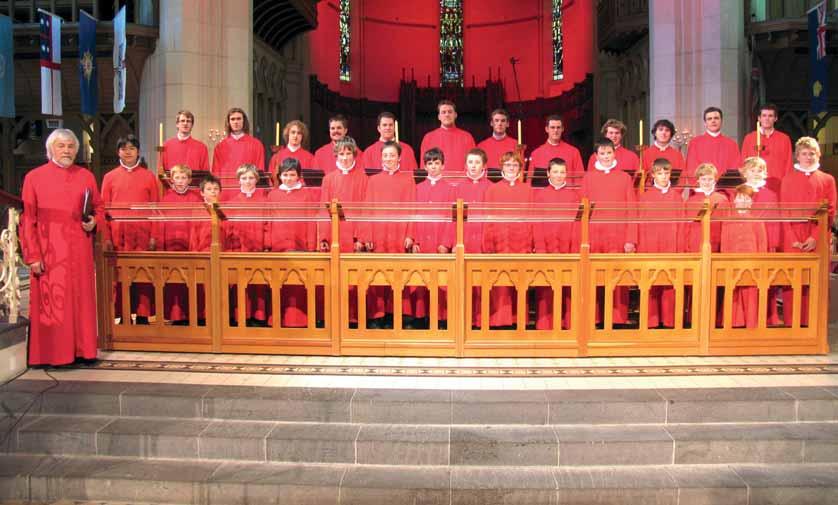
My experience at Christchurch was absolutely tremendous and I learnt a huge amount from Brian. I don’t feel that I was ready for the job when I arrived, but there’s nothing quite like jumping in at the deep end for raising your game. The dry acoustic in the chapel, the proximity to choir and conductor and the lack of a senior organist to help me out of difficulties have all provided an extremely steep and challenging learning curve, from which I feel I have benefited enormously.

It has been an extraordinary gap year, better than I could possibly have hoped for. I would strongly urge anyone who is thinking about taking a gap year (either singing or playing the organ) to consider New Zealand, as I had such a rewarding time. Both cathedrals welcome applicants for choral and organ scholarships.

Salisbury Cathedral Choir o ers a wonderful opportunity in a spectacular setting
Be a chorister for a day Sat 16 Nov 2013
Open day for prospective choristers in School Years
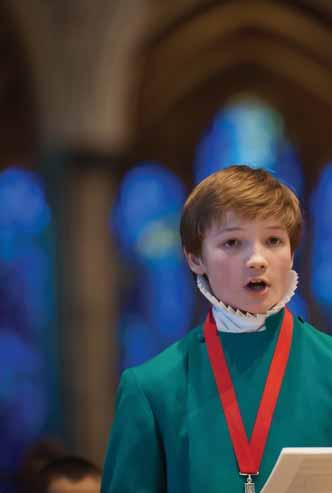
2, 3 and 4 and their parents
Voice Trial Workshop
Sat 7 Dec 2013
Voice Trials
School Years 3 and 4
Sat 18 Jan 2014 (boys)
Sat 1 Feb 2014 (girls)
Informal Pre-auditions any time by arrangement
All choristers are educated at the Cathedral School Scholarships and Bursaries available
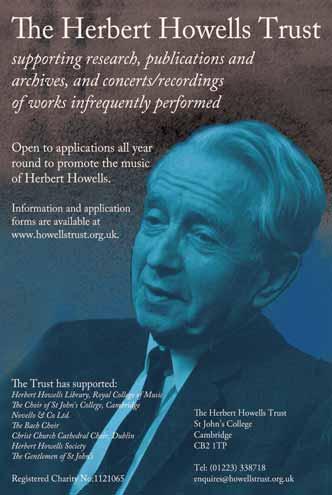
Further details: 07587 826622 chorister.recruitment@salcath.co.uk www.salisburycathedral.org.uk

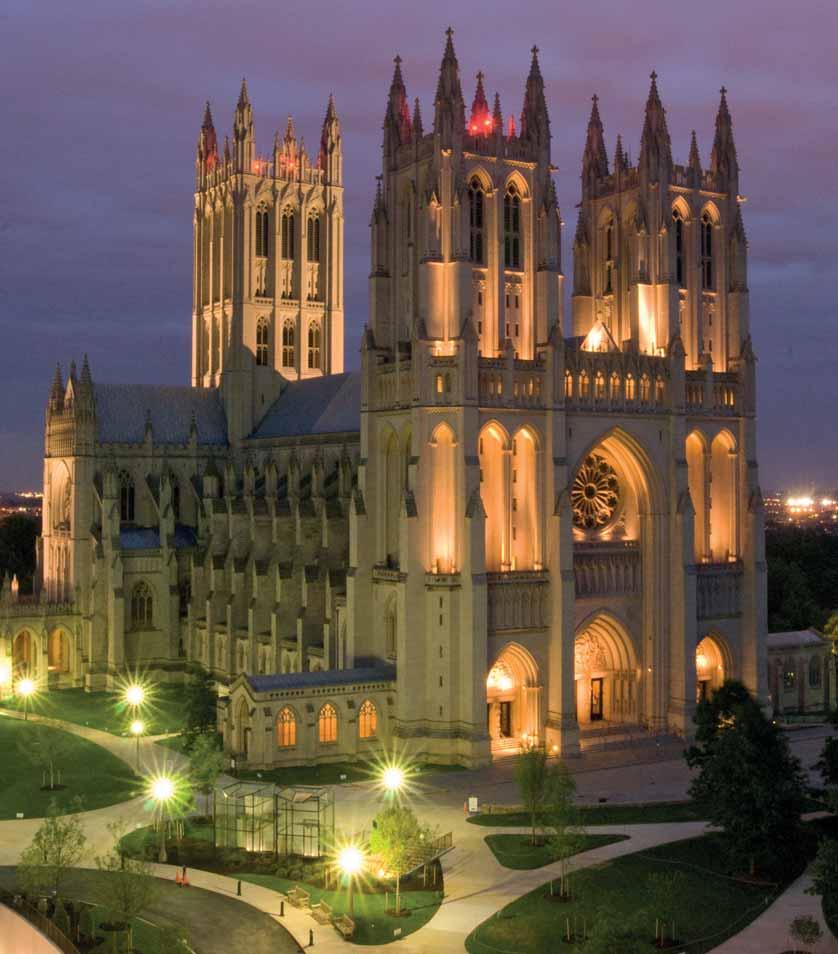
There are two hills in Washington DC: Capitol Hill, the political seat of the most powerful nation on earth, and Mount St Alban, the location chosen at the end of the nineteenth century as the site for a church ‘for national purposes’. Unlike other cities around the world where skyscrapers now define the landscape, DC building regulations maintain that the Capitol Building must be the highest point in the city.

Designed in the Gothic style and built using historic building techniques of Indiana limestone, the cathedral is similar in appearance to Canterbury Cathedral. The history of its construction follows similar tales from Europe: although there was no gap in construction due to a bad bout of bubonic plague, the cathedral did experience considerable pauses during the Great Depression and later, notably during the Second World War.
Beyond the shores of America there were some eyebrows raised at the inclusion of the word ‘National’ in the cathedral’s title. It came about, not as a gesture of arrogance or a twitch of insecurity, but more as a testament to the culture of the United States at that time. Most people will know that the country is defined by an immigrant population and governed by its citizens. Unlike the UK, there is no history of monarchy and all the concomitant pageantry and fanfare. A charter passed by the United States Congress on January 6, 1893, declared that a cathedral should be built as a ‘national house of prayer for all people’. Under the auspices of the Episcopal (Anglican) Church, the cathedral carries out its work as any other similar establishment does, with a round of daily worship at the core of its existence.
The musical life of the cathedral came into being at the same time as the foundations of its structure were being dug. A wealthy philanthropist, Harriet Lane Johnson, created an endowment for a choir school, intended very much in the model of a similar establishment in England. The cathedral close now comprises four institutions: the cathedral itself, St
Albans School for Boys, the National Cathedral School for Girls and a coeducational elementary school, Beauvoir. Each institution has its own governing body, but an overarching body, the Protestant Episcopal Cathedral Foundation, maintains the overall control of the institutions and is ultimately responsible for the buildings, grounds, and finance. St Albans and the National Cathedral School have long outgrown the size of a conventional choir school, with each school consisting of about 700 pupils aged 8 to 18. The two schools are now considered among the top in the country, a place where academic rigour and results go hand in hand.
The make-up of the choirs is varied: there are the boy choristers, who are pupils at St Albans School, a team of girls from the National Cathedral School, 12 professional lay clerks and a volunteer, parish-style choir. In addition to myself as Director of Music, there are two full-time organists, a full-time administrator, a full-time head of the chorister programme and a team of part-time piano and voice teachers. Within the academic year Evensong occurs on Monday through to Thursday, with visiting choirs providing Friday Evensong. Saturday does not have a sung service and there are three choral services on a Sunday. Under my purview also fall the cathedral’s bells. Within the central tower is a large carillon of 83 bells and a change-ringing chamber of 10 bells.
The boy and girl choristers receive a modest music education at school, and the cathedral’s music programme provides a more thorough grounding. Modelled on the UK’s Associated Board structure, choristers receive weekly singing and piano lessons and are required to complete a four-year course in theory. While the boys’ choir enrols its members at 8 years and goes through to 13, the girls start at 12 and go through to 18. The 12 choir men/lay clerks are a mix of people who have professional lives outside music but who are also accomplished singers and musicians. Additionally, with Peabody Conservatory thirty miles away in Baltimore, our constituency of professional singers consists of a regular

MichaelMcCarthy
writes from the heights of Washington’s National Cathedral.Photo © Craig Stapert Colourful procession in Washington’s National Cathedral © Charles Archambault All photographs courtesy of Washington National Cathedral
supply of postgraduate students who are often in the area for up to four years.
The cathedral’s liturgy is consistent with its sibling cathedrals in Europe, with the daily round of evensong forming a similar rhythm throughout the year. There are many high moments where grand music inspires the spirit and lifts the hearts of the many hundreds who attend. Similarly, there are other moments where on a wintry evening in February something quite magical can happen and only the choir, a couple of choir parents, and the clerics are there to experience it. Of course there are those moments where things don’t always go as planned, in a complex anthem or an absent-minded moment in a familiar set of canticles; it is in those moments that we are reminded of the humility with which we can and should offer our praise.
My musical upbringing follows an unconventional path in the church musical. Rather than follow the well-trodden route of Oxbridge organ scholarship to assistant organist and beyond, I started out my working life as a singer. Graduating from the Guildhall School of Music, I spent the next fifteen years working with many of the English professional choirs, most notably The Sixteen, The Cardinall’s Musick, and the Monteverdi Choir. Choir training had always been part of my life and the training of boy choirs had always been an important strand of my musical journey. In order to develop my experience as a choir trainer more fully, I was fortunate to spend some time at Christ Church Cathedral Oxford with Stephen Darlington and then a long period at St Albans with Barry Rose. With this experience under my belt, I stepped into the world of directing, first at Ealing Abbey in London and then to an exciting project at the London Oratory School. The London Oratory Church has long had a rich heritage of liturgical music and in 1997 its associate school, the London Oratory, opened a specialist music school to provide a broad musical education to 80 boys, 24 of whom were selected for a liturgical choir called the Schola. As the founding director of the Schola, I was given the task of developing a choir that not only provided the Saturday evening Vigil liturgy at the Oratory Church but also became a resource to the London concert scene and the world of Hollywood film soundtracks.
In 2003, somewhat out of the blue, there came an invitation to apply for the position of Director of Music at Washington National Cathedral. After nearly 20 years in the relatively safe confines of self-employment came the option for a ‘proper’ job. By that time I had also stepped into an arts administrative role at the Monteverdi Choir, so one way or another my life was taken up with directing, singing, and administrating. The idea of consolidating my scattered career into one place was compelling and my perception of what the cathedral needed seemed to align with my skills, experiences, and ultimately my passion.
The programme at the cathedral presents challenges and rewards in equal measure. Upon arrival, the initial task was to reorganize a programme that was in some disarray and to find a rhythm and stability that was going to be durable and effective. As none of the cathedral choristers board, a real challenge has been to strike a balance between the needs of families for a reasonable life at home and the cathedral’s demands on the choristers. Ten years on, this remains
ongoing work, but much has been achieved and now there are many former choristers who are beginning to make their way in the music world.
The cathedral is a destination for over half a million tourists a year. These visitors come to experience the whole structure, the stained glass, the carved stone, and the lush grounds, amongst other things. Art and music has a role to play in developing that experience and in so doing has the potential to reach people in a unique and powerful way. Similarly, there is a need for an ever-growing ministry that celebrates the many diverse cultures and faiths in the United States. Being the seat of the Episcopal Church but also the place where the country convenes for the funerals of presidents or gathers for national mourning or celebration, the cathedral needs to be both nimble and expansive in its worship.
We have been blessed to have among the staff, both current and former, great musicians who have maintained a strong musical liturgy for over 100 years. In addition to seven sung liturgies a week, many visitors come to hear the weekly recitals throughout the year, with organ concerts providing significant draws at Christmas, Easter, and the Independence Day Concert on 4 July. On the choral front, we perform a number of orchestral concerts each year and draw six to seven thousand people throughout the year. In December, there is demand for not just one but three performances of Handel’s Messiah, and the St John Passion on Palm Sunday is a major draw in the city. The choirs also perform beyond the cathedral walls, and the fledgling professional concert choir, Cathedra, made up of talented local professional singers, is beginning to attract attention around the country.
One of the more immediate challenges is the cathedral’s organ, which is in a critical state of disrepair. At the time it was conceived and built by Ernest Skinner in 1938 the building was only a third of the size that it is now. During the intervening years, additions and reconfiguring have taken place on a grand scale, but all this work took place in the 1960s and 1970s, before the building’s long nave was even completed. Couple this to the fact that today’s liturgy is evolving in a more musically inclusive way, we need to find a format that can lead worship throughout the length of the building (east to west is a quarter of a mile in length). Having two instruments, one at either end and playable from one console, seems like the best solution. It is, however, an expensive option and some way away from being realized.
On reflection over my time here, it is clear to me that the untapped potential for the music programme remains considerable. Consolidating the educational aspect of the programme is essential and finding a way to make it financially secure is probably going to occupy the rest of my time here. We are in a moment where it has become clear just what a jewel the music programme is to the cathedral and to those who experience it. While it is too early and perhaps immodest of me to start thinking of legacy, it is my desire to leave this place stronger than I found it, not just musically but also structurally and financially. The work of this cathedral and others like it is just too important to be under the cloud of fiscal anxiety. How we act changes lives; it is our privilege –as it is our responsibility –to ensure that our work in the church gains in strength as it progresses.
...I was given the task of developing a choir that not only provided the Saturday evening Vigil liturgy at the Oratory Church but also became a resource to the London concert scene and the world of Hollywood film soundtracks.

Age: 42
Education details:
North Cestrian Grammar School, Altrincham, Royal Northern College of Music and Manchester University
Career details to date:
Organ Scholar, York Minster 1992-1994
Assistant Organist, Lincoln Cathedral 1994-1999
Sub-Organist, Manchester Cathedral 1999-
Tutor in Organ Studies, RNCM 2000-
Were you a chorister, and if so, where? Did you enjoy the experience?
Yes, I was a chorister at St Ann’s Church, Manchester, which is a beautiful church in the heart of the city centre. It was consecrated in 1712. There is a large choir there and the repertoire is varied and challenging. The Director of Music, Ronald Frost, has had a profound impact on my musical life. He taught me the organ from the age of nine up to and including conservatoire level. I loved singing in the choir there and learnt so much from the experience.
What do you enjoy most about being Sub-Organist at Manchester?

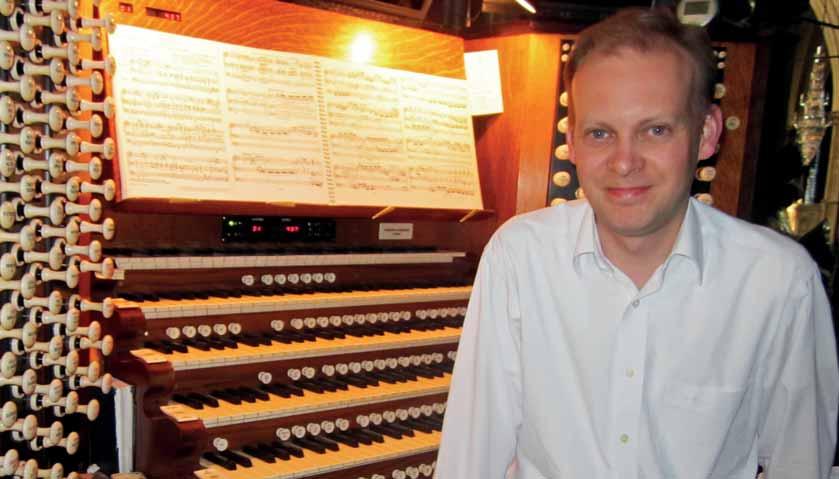
The cathedral choir is really wonderful. The cathedral choristers all attend Chetham’s School of Music, across the road from the cathedral. We have six professional lay clerks and a list of fine deputy singers, some of whom are students at the RNCM and Manchester University. Obviously it’s very exciting to go on tour with the choir (we have been on quite a few in my time) and to record and broadcast, but what I really do enjoy is the daily pattern of cathedral services and the great diversity of repertoire which we cover throughout the liturgical year. I’m very fortunate to have such an inspirational colleague as Christopher Stokes.
What or who made you take up the organ?
I started to learn the piano from the age of six. My family is pretty musical – my mother teaches the piano and my father played the saxophone. My grandfather was a jazz musician. There was always a lot of singing in the house. Ronald Frost offered to start teaching me the organ when I became a chorister at St Ann’s and I jumped at the chance. I really caught the bug when I went along to one of the early Oundle Organ courses in 1987.
When you were at school, did you think you might end up where you are now?
I have never really wished to pursue any other career than

music, and I’m fortunate that Manchester allows me to work in a variety of spheres in the profession. The cathedral obviously takes up a significant part of my timetable, but I also love teaching – at the RNCM and privately, orchestral work and broadcasting. There is such a vibrant musical scene in the city.
Do you think your time at the RNCM was good training for the skills needed as a cathedral organist?
Yes, in many ways. Apart from the intensive organ, piano and harpsichord tuition, the college offered a great oversight of many genres of musical repertoire. There were many opportunities to perform in public, which was good training for dealing with nerves. We also received tuition for the RCO diplomas. I also learnt so much during my time as Organ Scholar at York, from Philip Moore and John Scott Whiteley. Those were some of the happiest years of my life, so far.
The Manchester Cathedral Choir has both boys and girls on the top line. Do you find training a mixed choir any different to training a boys- or girls-only choir?
They work very well as a team, although one tends to find that girls and boys adopt a somewhat different approach to the process of learning and performing. We try to maintain something close to equilibrium between the sexes. Obviously, we strive for a unified timbre, blend and balance.
What work do you do for the BBC? How do you manage to fit it in with your other roles?
I mostly work as organist and director for Radio 4’s Daily Service, which comes from a church in Didsbury in South Manchester most weekday mornings. The programme goes out live at 9.45am. There is a group of professional singers, and repertoire is based around readings and weekly themes. The BBC unit for religion is now based at MediaCity in Salford. I have also worked on programmes such as Songs of Praise, In Tune, Sunday Half Hour and Young Musician of the Year. Daily Service comes off air at 1000, so it can conveniently be shoe-horned into my other work!
What organ pieces have you been inspired to take up recently and why?
I’m just learning the Duruflé transcription of Tournemire’s wonderful improvisation on Victimae Paschali for the end of a broadcast on Easter Day. There’s an incredible sound-world to his music and some ravishingly beautiful harmonies within this piece. Tournemire really was a genius!
Have you been listening to recordings of them and if so is it just one interpretation or many and which players?
I’ve heard a number of recordings and performances of the work over the years. Recordings can be helpful for interpretation, but I think it’s always of paramount importance to follow the printed score and develop one’s own unique perspective. Of course, the instrument and setting will inevitably influence the way the piece is performed.
What was the last CD you bought?
Bach’s Mass in B minor, performed by the Dunedin Consort, directed by John Butt.
What was the last recording you were working on?
Choral and organ music by Philip Wilby. This was made with Matthew Owens and the Exon Singers. We recorded it at the very end of December 2009 in Wells Cathedral. There’s some
really wonderful music on that disc and the choir is sensational! (See Review p56)
What is your favourite organ to play?
Lincoln Cathedral
What is your favourite building?
King’s College Chapel, Cambridge
What is your favourite anthem?
Blest pair of sirens (Parry)
What is your favourite set of canticles?
Howells Gloucester / St Paul’s / Collegium Regale…
What is your favourite psalm and accompanying chants?
Psalm 148 / Stanford
What is your favourite organ piece?
Prélude et Fugue sur le nom d’Alain by Maurice Duruflé
Who is your favourite composer? Bach
When is your next organ recital? Which pieces are you including? Chester Cathedral in a few weeks’ time. Passacaglia in C (Bach) and Sonata Eroica by Joseph Jongen.
Have you played for an event or recital that stands out as a great moment?
I have played for a number of Royal visits, during my time at Manchester. Also, numerous orchestral concerts with great conductors at the Bridgewater Hall. Certain concert venues are very special. I have played at Westminster Abbey, St Paul’s Cathedral and King’s College Cambridge a few times, and that really was an amazing privilege.
Has any new music particularly inspired you?
Oh yes, so many really exciting contemporary composers. I particularly enjoy the music of Judith Bingham, James MacMillan, Francis Pott and Judith Weir.
How do you cope with nerves?
Nerves can be used to one’s own advantage, I think. A performance can be lifted by a shot of adrenaline. It’s important to channel any nerves 100% into the performance of the music, and to block out any outside forces.
What are your hobbies?
I’m interested in architecture, cinema, television and nonclassical music! I go to a lot of gigs…
Would you recommend life as an organist?
I would recommend life as a musician primarily, and as an organist as some part of that.
What are the drawbacks?
As Tom Winpenny quite rightly pointed out, cathedrals are becoming increasingly busy places, and Manchester is no exception. We have an extensive education programme and numerous fundraising ventures. It can be quite hard finding adequate time to practise in the cathedral, particularly at the times of the year when you need it the most. Organists do sometimes need to be night owls!

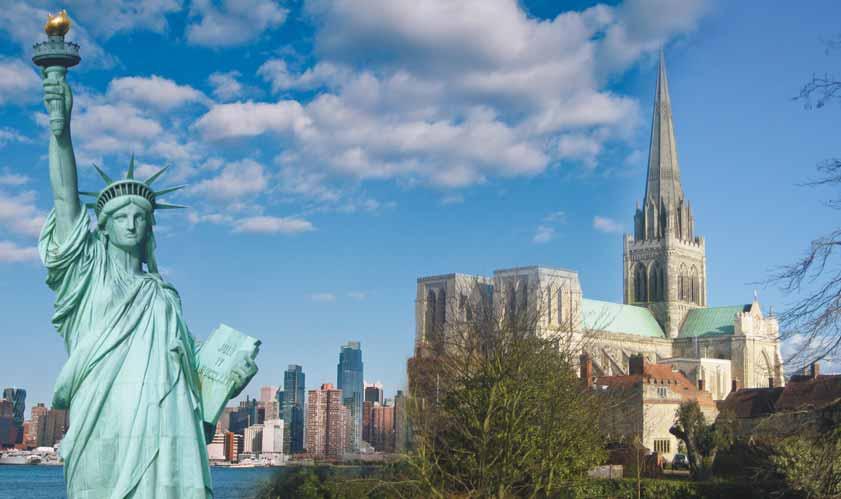
Chichester Cathedral has a very successful exchange policy with St Thomas choir school in New York, which started in 2011. Each year one or two choristers from either Chichester or St Thomas attend the exchange school for a period of about a week, taking pot luck as to what is going on in the host country. For the students involved it is a chance to learn how a different choir school works, sing lots of different music and make new friends. Christian Pethick (currently Chichester’s head chorister) was in New York for the last week of March 2012. In his diary he recorded some thoughts on his time there:
Breakfast on the Sunday was very filling, and we had an easy day compared to Chichester. The church is quite dark, so it would have a great atmosphere in the run-up to Easter day. There was a full rehearsal followed by the first service, during which there were some challenging moments in the mass. Lunch afterwards was one of the best I have ever had… The music at Evensong was great, the best piece was new to me –Naylor in A.
The St Thomas boys don’t sing every day, and Christian was able to go to lessons at the school. A trip to the Empire State Building, Chinatown and a museum was fitted in without trouble. The big event of his week in the US was a performance of the fantastic St John Passion. It’s a great piece with many well-known hymn tunes used in the chorale sections such as St Theodulph(All glory, laud and honour). The only problem is… the piece is in German! In the final rehearsal it was really exciting hearing the baroque orchestra and all the soloists. My favourite part of the concert was listening to the Evangelist (sung by Rufus Müller). The
concert was a happy success but I was also sad because it would be my last time singing with the choir. I had some pictures taken of me with Noel and Matthew (the boys who came over from New York last year) and Dr John Scott.
For the New York boys, they were able to join in with the Southern Cathedrals Festival preparations, and sing in the Eucharist accompanied by the orchestra. They threw themselves into everything and, according to Chichester’s Organist and Master of Music Sarah Baldock, “were brilliant fun, impeccably behaved and sang with all their heart”. Being chosen to be an Exchange Chorister is a high honour: boys have to be good sight-readers, comfortable at boarding away from home, happy to eat anything, have a voice that blends well with others and be generally cheerful and resilient” – no small order!
This year, Chichester is the host for the Southern Cathedrals Festival (18 - 21 July), celebrating in particular the centenary of Benjamin Britten with his Hymns, Missa brevis, Rejoice in the Lamb and St Nicolas, a colourful oratorio depicting the life of the saint from birth to death. Mark Wilde will be singing the title role, Southern Sinfonia will be the orchestra and the piano duettists are Salisbury’s David Halls and Winchester’s Andrew Lumsden.
The 50th anniversary of Poulenc’s death is being commemorated with a performance of his Organ Concerto, the Salve Regina, and Litanies à la Vierge Noire, a beautiful uppervoices work to be performed by the girl choristers.
There is also plenty of music from other centuries: Scarlatti’s 10-part Stabat Mater is the centrepiece of the Friday evening concert, and music by Tye, Byrd, Purcell and Haydn
It’s much bigger and the director has red hair…”
features during the three days. Former Chichester Assistant Organist Mark Wardell is being welcomed back to give the organ recital with big screen and an improvisation. Mark will also be playing keyboard at the Fringe Jazz Club.
One of the highlights of the festival will be James MacMillan’s commissioned motet The Offered Christ, to be premiered during the Saturday morning Festival Eucharist.
Tickets available from 1 May. www.chichestertickets.co.uk www.southerncathedralsfestival.org.uk
(launch concert 12 July with Philharmonia Orchestra and Jennifer Pike)
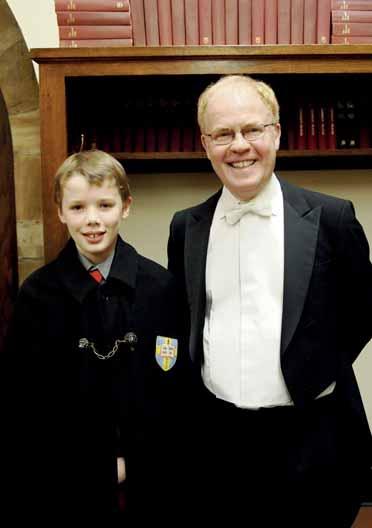
Emma Johnson & Pascal Rogé
‘ Great musi c and musi ci ans i n
Cambri dge’s histo ric venues’
Mikhail Rudy English Voices
Monteverdi Vespers
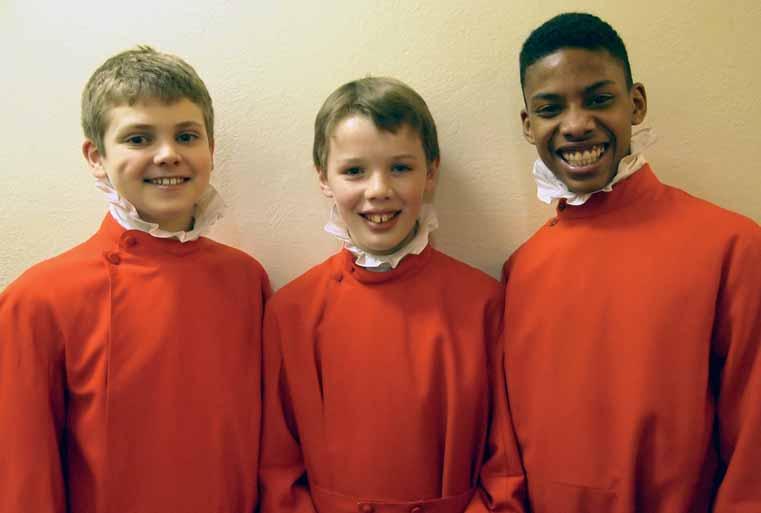
Festival Chorus
For a free brochure: info@cambridgesummermusic.com or 01223 894161
Brahms Requiem
www.cambridgesummermusic.com

There is now a completely new Ancient and Modern – the ninth edition, which both celebrates the 150th anniversary of Hymns Ancient & Modern and brings together the best of Common Praise and Sing Praise. While the editors of Common Praise wrote that they had ‘tried to select the best hymns, those which will last’, the editors of Sing Praise said they were “on the lookout for ways to ‘sing a new song to the Lord’, while also valuing what is tried and tested”. Thus there is in this Ancient and Modern the widest range of style and heritage of hymns and songs that has yet been produced.
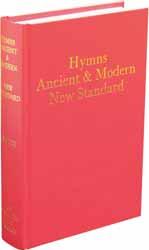
It is also the largest book to date, with 800 items. While other hymn books have even more, the editors are acutely aware of the bulk of the book and the problems this can cause. Editing has been carried out with caution, respect and a clear eye to both the past and the future. Eighty-six of the 273 hymns from the original edition of 1861 remain in this book (just under a third), and there are 50 items in it that were not in Common Praise nor Sing Praise, drawn from a wide range of contemporary sources and traditions.
Some hymns have been altered slightly, where widely accepted alternatives exist elsewhere and are in use, or where the flow and rhythm of the text make a small alteration unnoticeable. The language we speak and sing has political, theological and personal significance; the editors hope to have sailed a course between the rocks of poetical butchery on one side and gender obsession on the other! Similarly, texts have only been updated where there is precedent or no apparent damage to the original.
Care has been taken to ensure that arrangements of contemporary items are musically satisfying for worship leaders, choir members and congregation alike. The main purpose lying behind the choice of hymns concerns their

suitability for congregational singing, with accompaniments and arrangements suited to their genre. Many new arrangements have been commissioned, and in addition, a generous range of descants is included to enrich the overall musical impact of many of the well-known hymns.
The book follows a seasonal approach but also contains significant sections based on liturgical use and ‘position’, and thematic suggestions too. There are several indexes, as well as a suggested selection of five hymns for a service following the Common Worship Sunday Eucharistic Lectionary, as Common Praise did. It is hoped therefore that the material is both accessible and approachable.
To celebrate publication of the new A&M you can buy copies at a 35% discount, allowing your church or school to make a substantial saving. This offer will close on 30 June 2013. Visit www.newaandm.co.uk for details.
The team responsible for the new book is:
ANNE HARRISON, Editor of the RSCM’s Sunday by Sunday liturgy planner for ten years and chair of the group which produced Sing Praise.
JOHN BARNARD, Composer, arranger, choir-director and organist (FRCO).
TIM RUFFER, Head of Publishing, RSCM.
GORDON GILES, Vicar of St Mary Magdalene, Enfield, previously Succentor of St Paul's Cathedral.

1. Thomas Barrow (1712-1789). Founded on the Bells of St Margaret’s, Westminster. [AKA The Bell Chant]. The Westminster Abbey Chant Book 1894. Edited by Revd John Troutbeck and Sir John Frederick Bridge. Novello.
T. Barrow
One of many versions of this chant but this form is from the oldest source.





3. Matthew Cooke (1761-1829). From a Coronation Anthem by Thomas Attwood (1765-1838). Cathedral Chants c.1830. Edited by Alfred William Bennett (1805-1830) and Dr William Marshall (1806-1875). Mori & Lavenn.
M. Cooke from T. Attwood’s Coronation Anthem
4. Dr William Crotch (1775-1847). From Josquin Des Prez [Josquin Lebloitte Dit Desprez] (c.1450/5-1521). A Collection of [74] Single and Double Chants 1842. R. Mills.
Dr W. Crotch from Josquin Des Prez
2. Sir John Frederick Bridge (1844-1924), from The Funeral of Queen Mary 1695, ‘Canzona’. Henry Purcell (1659-1695). The Westminster Abbey Chant Book 1894. Edited by Revd John Troutbeck and Sir John Frederick Bridge. Novello.
Sir J. F. Bridge, from H. Purcell
5. Sir John Goss (1800-1880). From Ludwig van Beethoven (1770-1827). Arranged from a movement from Beethoven’s 7th Symphony. Church of England Psalmody 1880. Edited by Revd Henry Parr (1815-1905). Novello.
Sir J. Goss, from L. van Beethoven
6. Benjamin St John Baptist Joule (1817-1895). From [Jakob Ludwig] Felix Mendelssohn (1809-1837). Chants and Responses 1877. Edited by B St J. B. Joule. Novello.
B. St J. B. Joule from F. Mendelssohn







This second article is a follow-up from the previous one on Anglican Chants that have been arranged from other choral and miscellaneous works. I hope the following are of some interest to you.
‘Là
J Turle from L
The National Archive of Anglican Chants currently has, (as of mid September 2012) 16279 chants by composers from sources. My thanks to the people for sending me their chants and sources without whom the tally would be considerably lower. There is a Facebook site called ‘The Chant Appreciation Society’ that may interest you. Currently there are 750 members, the number is growing daily. We share chants, comments and lively but [mostly] kind
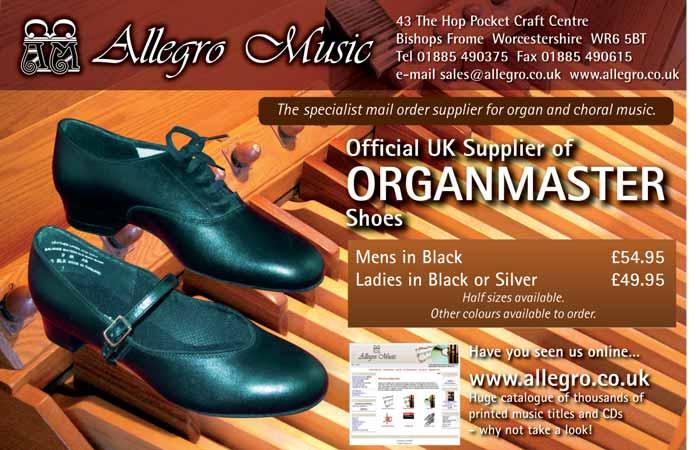






dead?
I can be contacted on peterkirk1685@yahoo.co.uk.
For an increasing number of arts organisations, education and outreach work plays a central role, and The Sixteen has embraced this with enthusiasm – since 2011 a dedicated ‘Participation & Learning Co-ordinator’ has been employed to enhance the scope and content of the group’s work with children and young people. The annual Choral Pilgrimage concert tour, which takes The Sixteen to more than 30 venues all over the UK, provides a central pillar around which a comprehensive education programme has been developed.
The programme’s five different themes include a chorister masterclass series, use of signing in concerts in association with the charity Music and the Deaf, 11 choral workshops for amateur singers across the UK, and an Insight Day run by
singer and scholar Sally Dunkley. Throughout the tour members of the group engage with over 2,000 people, the majority of them in the final project, the Schools’ Matinée Series. Part of The Choral Pilgrimage 2013, the series has roots in a venture dating back to 2009 when The Sixteen was approached by Sing Up and the National Centre for Early Music to take part in an innovative nationwide singing scheme to celebrate the 350th anniversary of Henry Purcell’s birth. Over 600 children aged 8-11 were involved in performances across England, starting in Bury St Edmunds and concluding at the Music for Youth Schools Proms at the Royal Albert Hall. Young people from four cathedral cities came together with music leaders from the Choir Schools’ Association and professional singers from The Sixteen, enabling the

youngsters to participate in a series of matinée concerts with The Sixteen.

Harry Christophers, the group’s founder and conductor, was delighted that The Sixteen could join in: “For several years The Sixteen has been committed to education work, and we are constantly looking to expand the scope of our activity in this area. This is the first time we have been associated with something quite on this scale and, more importantly, with such young children. We are delighted to have the opportunity to introduce them in an exciting way to the music of our heritage.”
The Sixteen has raised funds since 2009 to keep the core of the idea alive, and Schools’ Matinée Concerts are available now in Croydon and Peterborough. The concerts are designed not only to give primary school pupils from underprivileged areas the chance to access choral music, but also to offer training to their teachers and schools. Each year the focus is on a selection of pieces from the Choral Pilgrimage: in 2012 it revolved round plainsong and parody masses, using Brumel and Josquin as examples, while this year it will be on the evolution of Allegri’s seminal Miserere compared with James MacMillan’s contemporary setting of the same text.
At the very beginning, an animateur is commissioned to draw the central themes from the Choral Pilgrimage repertoire, devising from these a creative workbook to help the young people understand the basics of the music. A participation song, which the children sing with The Sixteen at the matinée concert, is composed and recorded. The teachers take part in an INSET training session with the animateur and a member of The Sixteen before exploring the
contents of the workbook with their pupils and learning the song in preparation for the finale. A few weeks before the concert, additional workshops and singing sessions are offered to support both teachers and children.
The finale is deliberately scheduled for the same day as The Sixteen’s evening concert in the schools’ local town, which means that the children are able to sing with the full choir under the direction of Harry Christophers. During an hourlong interactive concert, hundreds of pupils are able to meet the singers, hear the choir perform several excerpts from the Choral Pilgrimage repertoire, sing their participation song, conduct the choir and hear the first performance of the new piece created during the workshops a few weeks beforehand.
For many of the young people involved, this is the first time they have experienced live choral music and been able to work with professional musicians. The Sixteen teaches understanding of the compositional techniques and musical inheritance of early choral music, whilst building confidence in group singing and creativity, communicating ideas, and giving young people the opportunity to perform in the stunning surroundings of cathedrals and minsters. Schools with no regular musical events or specialist teachers are empowered to lead musical activities, and several of them retain the new participation songs for assemblies and class singing.
Looking ahead, The Sixteen is committed to developing this project over the next 3 years, in collaboration with Tower Hamlets Arts and Music Education Service, and aims to increase the numbers of participants involved. More details on any of this work can be found at www.thesixteen.com.
“The Sixteen’s workshops were brilliant. Our girls loved the singing and got a great deal from it. Our Year 5 class really enjoyed the composing workshop and the results were excellent. For me, this was one of the project highlights. Hugely enjoyable and very valuable.” Gareth Hemmings, Old Palace School, Croydon

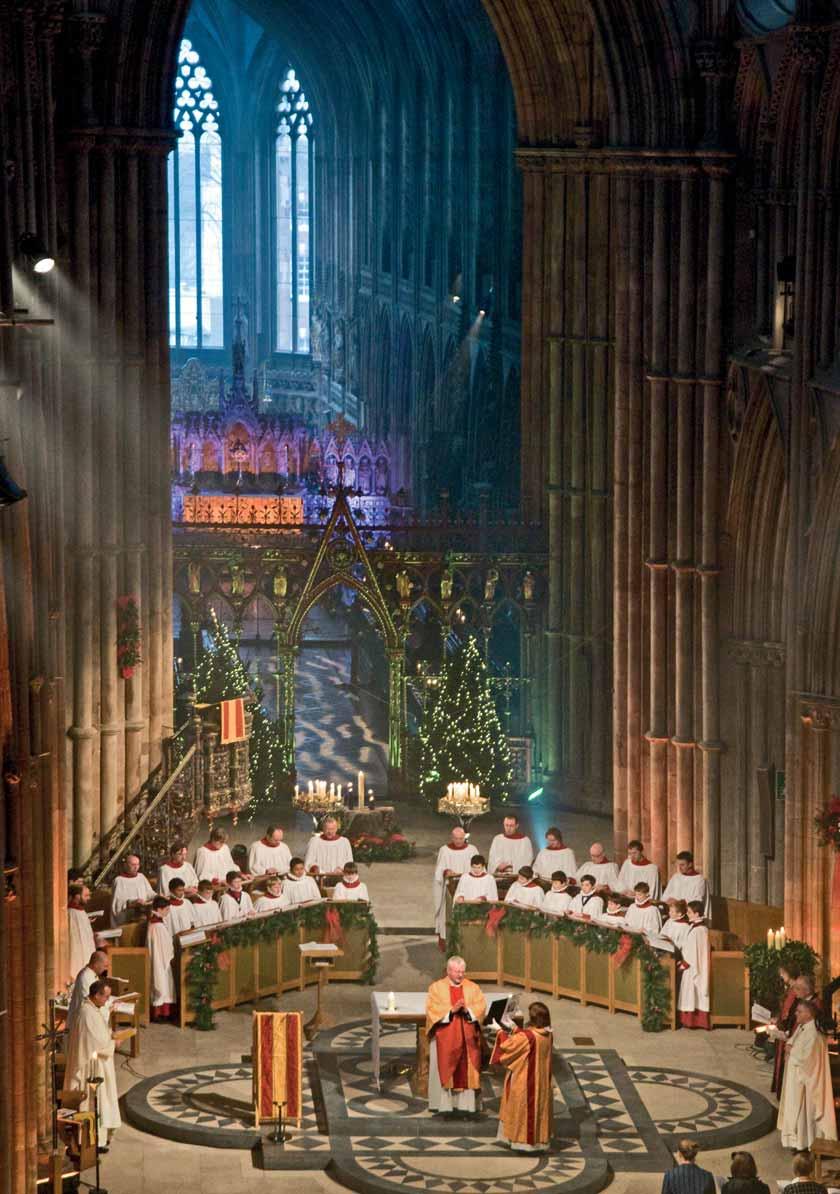
That cathedral music needs friends, and benefits from their generosity, are statements presumably beyond critique. Certainly, as a choral foundation which has received large sums of FCM money in past years (most recently, £20,000 in 2010), Lichfield is well placed to speak with a lively gratitude for all that FCM is. As a relatively small foundation that has managed to retain nine lay vicars, our own cathedral school, a fully-boarding boys’ choir (and now, through the imaginative collaboration of our school, a girls’ choir to sing a weekly evensong plus two weekends per term), I hope that the proof of the pudding is in the hearing. It is possible that those of you who live very far from the heart of England (as the Midlands have craftily re-branded themselves) perhaps caught us on BBC Television on Christmas morning. I am quietly hopeful that you will have concluded that the state of music and liturgy at Lichfield is in a satisfactory condition. Even we smaller cathedrals are able to do ‘the feats of a lion in the figure of a lamb’.
It is, however, an unfortunate reality that even large monetary gifts realise only modest returns during times of economic decline: £20,000 well invested currently yields a few hundred pounds a year. This would be fine if we were living in a Jane Austen novel, but sadly our real, live ‘FCM Lay Vicar’ would be on very short rations if we were to pay him only the return on that donation. It nonetheless remains the chapter’s desire to use it, together with past and future gifts, to finance the wages of one of our younger gentlemen. The
allocation is perhaps partly symbolic, but laudable for all that. We are right (for all sorts of clear reasons) to signal our desire to encourage young singers in our choral foundations, and even from within the setback of recession we are grateful to the FCM for helping us to do this.

But the reason that cathedrals are thankful to God for all their Friends is greater than can be expressed through an accountant’s ledger. The difference an FCM grant makes is of course financial, but rather more besides. Those engaged in cathedral ministry are gladdened by the increasing profile enjoyed by cathedrals at the heart of our national life – and with very nearly half of all visitors claiming to have ‘done business with God’ by the end of a visit, the cathedrals’ role is demonstrably more than cultural. At the same time, cathedral Chapters and Councils and Colleges of Canons are all too aware of the immensity of their responsibility in caring for these national treasures, not least against the forces of ageing and gravity, a contest unaided by central government, and supported principally by the generosity of others.

To know that there are significant numbers of people who share our conviction that cathedrals are crucial to the life of nations is an encouragement beyond words, especially as it is a view far from unequivocally voiced by the Church at large! FCM’s own drive at this time to increase their membership substantially is a source of further hope. Some of those who hear the FCM call may be most attracted by a cathedral’s
fabric; others, yes, by its music and worship; others still by its cultural history or evangelistic potential. And all have their part to play. Monetary gifts are a numerical expression of their concern, and of the work they have done, perhaps over many years, to make a contribution possible. Donations appear as a set of figures on a computer screen, but in reality they are acts of pure solidarity that say, We too think that this work matters; we too desire to be numbered with past, present and future stonemasons and craftsmen, singers and embroiderers, preachers and scholars and organists and educators, and all manner of people who see in these stones, and in the life they embody, and in the gospel they proclaim, nothing other than a vital element in maintaining human life on earth with the dignity it merits.
So yes, at this moment of recession, the fruit of an FCM grant trickles into the coffers quite modestly. But its real significance is colossal. Indeed, those who befriend cathedral music (and all Cathedral Friends) aren’t merely generous: the FCM friendship is a truly critical friendship for which we do rightly give humble and hearty thanks.
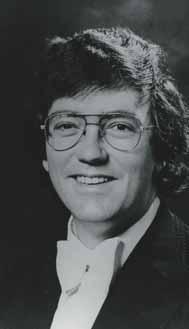
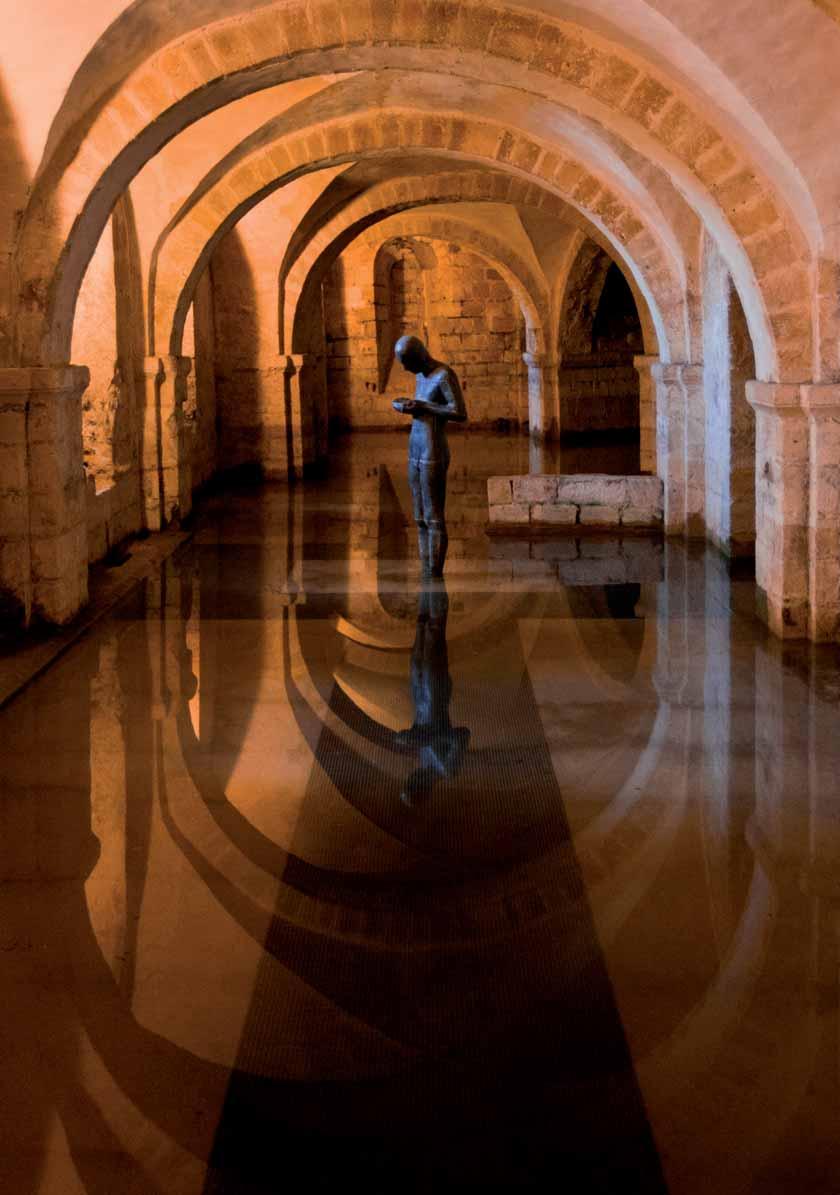
Willie Kendall bowled up for our interview on his bicycle, whistling quietly to himself, and then hummed his way through the tedium of the queue for coffee. It was obvious straight away that music, in its many forms, is ever present in his life. Reflecting on how it began, he spoke as if he was always destined for a musical career, but it does seem to have been a slightly faltering start. Although his parents were musical, he did not attend a choir school, an omission he still rather regrets, but was sent at 8 to a Royal Naval School, chiefly remembered by him now for its pervasive brutality. Happily he was rescued after just a year by the fact that it went out of business.
Willie did then embark on a thoroughly musical education, beginning with a music award to his next school, and then music scholarships to King’s, Canterbury, and St John’s College Cambridge. Whilst at St John’s, he also played the violin and performed in a number of concerts, chuckling that they took a toll on his liver as it was common practice for orchestra members to take their drinks on stage with them. It cannot have been easy to manage violin, bow and glass simultaneously! On the instrumental front he also toyed briefly with the organ – so briefly that, after just one lesson, both he and his tutor decided to call it a day. On leaving Cambridge he studied for a further year at the Royal College of Music, where he was taught by Peter Pears, Robert Tear and Olga Mott, amongst others.
Willie thinks that he wanted to be a lay clerk from the age of nine, and this early ambition was fulfilled in his first post at Guildford Cathedral, where he worked under Barry Rose and Philip Moore. Subsequently he strayed outside the world of church music for a while and became one of the 24 voices of the BBC Singers, earning £47 per week. His BBC pass, which he still retains, shows a young man with a curtain of long dark hair, typical of the 1970s.
Willie admits that by the mid-70s he was not really enjoying life in London. At precisely the right moment fate stepped in and engineered an invitation to a party in the cathedral close in Winchester, where he met Martin Neary, then Director of Music. It was he who suggested that Willie move to Winchester as a lay clerk, where he has happily remained ever since. The singing timetable when he arrived comprised eight services and two practices per week and the pay was 60p per ‘attendance’. He reflects with faint sadness that, with beer at 80p per pint, this was never going to be a path to untold wealth.
Almost forty years on he is serving under only his third Director of Music, and speaks positively about them all, praising their different strengths. He commended Martin Neary for his gift of always getting the very best out of people and said his cheerful encouragement of the choristers had instilled in them a great loyalty to him. Neary’s successor, David Hill, followed in 1989 and won Willie’s particular admiration for his mastery of very difficult musical interpretation. They had first worked together at a charity concert, when David was a young man of just 23, and they still work together occasionally now.
His acquaintance with the current Director of Music, Andrew Lumsden, goes back even further. Whilst Willie was at Cambridge, Lumsden père , Sir David, went to make a recording at the university. Nine-year-old Andrew was in attendance and was drummed into service to relay the beat from the organ loft to the floor. Willie was very pleased to
renew the acquaintance when Andrew came to Winchester in 2002, admiring his very high standards and the way he always seeks to interpret the composer’s view.
All three have had their favoured music: Martin Neary’s interest was in very contemporary music alongside the Romantic and the Baroque. David Hill, also an orchestral conductor, was a polyphonic music fan, enjoying pieces for large forces. In Andrew’s case it is contemporary music, and particularly Philip Moore. Willie himself favours the Romantic repertoire. He loves Elgar, and also Spanish polyphonic music. Victoria is a great favourite, of whom he says the emotive power is unique. Performing his work in the composer’s home town of Avila had been a truly memorable experience.
Asked which other venues and performances stand out in his memory, a varied list appears. Willie has performed both as a soloist and with a choir in what he says is perhaps his second-favourite cathedral, St Paul’s. Other favourite venues include the Musikverein in Vienna and the Lingotto in Turin. He quoted singing Handel, conducted by Nikolaus Harnoncourt, as a career highlight. He was particularly moved to be part of a performance of Britten’s War Requiem with the Hungarian Radio Symphony Orchestra in Pest a while ago, when the accompanying noises off turned out to be the sounds of gunfire and artillery from 25 miles away, across the border with Croatia. It was eerily appropriate. In a more light-hearted vein, he recommended singing Die Meistersinger at the Edinburgh Festival as an especially efficacious diet saying that, apart from the physical fitness it required, the performance simply left him no time to eat or drink! He enjoys touring in all its forms, wherever and with whom it has taken him.
On a day-to-day level he admitted to preferring the music of Candlemas, Epiphany and Advent to Christmas itself. As one might imagine, he confirmed that the Christmas singing schedule itself could be exhausting but, not surprisingly with so many years of experience, he has learned to pace himself. It helps that he enjoys the company of his fellow singers. Winchester’s current lay clerks work in a range of day jobs and so bring very different perspectives to the choir. One of the principal changes he has witnessed was the founding of the girls’ choir in 1998, which sings to a very high standard. He spoke with enormous warmth about his youngest colleagues, admiring the boys’ professionalism and their dedication and also enjoying their high spirits and even their occasional naughtiness.
In addition to his cathedral duties Willie has had an extensive career, encompassing solo work and teaching, away from the confines of Winchester. He has plans to do a little more teaching in the future.
Asked if there was a downside to his chosen life, he promptly cited the bane of attendant paperwork. After further reflection, he also admitted to being mildly irritated by the perennial question each November: ‘Just coming up to your busy time of year, I suppose?’, as if the choir were only brought out of cold storage for the entertainment of an audience once a year. However, despite those quibbles, he evidently still enjoys what he does. He mentioned a recent occasion when the choir was processing out at the end of a service and the cathedral was flooded with late-afternoon light through the West window. Even after singing so many services over so many years, seeing the cathedral transform from season to season, the beauty of the building strikes him still.
Even after singing so many services over so many years, seeing the cathedral transform from season to season, the beauty of the building strikes him still.
What has led to my great enthusiasm for the Friends of Cathedral Music? I believe it must have started in August 1947 when, as a 13-year-old choirboy, I was put on a train at King’s Cross en route to Durham. There was an RSCM cathedral course there for one week. (My thanks are due to Dr Henderson (RSCM Archivist) for sending – and for allowing the FCM to reproduce – the photograph taken in the cloisters.) The writer can be seen top row far right. How we travelled on our own from Dartford to and from Durham in the days of steam and just after the end of WW2 I have no idea. I don’t suppose it would happen today, but we were safe, and the experience enabled us to sing with greater ability, and a greater commitment.
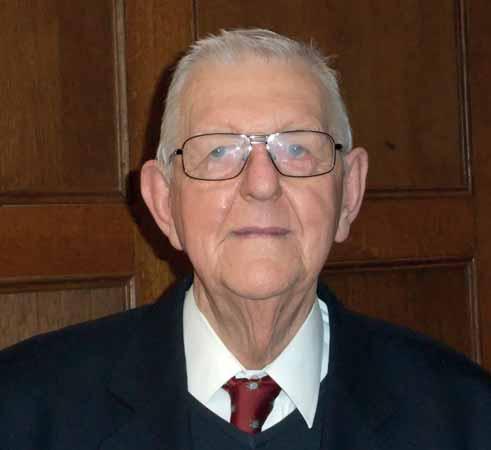
It was on Advent Sunday 2011, and by now over 75, that I knew I should become an active member of the Friends of Cathedral Music. At that stage I had been a member for only three years, and had a mere two National Gatherings to my credit. At the morning Eucharist at Canterbury Cathedral, David Flood with his choir and organist set the place on fire with a fantastic rendering of the Kyrie from Vierne’s Messe Solennelle. The whole of the service continued in that same spine-tingling yet uplifting mode. If that wasn’t enough for one day, that evening the Advent Procession and Carols at Rochester Cathedral, with Scott Farrell, his choirs and organist, was a similarly exciting event. Both these services set the scene well for our preparations to welcome the Christ Child on 25 December. It must be our and others’ duty to ensure that this wonderful sound is continually supported and encouraged to be part of the worship of the Church in future generations. God’s gift, cathedral music. Writers of this music have to work within specific boundaries, but with God’s help they achieve beautiful music.
I was further inspired by words Herbert Howells spoke in 1965 at the launch of the five-volume Treasury of English Church Music, published that year simultaneously with EMI’s issue of five vinyl LPs. (These have been digitally re-mastered by EMI, added to and re-issued in CD format in 2011.) He said, “Most composers of church music first find inspiration from cathedral organ lofts.” I certainly did.
My parents and grandparents were active Christians: my mother’s father was a male alto and during WW2 he took over as Organist and Choirmaster at his church of St Mildred, Addiscombe. I have early memories of being robed and singing there and getting told off by him! This church and
John H. Scott (FCM Member – Canterbury Diocese)organ was used by the RSCM during their stay at Addington Palace. When I was evacuated to Derbyshire, my great-aunt was the village organist, so it was church every Sunday here too, with sadly no choir.
My first ‘real’ choir experience was in 1941. On returning to London my father, who was a fine bass/baritone, went straight to the nearest church and joined the choir, taking me with him. I therefore began my career as a chorister at All Saints’, New Eltham, in south-east London. It was a wonderful foundation for a young boy. The choirmaster was Alan New, by profession a schoolteacher. Originally we sang only Matins and Evensong, then after a while Eucharist and Evensong every Sunday. We were well trained.
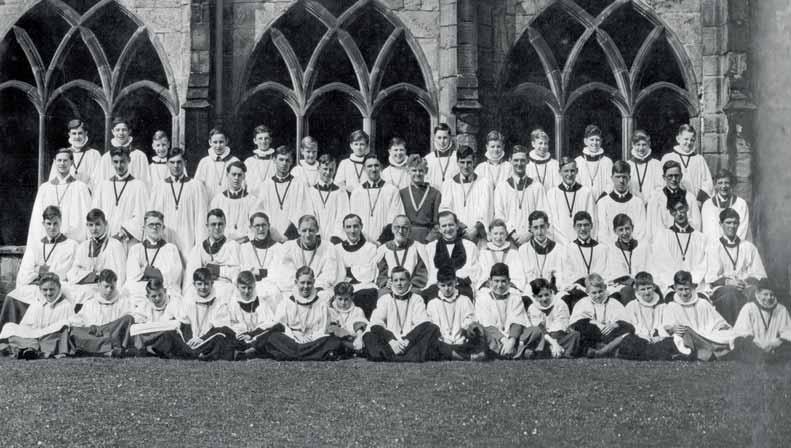
In September 1944 we moved to Dartford where my new choir was at Christ Church on the west side of the town. The Revd W. A. Walsh had just been inducted as vicar. Often the first casualty with a new incumbent can be the organist, but this time it was the choirmaster, a local elderly headmaster. On reflection, it was for the best, and the choir went on to do great things. Revd Walsh was a fine musician, both an excellent pianist and music director. Sunday services were Matins and Evensong; Choral Communion was introduced later, sung once a month and on High Sundays, adding further to our repertoire. The service settings which come to mind were Harwood and Walmisley, both morning and evening. Generally the relatively new Parish Psalter was used for the psalms and canticles, and on specific Sundays there would be an anthem to sing. I can remember a couple of nonmusical instructions we received as trebles: there was a storm raging overhead and we hesitated in our practice; we were told in no uncertain terms that the only excuse we had to stop singing was if falling masonry actually hit us on the head and knocked us unconscious. Secondly, at choir practice, when Revd Walsh called us to take our partners for The Last Waltz we knew we were required to practise The day thou gavest, Lord, has ended. Should Christmas Day happen to fall on a Sunday he would insist that the whole choir sang all the services including full evensong. Despite our youthful protests, we all turned up (surely only in our cathedrals does that happen today?). As head chorister, my quarter’s pay was ten shillings, with weddings extra.
It was with this choir that my ‘Cathedral Adventure’ started. We were affiliated to the RSCM and received a visit from the then Chief Commissioner who, despite his appreciation of our singing efforts, knocked us down a peg or two, reminding us that although “Three fours are twelve” they were nothing to do with the Magnificat (referring to the incorrect emphasis on the start of verses 2, 3 and 4). Similarly, the ‘aaaaaaaaaaacordinging to thy word’ was not the way to sing the second half of the first verse of the Nunc dimittis. We couldn’t have been that bad, though, as two of the trebles (myself and a fellow chorister, Martin Rye) were subsequently offered a week on the cathedral course at Durham in August 1947. We were billeted in St John’s College. Some of you will no doubt recognise the photograph. I can identify two of the three older men sitting second row centre: to the left Edred Wright (who died only recently here in Canterbury), and sitting second to his right the Chief Commissioner, Hubert Crook. I would be pleased if someone could identify the gentlemen between them.
Memories are brief of this week, except that we sang Matins and Evensong daily at the cathedral, including the Wednesday live Choral Evensong for the BBC, receiving 2/6d each for our efforts. At that time Conrad Eden was Organist at Durham and he came in to play for the broadcast. The other wonderful memory was of singing the Litany in procession around that wonderful, unique building on the Friday morning following Matins.
As trebles in our parish choir we sang Stainer’s Crucifixion just when it was beginning to recover some popularity; Maunders’ Olivet to Calvary; and Martin Shaw’s The Redeemer, with its wonderful chorus based on words from Isaiah. Merbecke, Martin Shaw’s Anglican Folk Mass (I can still hear my father singing the opening phrase of the Agnus Dei) and four-part settings were regularly used at our Sung Communion. On one occasion we sang Allegri’s Miserere, and major festivals always concluded with a setting of the Te Deum. The trebles with two gentlemen of the choir performed Sir Sidney Nicholson’s Children of the Chapel, and I played the part of Pelham Humfrey. We travelled from Dartford to Canterbury and Rochester several times to take part in RSCM Festivals and on one occasion to Canterbury to listen to the
cathedral choristers perform Children of the Chapel. During my time at Christ Church I was asked to attend a residential course as a House Captain at Ardingly College; our housemaster was a Mr G F Stuart whose signature started
By this time my voice was beginning to slip down the register, though it never really ‘broke’. I continued to sing, moving to bass-baritone like my father, but amazingly I could still sing alto as well. I returned to the choir after National Service in the Royal Air Force, staying there until I was married in 1957. My new church was now St Alban in East Dartford. It was during my time here that in the late sixties my then vicar told me that he wanted me as a lay reader, and on 19 June 1971, after three years of training, I was admitted and licensed by the Rt Revd David Say, Bishop of Rochester. After that I was not in the church choir but sang in a mixed choir called the Amity Singers, specialising in madrigals and church music. We gave concerts in churches in North Kent, one at the Orchard Theatre in Dartford, and on one occasion we sang Evensong in Southwark Cathedral when the choir there was on holiday.
Another facet of my church career was that I was invited to be organist at Stone House Hospital Chapel for their Sunday worship. Not only honing my organist skills, limited though they were, I also had a small choir to train; both led to holiday relief as organist and choir director at my parish church.
There have been other occasions when I have been part of a choir, but it is only in these last two years or so that my keen interest in church music has been re-kindled. Recently I joined a Come and Sing at Canterbury, and sang part of The Creation; I have also performed Stainer’s Crucifixion at one of our local churches. I am saddened by the demise of many parish church choirs these days. There are no doubt many reasons for this, but for me one reason is the number of modern unison ‘happy’ hymns that choirs are called on to sing. I am reminded of Saint-Saëns’ concern in Paris at the vicars who wanted to include cheap popular opera music in their services. Happily, moving away from that trend has led to some magnificent music being composed by the likes of Widor, Langlais, Vierne and Dupré, to name just a few. Changes in the rules regarding the liturgy allowing choirs to sing parts of the Eucharist in Latin mean that Masses written by these and other composers give an even wider range of
Tuesdays at 7.00 pm
16th July Ann Elise Smoot
23rd July Robert Quinney
30th July James O’Donnell
6th August Martin Ford
13th August Simon Johnson
Single ticket £12 / season ticket £48
www.westminster-abbey.org
wonderful music. So it is to our cathedrals and their choirs that often we have to turn for good church music, both ancient and modern, and sung to a very high standard; with works by Leighton, Rutter and more recently Dove, Mealor, Rizza, Bingham and others. Much of it requires a professional standard of singing, a standard reached and exceeded by our cathedral choirs.
Choirs have an important place in our worship, and they have the task of lifting our congregations to a higher level of spiritual intimacy with God. This beautiful music washes over us, cleansing our souls and bringing us closer to the heavenly throne. As Charles Wesley reminds us, we are;
Changed from glory into glory, Till in heaven we take our place, Till we cast our crowns before thee, Lost in wonder, love, and praise.
As a young chorister that idea was furthest from my mind, yet that week in Durham made the lasting impression that only the best is good enough for God. It is our cathedral choirs who are doing so much to enable this that they deserve our fullest support, and I will do my best to further that cause within the FCM and beyond.
23 JUNE – 26 JULY 2013
OVER 50 SENSATIONAL CONCERTS IN CATHEDRALS, CHURCHES & CITY VENUES, INCLUDING:

Tuesday 25 June, 8.00pm
St. Paul’s Cathedral, EC4 City of Birmingham Symphony Orchestra
CBSO Chorus with Choristers of St Paul’s Cathedral
Albina Shagimuratova soprano
Toby Spence tenor
Russell Braun baritone
Edward Gardner conductor
Britten War Requiem
Monday 8 July, 8.00pm
St Paul’s Cathedral, EC4
London Symphony Orchestra
Gordan Nikolitch director
Emanuel Abbühl oboe
Tenebrae choir
Nigel Short conductor
(concessions £8 / £32)
Metamorphoses
Tickets £5–£48
Plus booking fee
Featuring works by Arvo Pärt, Britten, Josquin, Barber and Strauss 0845 120 7502 colf.org
“I am saddened by the demise of many parish church choirs these days. There are no doubt many reasons for this, but for me one reason is the number of modern unison ‘happy’ hymns that choirs are called on to sing.”
Substantial scholarships are awarded and choristers enjoy the superb and extensive facilities of St Edmund’s School. The Master of Choristers, David Flood, is always pleased to meet and advise parents and their sons.


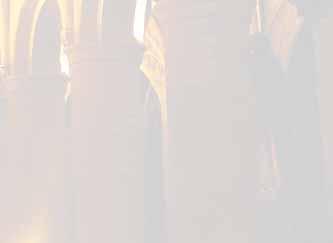



This column was started in 2003 to highlight the wealth of sacred choral music at the Proms, to promote it to CM readers and evaluate its quality, which in turn raised its profile to the planners. CM magazine is sent to BBC Music and Religion production offices in London and Salford.
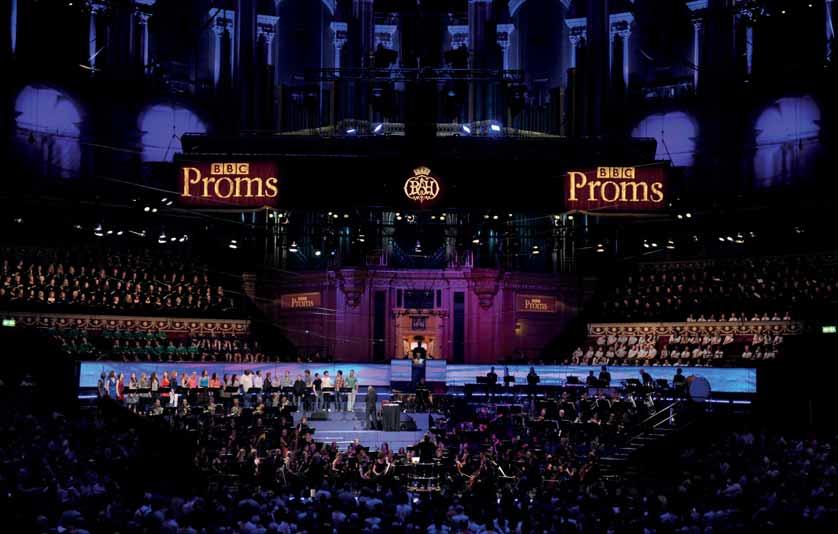
In 2007 the idea of adding a preview of the new season to the review of the previous one presented me with a problem: the preview clearly had to be in the May edition, but copy needs to be submitted before the embargo date for the new prospectus. Fortunately Roger Wright, the Proms Director, gave permission for me to receive details in advance.
Organ music also falls within the remit of this magazine and, because it is frequently marginalised in concert and festival schedules, is in considerable need of support, even at the Proms (how often is there an organ concerto on the programme?). Worse still, we often hear organ music played in orchestral transcription rather than on the instrument for which it was written. (Elgar, Stokowski and Henry Wood were all offenders!) After its restoration, the organ in the Royal Albert Hall featured as a solo instrument in eight concerts for the 2004 season; in 2008 it was down to five, subsequently it has settled to two.
In 2012 these two were both given by the same performer, Cameron Carpenter. The strategy was clear: a controversial, high-profile organist playing in two one-hour Bach matinées at a weekend should draw the crowds – and he did, modestly, more on the Saturday than the Sunday. The Proms blurb was frank: ‘flamboyantly post-modern, genre-bending, transgressive transformations’. We all wanted to hear him but many would not want to again, after the outrageous liberties he took with some of the greatest original organ masterpieces. There was no denying the technical mastery of the playing and in the Bach improvisations there was genuine artistic invention, which JSB might have approved (?). I feel though that Carpenter lacks musical integrity, and his propaganda in favour of the electronic over the pipe organ is very revealing (see his website). So now another young CC has to learn the lessons of good taste, which took the late CC (Carlo Curley) almost twenty years to absorb, although Curley always had more sensitive artistry. One has to question the judgement that the former should have been invited to the Proms but not the latter!
Outstanding choral concerts in 2012 were the Bach Mass in B minor given by the English Concert and its choir, plus five superb soloists under Harry Bicket (a former organist at Westminster Abbey); the Bernstein Mass (premiered at the
opening of the Kennedy Center, Sept 1971) in a semi-staged performance given by massed Welsh children’s choirs and musicians, a rock and blues band, several youth choirs, the BBC National Chorus and Orchestra of Wales, plus one treble from Eton and Morten Frank Larsen as the Celebrant, all skilfully directed by Kristjan Järvi. The printed libretto, partly from the Latin liturgy and partly in English, is vital for following the quirky action, which is complicated. It worked better for those in the hall and watching on TV. Elgar’s oratorio The Apostles was much easier to receive, in an inspired rendering by all Hallé forces, plus the LP Choir, under Sir Mark Elder. The six soloists were outstanding in spiritual commitment; this was much the best of recent performances at the Proms.
Also powerful was the Berlioz Requiem under Thierry Fischer, featuring BBC NOW and three supporting choirs, with the radiant tenor voice of Toby Spence as the lone soloist. There was a fine rare performance of Hymnus Paradisi by Herbert Howells (a former FCM president) given by the BBC Symphony Orchestra and Chorus, with the London Philharmonic Choir, under the very sympathetic direction of Martyn Brabbins
A really memorable late-night concert was ‘1612 Italian Vespers’ given by I Fagiolini under Robert Hollingworth, with works from the early Baroque by Viadana and G. Gabrieli, plus a short Salve Regina by Monteverdi. Ecstatic!
16 July Late-night Gospel music sung by three leading London choirs.



20 July Verdi Requiem (Libera me only) plus Ave Maria and Four Sacred Pieces –Academy of Santa Cecilia conductor Antonio Pappano

9 August Bach Easter and Ascension Oratorios, English Baroque Soloists and The Monteverdi Choir
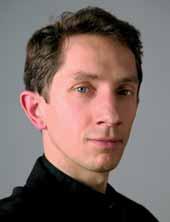
conductor Sir John Eliot Gardiner
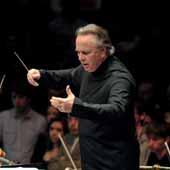
14 August Taverner & Gesualdo, Tallis Scholars
conductor Peter Phillips
17 August Brahms Requiem, Orchestra & Choir of the Age of Enlightenment conductor Marin Alsop
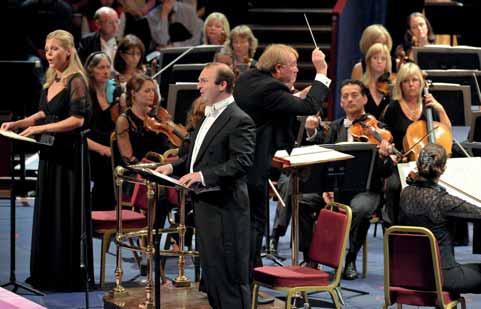
26 August Bank Holiday Matinée concert of light organ
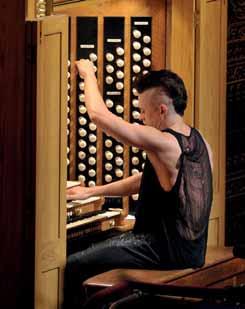
music (Richard Hills)
3 September Britten A Boy Was Born / Geo Lloyd Requiem Temple choristers, BBC Singers conductor David Hill
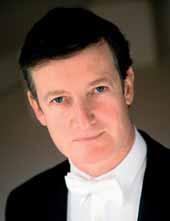
6 September Bach Cantata No 29 (Sinfonia), three Chorale Preludes, plus Prelude & Fugue in A min BWV543 (Klaus Sonnleitner, organ)
Great news! The price of tickets for the promming areas is still £5. The prospectus, now on sale, gives full details of all RAH and Cadogan Hall concerts. They are also given on the Proms website at www.bbc.co.uk/proms.
FCM’s 2008 grant was invested to provide an income to fund one of our four choral scholarships of £1500 pa (at today's interest rates we are obviously eating into this capital sum –hopefully this will change in the next few years). Our choral scholars sing for five out of our six weekly choral services, alongside the boys’ and girls’ choirs. Our choral scholarships are an essential part of ensuring that we maintain a good and enthusiastic back row, as well as introducing young singers to the rich world of cathedral music. As fewer and fewer professions allow potential singers to get to the cathedral early enough for daily Evensong, we rely increasingly on students to fill the gap. This has only been possible through the generosity of FCM and other sponsors and makes a real difference to us, and to the choral scholars, as you can read below.
Being a choral scholar has helped my musical development on all fronts. It is important for young musicians to develop musical independence and professionalism whilst being given regular performance opportunities. The choral scholarship at St Nicholas gave me all these things within a friendly and supportive environment. It is also a fantastic way for singers to learn more music and perform it to a high standard and I know that what I have learnt as a choral scholar will benefit all my musical endeavours in the future.
The main reason I joined the cathedral choir was to improve and develop vocally in anticipation of commencing a BMus course at a conservatoire. The choral scholarship scheme has allowed me to develop my music reading skills and ensemble singing ability, making me a better musician now as a direct result of this. The generous financial assistance from the FCM has facilitated my musical development immensely over the past year. I will be able to take everything I have learned during my time with the choir and make use of it throughout my upcoming BMus course at the Royal Northern College of
Music. For this, and everything the FCM do in support of the choir, I am truly grateful.
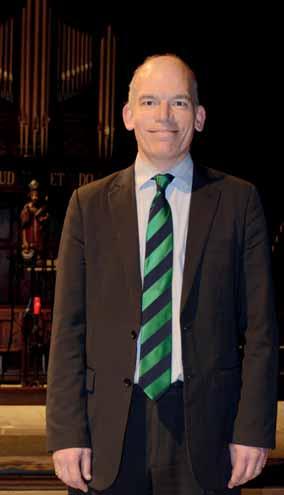
My love for choral music began rather late in life, at the age of 14 when I joined my local parish church as a (somewhat insecure) tenor. After a couple of years in the back row, my confidence and abilities grew and I was selected to sing with the RSCM’s Northern Cathedral Singers under Gordon Appleton.
When I was accepted by Newcastle University to read Medicinal Chemistry in 2005, I applied for a tenor choral scholarship at Newcastle Cathedral (then under the directorship of Scott Farrell), in order to fulfil my dream, and gain some invaluable financial support. Seven years later, and now in the capable hands of Michael Stoddart, I am proud to say that I am still singing at the cathedral as a lay clerk, and my passion for the music and tradition is as strong as ever. Had the scholarship not been available to me when I started university, it is highly probable that I would not be singing today, as I would have had to take a job in order to generate an income during my undergraduate years. As well as the obvious benefits of singing in the choir (i.e. first-class musical education, performance experience, remuneration etc.), the scholarship also provided me with an invaluable support network of friends and colleagues, all of whom were united by a common love of choral music. In addition, I have been presented with opportunities that would otherwise have been unavailable to me, including singing in some of the world’s finest cathedrals such as Westminster Abbey, St Paul’s and Notre Dame, recording three discs for international sale, and performing on a number of live BBC broadcasts.
Finally, the social skills acquired as a result of the scholarship allowed me to develop as a young adult and, I believe, aided me in my academic studies, providing a welcome and necessary outlet for me during both my undergraduate years and throughout my doctorate. I owe the Friends of Cathedral Music a debt of gratitude for all of the above, as I believe truly that the choral scholarship made me the person that I am today.
Philip Rushforth

PRIORY PRDVD 9 + CD
Recorded in 16:9 widescreen PAL
colour and 5.1 surround sound
Sunrise Richard Strauss (arr Rushforth)
Paraphrase (after Handel)
Fantasia
Introduction and Theme
Cloister Garth
Variations
(on theme by de Machaut)


Pastoral Symphony (Messiah)
Riff-Raff
Trumpet Minuet
Bell-Scherzo
Jupiter (The Planets)
Alexandre Guilmant
Robert White
Herbert Sumsion
Herbert Brewer
Christopher Steel
George Frideric Handel
Giles Swayne
Alfred Hollins
Edwin H. Lemare
Gustav Holst (arr Arthur Wills)
Chester is the ninth in this ever-improving series featuring cathedral grand organs and technically, in my view, the best so far. Philip Rushforth has been at Chester as chorister, organ scholar, Assistant Director of Music (2002) and now, since 2007, Director. Small wonder that he relates to this organ with an unostentatious mastery and is able to talk about it in a very calm and engaging manner. The bonus track in which he talks about the registration of his recital programme and plays excerpts will stimulate your appetite for what is to come and help you to listen more attentively. It is a very pleasing choice of music, all very well suited to this organ, which is a highly versatile and superbly expressive instrument. Priory also give us another of their excellent quartered screen sequences, in which the player commentates about his performance in one quarter and his hands and feet are shown at work in the other three. This uses Lemare’s Bell-Scherzo, and it involves us in the playing in an exciting way. There is actually also a bonus piece to enjoy, which is not part of the programme: Guy Bovet’s very lively Toccata Planyavska, impeccably played to an audience. The 5.1 Surround Sound places the organ in an optimally big space, which enhances it tonally to grand effect. The balance strategy of not ‘miking up’ the Choir division separately is fully vindicated, allowing its true tonal quality to be heard. The Organ Tour, for which this very tall player squeezes himself into tight spaces, is highly instructive, showing us the layout of this very fine instrument. Its position on a stone screen in the arch of the north transept facilitates wonderful shots of the superb case, with the player at the attached console on the south side. The booklet contains a personal reminiscence about the organ by Roger Fisher, who retired as Organist at Chester in 1996.
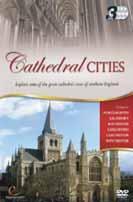
Presented by Hannah Scott-Joynt
A set of three DVDs featuring visits to six cathedrals in southern England. Each DVD covers two cathedrals and has a duration of 50 mins (approx). They are sold as a set in a cardboard slip-case. They can be bought from Amazon or other internet marketing outlets. My set cost £5 plus postage. They are produced by Talent South on the Digital Classics label.
The three cathedral cities which in turn host the annual Southern Cathedrals Festival: Winchester, Salisbury and Chichester, are featured but unrelated to the Festival, which is not mentioned. The other three are Portsmouth, Rochester and Guildford. The latter is the exception, because it is not a city and whereas the other five are medieval buildings standing in the centre of ancient cities, Guildford was built in the twentieth century and stands outside the county town of Surrey on the impressive Stag Hill, in semi-isolation.
In fact the Dean tell us they are planning housing and other development to give it more of a community context, although he doesn’t mention that since consecration in 1961 the University of Surrey has grown up around it on the slopes of the hill. This is the only cathedral in England where there is generous free car parking laid out, which makes it possible for families and visitors to drive to services and events and park close to the building. In the persistent inclement weather we now have to suffer, this is a priceless boon, which enables many elderly and infirm people to attend who would otherwise have difficulty. However there is as yet no bus service.
Hannah Scott-Joynt, who devised the series, is the daughter of the former Bishop of Winchester; she makes a very cheerful guide, with an eye for interesting activities at each venue. She reveals problems: at Winchester we are shown the flooding in the crypt, resolved by the famous diver in 1906 - 11; at Salisbury we see the central columns buckling due to the weight of the tower and spire; even Guildford’s 20th century building has a dampness problem in the main roof vault of the nave, which will cost millions to eradicate. At each cathedral we see how volunteers are helping to preserve and beautify the fabric. At 3pm we meet the organist and/or hear the choir. At Rochester we see the two organs and the Organist and Scholar playing duets and at Winchester we see the choir under Andy Lumsden singing a carol in the stalls. Best of all is an extended item on the Portsmouth choir, which includes Hannah talking to David Price and later the choristers, who are very amusing and clearly enjoy singing for him.
These six programmes were originally made for TV South, so the camerawork is excellent and enhanced by very good aerial shots, which makes for enjoyable viewing. At such a low price, the package is a bargain! Order it while it is still available!

The Choir of York Minster
Naylor: Vox dicentis; Comeau: Audi coelum; Joubert There is no rose; Carter The Magi; Shephard Nunc Dimittis in A; Moore
Caedmon of Whitby’s first hymn; Blow Salvator mundi; Stanford Magnificat in G; Bairstow
The lamentation; F Jackson Alleluia, laudate pueri; Clucas A prayer of Alcuin of York; Philips Ascendit Deus; Tallis If ye love me; Stainer I saw the Lord; Haynes O sacrum convivium; Taverner O Wilhelme pastor bone; Skempton Ave Virgo sanctissimi; Dering Factum est silentium; Bullock Give us the wings of faith; G Jackson Justorum animae.
Director: Robert Sharpe
Organ: David Pipe
REGENT REGCD 368 TT 76:54
Using the seasons of the church year as a framework, Robert Sharpe directs a programme of music (much of it connected with York Minster) of consistently high quality, superbly performed. The choir sings with a range of colours and dynamics and the Minster acoustic is exploited fully without loss of clarity. Especially effective in this respect is Paul Comeau’s Audi coelum, a York commission in which, at the suggestion of Robert Sharpe, a double echo rounds off each verse. The singers rise to the challenges of the bigger pieces, Vox dicentis and I saw the Lord, and tackle Francis Jackson’s Alleluia, laudate pueri Dominum (surely one of F J’s finest achievements) with vigour and precision. They are equally at home in the quieter pieces, notably Andrew Carter’s exquisite The Magi and Howard Skempton’s disarmingly simple Ave Virgo sanctissima. David Pipe gives excellently judged support, especially in the Blow and Stainer pieces and in a most affecting interpretation of Stanford’s G major Magnificat which also features soprano soloist Isabel Suckling. There is so much to savour here – cathedral music at its very best.
Alan Spedding
The Tewkesbury Collection
Lord, thou has been our refuge; Dormi, Jesu; This is the day; Carol of the Magi; As the bridegroom to his chosen; The Lord is my shepherd; Ave Maria; The Lord bless you and keep you; A prayer of St Patrick; Hymn to the Creator of Light; Wells Jubilate; God be in my head; The Gift of Charity; There is a flower; A Choral Amen.
Tewkesbury Abbey Schola Cantorum
Director: Benjamin Nicholas
Organ: Carleton Etherington
DELPHIAN DCD34107 TT 70:10




In this, his final recording with the men and boys of Tewkesbury Abbey Schola Cantorum before taking up his post as Director of Music at Merton College Oxford, Benjamin Nicholas selects a programme from the music of John Rutter. He includes some of the composer’s most familiar pieces but also explores the lesserknown repertoire. Rutter first came to public notice as a carol composer and three representative examples are included. The
CD starts with a trumpet prelude reminiscent of the horn prologue from Benjamin Britten’s Serenade for Tenor, Horn and Strings which introduces the most extended and possibly the most demanding piece in the programme, Lord, thou has been our refuge. Most of the other pieces are in the melodious, conciliatory style which is Rutter’s trademark and the singing is beautifully rounded and sympathetic to the composer’s expression. Carleton Etherington provides equally appropriate organ accompaniment and the performers exploit the rich Tewkesbury Abbey acoustic with which they are so familiar.
Alan SpeddingChoral and Organ Music by Philip Wilby
Evensong, including Introit, preces, psalm 24, magnificat, nunc dimittis, responses and Ave Maria; organ voluntary: Recessional on Michael; Two Choral Prayers; Organ prelude from ‘A Passion for our Times’; Two wedding anthems; Prelude, fugue and toccata for organ.
The Exon Singers
Director: Matthew Owens
Organ: Jeffrey Makinson
REGENT REGCD 338 TT 64:03
Philip Wilby has enjoyed a distinguished career as a musician in various fields: professional violinist, composition tutor and professor at Leeds University, and composer of innovative works for brass bands. Since his days as a chorister he has written music for the church which he continues to serve. This retrospective CD is the result of the composer’s residency with the Exon Singers in 2009 and takes the form of an Anglican Evensong followed by four more choral items and two organ pieces, all of which were intended for liturgical use. While the musical language is subtle and the general effect immediately approachable, the music is of a profundity which repays repeated listening. Matthew Owens draws fine performances from The Exon Singers who perform with warmth and precision, ably supported by Jeffrey Makinson’s sensitive organ playing. Once again, Matthew Owens’s initiative in show-casing another significant contemporary composer is truly laudable. The recording, produced by Gary Cole, is of high quality. Highly recommended.
Alan Spedding

Requiem; Scherzo op 2; Prélude, Adagio et Choral Varié sur le thème du ‘Veni Creator’.
Eton College Chapel Choir
Director: Tim Johnson
Organ: David Goode
HERALD HAVPCD 376 TT 64:30
The success of this performance of the Duruflé Requiem is due in no small part to the fresh, clear tone of the young, all-male chorus. The soft singing is especially beautiful. The climaxes are well judged and delivered with energy and the soloists (treble, baritone and cello) are all members of the choir. David Goode (organ) accompanies with his customary brilliance and
produces idiomatic colours from the Eton Chapel organ. David Goode’s Eton College pupils, Richard Gowers and Tom Etheridge, give mature performances of Duruflé’s Scherzo, op 2 and the Prélude, Adagio et Choral Varié respectively.
Alan Spedding
And other European choral works


Stanford For lo, I raise up; Kelly Summer in winter; Fleming Kindle a light to lighten the darkness; Darke O gladsome light; Allain
Cana’s guest; Simper Lulla, lulla, lullaby; Franck Panis angelicus; Demessieux Te deum op 11; Wood Hail, gladdening light; Michael Berkeley Advent anthem; de Lioncourt Quid retribuam Domino?; Parry My soul, there is a country
Durham Cathedral Choir
Director: James Lancelot
Organ: Francesca Massey
PRIORY PRCD 1078 TT 75:36
This is the first CD to feature the girl choristers of Durham Cathedral singing with the lay clerks and organ scholars. All the music is taken from the choir’s regular repertoire and the major work, James MacMillan’s Missa Dunelmi (2010) was a Durham commission. The rest of the programme is varied with a fine balance between the familiar and the less so, some of the latter having special connections with Durham. Berkeley’s Advent Anthem to words by Rowan Williams was sung at Justin Welby’s enthronement as Bishop of Durham – the CD was recorded before their new Bishop was whisked away to Canterbury. Many of the pieces are sung a cappella and the soprano tone is bright and secure, if a little unyielding at times. Francesca Massey contributes a fine organ solo performance of Demessieux’s Te Deum. James Lancelot directs with the musical integrity which is the hallmark of his work at Durham.

Alan Spedding
Trebles of St John the Baptist, Knaresborough
Ireland Ex ore innocentium; Leddington
Wright May the road rise up; Stolzel Bist du bei mir; Kelly Caribbean Psalm; Hadley I sing of a maiden; Aston Magnificat & Nunc
Dimittis; Britten Missa Brevis; Britten Spring
Carol; Lindley Ave Maria; Matthew, Mark, Luke and John; Reger Maria Wiegenlied; trad arr Baker Whence is that goodly fragrance?; Purcell Evening Hymn; Handel O lovely peace; Holman Thee we adore; Sumsion Magnificat & Nunc Dimittis

Directors: David Salter & Richard Drake
Organ: Simon Lindley
Knaresborough Parish Church has a long choral tradition which has been nurtured and maintained to the present day. Here the excellent choristers of the choir perform a programme of (mostly) liturgical music from their repertoire directed by the church’s resident musicians, David Salter and Richard Darke, with Simon Lindley as organist. The choir of thirteen girl and boy trebles and four probationers sings with style and confidence and is fortunate in having at least four accomplished soloists in its ranks. The music is well chosen for the singers, whose tone is clear and musical throughout, and their partsinging is well balanced. They are at their best in the Aston and Sumsion canticles and in Britten’s evergreen Missa Brevis. The Knaresborough congregation is indeed fortunate in its musicians and the church’s musical tradition is in good hands.
Alan SpeddingArchive recordings 1906-60 Betjeman introduction; Gounod She alone charmeth my sadness; Vulcan’s Song; Barnby A Cradle Song; Brown Nativity Carol; Rogers Hymnus eucharisticus; Sumsion Magnificat & Nunc dimittis in G; Peerson O let me at thy footstoole fall; O God, when thou went’st before the people; Davy St Matthew Passion; Ford Almighty God, who hast me brought; Dering Jesu, dulcis memoria; Sheppard Haec dies; Purcell Thy word is a lantern; Lassus Alleluia, laus et gloria; Tomkins Magnificat & Nunc dimittis (first service); Rose We will rejoice; Leighton Magnificat & Nunc dimittis (Magdalen service); Harris Bring us, O Lord God.
OXRECS DIGITAL OXCD-116 no TT




One has listened with a sort of fascinated horror to archive recordings, some of them from quite famous establishments; in the case of this anthology I would say that the fascination outweighs the horror, and the quality of the first few tracks, very early studio recordings of individuals and small groups from the choir, is agreeably good, whether in performances or soundquality. The Hymnus Eucharisticus of Benjamin Rogers is taken from the soundtrack of a Pathé newsreel report of the famous May morning ceremony in 1931, when Haldane Campbell Stewart had followed the legendary John Varley Roberts as Informator Choristarum; but sadly nothing could be found from the brief tenure of Stewart’s successor William McKie, who was to become organist of Westminster Abbey, and who directed the music at HM The Queen’s coronation in 1953. During the 1950s worshippers of a sensitive disposition tended to attend the services at New College rather than Magdalen or the cathedral. The performance of Sumsion in G included herein was recorded by Harry Mudd in 1957 just before Taylor retired and Bernard Rose arrived from Queen’s College, and the remaining tracks, a mix of private recordings and BBC broadcasts, provide a fascinating aural commentary on the transformation of the choir’s singing, personnel and repertoire brought about by this distinguished and energetic man. We even hear Rose’s very fine singing-voice. The lay clerks did not last long but were replaced by choral scholars, or academical clerks as Magdalen likes to style them. Equally fascinating is the written evidence provided in an unusually extensive set of liner notes. Anyone seriously interested in the history of our great choirs would do well to buy a copy.
Timothy StoreyHugo Distler Selections from 30 Spielstücke; Partita on Nun komm, der Heiden Heiland; Jan Bender A Cantata for Baptism; Wedding Sonata; Missa pro Organo; Gaudeamus Pariter; Prayer from the Gallican Sacramentary; Selections from 90 Kleine Choralvorspiele op 2; Three settings of Down Ampney.
University of Delaware Chorale
Director: Paul D. Head
Organ: David Herman
Available from herman@udel.edu
Hugo Distler (1908-1942) was a prime mover in the Orgelbewegung movement in Germany and his Dreißig Spielstücke (1938) were written for his own house organ. His partita on Nun komm, der Heiden Heiland dates from his time as organist in Lübeck, where he wrote mostly sacred music for his various choirs. Jan Bender (1909-1994) was Distler’s only composition pupil at the Lübeck Conservatory and his music follows the traditions set by his teacher but also shows the influence of Hindemith. He is represented here by a selection of his
compositions for a variety of instruments and SATB chorus. Both Distler and Bender were affected adversely by the Second World War. Distler was hounded to death by the Nazis and Bender, a rather more robust character, spent time as a prisoner of war, finally settling in the US. David Herman, himself a pupil of Bender, plays the organ pieces and the Delaware University Chorale sings with conviction (if not always reliable intonation).
An interesting snapshot of the music of two distinguished German composers.
Alan SpeddingMotets choisis: François Couperin Resonent organa à 3 et symphonies; Tantum ergo sacramentum à 3; Ornate aras; Lauda Sion salvatorem; O Domine quia refugium; O misterium ineffabile; Ad te levavi; Domine salvum; Exultent superi.
Soloists of New College Oxford/ Collegium Novum
Director: Edward Higginbottom NOVUM NCR1384 TT 61:55




Dr Higginbottom has written frequently, in this and other journals, of his pride in what his boy choristers can achieve, but the two treble soloists on this disc far surpass any I have heard and deliver music-making of truly professional quality, and their adult colleagues are just as fine. This is not choral music in the strictest sense, for as the taste of Louis XIV’s chapel seemed to demand, Couperin (1668-1733) set his texts as an assemblage of solo, duet and trio movements, a fashion already copied on this side of the channel; New College Choir has made this repertoire very much its own, so the performances are stylish, confident and natural. If you like this type of music, or indeed that of Couperin’s English near-contemporary Henry Purcell, you will find this CD an hour of utter delight; if your tastes lie elsewhere, you will surely be won over by the quality of the singing and playing herein. I recommend this with great enthusiasm. New College’s shop will no doubt be pleased to send you a copy –www.newcollegechoir.com.
Timothy StoreyJubilate Deo; Serenity; Magnificat and Nunc dimittis; Tremunt videntes angeli; On Love; ...here in hiding...; Give me justice; The Lamb has come for us; Le tombeau de Georges Rouault.
Wells Cathedral Choir
Director: Matthew Owens
Organ: Jonathan Vaughn
HYPERION CDA 67867 TT 78:44
James MacMillan is justly regarded as one of the most creative and original voices in contemporary church music, and Wells choir, with boys not girls singing (a little detail only to be gleaned from the list of performers in the accompanying booklet), presents examples of the great resourcefulness and variety of his musical language, though the familiar mannerisms of Scotch snap rhythms and the decoration of vocal lines with little melismatic flourishes make their expected appearance. The motets in this programme are a well-mixed selection, some short, others longer, and varied in difficulty, which enterprising directors might feel inspired to perform after hearing these performances. There is also Le tombeau de Georges Rouault, a lengthy and powerful movement for solo organ. The Magnificat and Nunc Dimittis, over 21 minutes long, are something of a tourde-force, sadly too long for normal liturgical use, but the former was commissioned for Wells Cathedral so it is only natural and right that it should be included here. This disc is an absolute
‘must’ for serious lovers of cathedral music, and the performances are right up to the high standard we have come to expect and enjoy from these performers. I recommend this CD without reservation.
Timothy Storey
Badener Vokalensemble
Exodus-Messe for mixed choir and organ; Fries der Lauschenden (song cycle); Silja Walter reads her own Song Texts.
Director: Martin Hobi
Organ: Carl Rütti
GUILD GMCD 7385 TT 59:28
This most interesting and unusual programme is subtitled In memoriam Silja Walter (Walter was a Swiss poetess, 1919-2011, who entered the Benedictine convent of Fahr, just outside Zurich, in 1948; she is a constant presence throughout this CD).
The Exodus Mass, a non-liturgical setting of the German vernacular text with the addition of sung and spoken meditations by Silja Walter, was composed to meet the conditions of a commission from a branch of the Cecilia Society, which has long promoted simplicity and purity in church music. Then we have the somewhat elusive figure of Ernst Barlach (1970-1938), a sculptor in wood and stone, many of whose works can be seen in Ernst Barlach House, a private museum in Hamburg. Notable among his works to be found there is the Frieze of the Listeners, a group of nine wooden figures, upon which Silja Walter based the meditations which form the text of the song-cycle in this programme, to which the poetess’s reading of her own poems forms a poignant and unusual epilogue. Finally, Carl Rütti, born in 1949, studied in Zurich and London; he holds university and church appointments in his native Switzerland. His arrangement of I wonder as I wander has been broadcast several times in the Festival of Nine Lessons at King’s College Cambridge, and he has composed a requiem for the Bach Choir. I have one complaint: I was compelled to search for some of this information on the internet, having found this CD’s booklet less than helpful, and hard for my ageing eyes to decipher. The young singers of the Baden Vocal Ensemble deliver performances of very high quality, with which I was greatly impressed, and I hope I have given enough information to help readers decide if they wish to buy a copy of this very fine CD.
Timothy StoreyThe Choir of Trinity College
Cambridge
A Ceremony of Carols; Saint Nicolas (tenor Allan Clayton)


Holst Singers; Boys of The Temple Church
Choir
City of London Sinfonia
Director: Stephen Layton
HYPERION CDA 67956 TT 73:30
This is a recording of the highest quality by a large cast of excellent performers. It is aptly timed for Britten’s centenary, and both Ceremony and St Nicolas date from the flowering of his creative genius in the 1940s, along with Peter Grimes, the Serenade for Tenor, Horn and Strings and so on. One is struck by the enduring freshness and charm of Ceremony; St Nicolas was composed in 1948 and was intended for performance by the choir of Lancing College, amongst others. The character of the saint is assigned to a tenor soloist, and was obviously inspired by the very special gifts of Peter Pears, a Lancing alumnus. Sadly I fear that St Nicolas is a work one either likes or loathes, some finding the music rather too obviously ‘simple’ and the

libretto by Eric Crozier embarrassingly twee.
At first glance the performers on this disc seem ill-matched to the music, for Ceremony is often performed by boys’ choirs, as the composer came to prefer, and in my humble opinion the grown-ups should leave St Nicolas severely alone. Ceremony, however, was originally intended for women’s voices, and Britten himself recorded St Nicolas with the Aldeburgh Festival Chorus of adults and just a few boys. Where I feel the disc under review misses the mark is in the interpretation of the rôle of the saint himself; one would not wish Allan Clayton, who sings most beautifully on this recording, to sound like Peter Pears, but his performance seems curiously uninvolved, and lacks the great man’s wonderful way with words; one just knows that Pears would have been able to invest with some authority and credibility the rather commonplace musings put into the saint’s mouth. So, it is a good but not entirely satisfactory disc, which admirers of these performers will enjoy; but really keen lovers of Britten’s music should probably look elsewhere.
Timothy StoreyFrench Romantic Choral Music
Saint-Saëns Quam dilecta; Ave Maria; Ave verum corpus; Offertoire; Ave verum corpus in D; Sévérac O sacrum convivium; Tantum ergo; Salve Regina; Fauré Tantum ergo 1904; Tantum ergo op 65; O salutaris hostia; Ave Maria; Salve Regina; Maria, mater gratiae; Ecce fidelis servus; Ave verum corpus; d’Indy Ave Regina coelorum; O Domina mea; Sancta Maria, succurre miseris; Deus Israel conjungat vos.

The Choir of Christ’s College Cambridge
Director: David Rowland
Organ: Roxy Summerfield
REGENT REGCD375 TT 69:07
There was a strong revival of Catholic devotion in late nineteenth-century France, hence the proliferation of Eucharistic and Marian texts in this programme of the liturgical settings composed to suit its needs. The names of Fauré, d’Indy and Saint-Saëns must surely be familiar to most of us, and their music is of the melodious charm we would expect. The less well-known and less prolific Déodat de Sévérac (1872-1921) was a pupil of d’Indy. This ingeniously-compiled CD contains many delights, and you might well turn to it if you would like to discover for your singers some new repertoire which is grateful to perform and to hear; I think that some of the Fauré and de Sévérac, but not much else, has entered service-lists over here. The choir of Christ’s College may not be as famous as some, but it sings superbly on this disc, which I am glad to recommend.
Timothy StoreyThe Sixteen/Harry Christophers

Hodie Christus natus est; Christe Redemptor omnium; Magnificat quinti toni; Tui sunt caeli; Reges Tharsis; Missa Hodie Christus natus est; Song of Songs Nos. 1-3; O magnum mysterium.
CORO 16105 TT 67:34
Suffused with all the joy of Christmas, the eight-part Hodie Christus natus est is a most attractive motet, which takes all the opportunities which the text offers for apt musical illustration. There is antiphony of high and low voices and the traditional Christmas exclamation ‘noe, noe’ forms a rather jolly tripletime refrain; it all furnishes excellent raw material for the parody mass which Palestrina based on it, a work of great
luminosity and expressiveness, complemented by a Magnificat and a generous selection of seasonal motets, with which the three from the Song of Songs seem rather odd bedfellows; surely Christmas and Epiphany could have been trawled more thoroughly, and Advent could have yielded a few choice morsels, such as the wonderful Canite tuba in Sion. It is all very well sung in The Sixteen’s usual suave style, and almost despite themselves they succeed in conveying much of the music’s exuberance, but I should have preferred a more overtly energetic approach; you may deduce that I am not a great admirer of their performances. I am sure this disc will be widely enjoyed, and I would not dispute its high quality; if you prefer to hear this music sung by a cathedral or collegiate choir, and in more robust style, you might investigate the recordings of much the same music by the choirs of Westminster Cathedral, or, best of all, King’s College Cambridge, a reissue of a quite superb 1978 recording under the late Sir Philip Ledger, which a specialist dealer might find for you – EMI Eminence CD-EMX 2098.
Timothy StoreyChoir of New College Oxford
Nelson Mass; Insanae et vanae curae.
New Century Baroque
Director: Edward Higginbottom
NOVUM NCR 1385 TT 48:43




Stunning! This recording of the Nelson Mass is a triumph for all the musicians, but one of them in particular may tip FCM readers into buying this performance, and he is the treble, Jonty Ward, who sings with glorious assurance and accuracy. Dr Higginbottom paces the music perfectly, the other singers, chorus or soloist, invest this performance with all that one would wish. Just listen to Master Ward singing the Et incarnatus est from the Credo – just sublime. Buy the disc now!
 Roger Judd
Roger Judd

The Choir of Liverpool Cathedral
Psalms 37-49
Director: David Poulter
Organ: Ian Tracey
PRIORY PRCD 1079 TT 79:02
Ever since my time as a cathedral chorister I have loved the psalms, their language, their moods and the ingenuity of composers to create miniature masterpieces to accompany them. Every choral foundation has its own way of singing them, and that is one of the fascinating aspects of Priory’s great enterprise in making a second series. This CD, from Liverpool’s mighty Anglican cathedral, takes us from Psalm 37 to Psalm 49, or if you like, from the 7th Evening to the 9th Evening. The way that the psalms are sung in this huge space is dictated by the enormous acoustic, so the overall feeling is one of measured delivery. The intonation of the boys is not infallible, and the ensemble not always unanimous, but the commitment of all cannot be questioned. There is a terrific range of emotion and passion evident throughout, and David Poulter is to be congratulated on achieving such sustained concentration from his singers. I must reserve my final comments for the quite remarkable contribution on this disc of the cathedral’s distinguished Organist Titulaire. Ian Tracey’s accompaniments are a tour de force and the variety of sounds that he conjures up to colour the words is both kaleidoscopic and quite breathtaking.
Roger JuddAllegri Miserere; Grieg Ave maris stella; Pärt
O virgin mother of God; Rachmaninov O virgin mother of God; Parsons Ave Maria; Palestrina Exultate Deo; Tallis Agnus Dei; MacMillan A new song ; Franck Panis

angelicus; Stanford Jubilate Deo; Vaughan Williams O taste and see; Rutter O Lord, Thou has searched me out; Fauré Cantique de Jean Racine; Parry Hear my words, ye people.
Director: Andrew Nethsingha
Organ: Timothy Ravalde
CHANDOS CHSA 5085 TT 77:20
This is a splendidly diverse programme, delivered with the panache, discipline and technical expertise that we have come to expect from St John’s over the years. You know, when you put the CD in the slot, that an hour and a quarter of immaculately sung music is going to engulf you. You may prefer some different interpretations of this or that, but basically all will be well –and so it is with this disc.
So, given that stand-point, are there any stand-out moments? Well, some of smaller pieces gave me most pleasure; Grieg, Rachmaninov, Parsons and Palestrina especially are beautifully done, and the Allegri is impressive with an excellent solo quartet and impeccable top Cs. St John’s has long had a tradition for commissioning new music, and in 2007 John Rutter wrote his setting of Psalm 139 for the college. Scored for choir with organ and cor anglais, this presents the ‘other’ John Rutter as heard in The Hymn to the Creator of Light. This new piece is immediately appealing, and a fine addition to the repertoire. The title track is in fact the last, the great anthem by Parry, Hear my words, and it provides the disc with a suitably splendid close. This showcases Timothy Ravalde, the then senior organ scholar, who dispatches the organ introduction with panache. It is rather unsettling to have the choir come in at a quicker tempo, and there does seem to be a slight feeling of hurry about this performance, which I find a shame, as so much is excellent.
Andrew Nethsingha has been at St John’s since 2007, and has put his mark on the work of the choir. This CD is as much a tribute to him as to his young musicians, and will give much pleasure.
Roger Judd
Mundy Sive vigilem; Strogers A doleful deadly pang; In nomine à 5 No. 2; Non me vincat, Deus meus ; Mallory Miserere à 5 ; Giles Vestigia mea dirige; White In nomine à 5; Justus es, Domine; Byrd O Lord, how vain; La verginella; Tye In nomine; Tallis O salutaris hostia; Parsons Retribue servo tuo; Ave Maria; Anon. Come, Holy Ghost; Dum transisset Sabbatum; Maillard Ascendo ad Patrem meum; Ruffo La gamba; Verdelot Madonna somm’acorto; van Wilder Je file quand Dieu me donne de quoy; Pour vous aymer j’ay mis toute ma cure.
The Marian Consort & the Rose Consort of Viols/Rory McCleery
DELPHIAN DCD 34115 TT 72:49
‘As a signet of an emerald set in a work of gold, so is the melody of musick with pleasant wine.’This text, from Ecclesiasticus, appears at the head of the booklet, and seems remarkably apposite. The Elizabethan scholar and bibliophile, Robert Dow (1533-88), copied close on 140 compositions into a set of five partbooks which are now in the library of Christ Church Oxford. He himself was a student at Corpus Christi College and then a Fellow of All Souls. Appropriately, this recording was made in
the Chapel of All Souls, bathed in an acoustic which exactly fits the music. I have to say at the outset that listening to this CD was an unalloyed joy for me from start to finish. The seven singers of the Marian Consort, one of whom is their director, Rory McCleery, sing with great finesse and ensemble. The Rose Consort of Viols accompany some of the singers in solo songs and contribute a number of solos on their own; their plangent sounds make an interesting contrast with the brightness of the singers. I could wax lyrical about just about every track, but I’ll spare you that. Instead, go out and buy the CD for yourself.
Roger Judd

Choir of New College Oxford
Orchestra of the Age of Enlightenment
Directed by Edward Higginbottom NOVUM NCR1383 TT 48:46
Discs from New College Choir are always worth hearing, but there has to be a compelling reason to make (and to buy for that matter) another recording of Mozart’s famous Requiem. The sleeve notes tell us that ‘you will find no other recording... where the ages of the soloists range from 12 to 22 ...an affirmation of the capacity of young people to astonish us with their skill and depth of understanding’, and it is boys who sing both the soprano and alto solo parts. The choir brings out all of the necessary emotion in the music, and this is surely assisted by Edward Higginbottom’s tempi, which are refreshingly moderate, without ever seeming slow, thereby allowing the listener to hear more of the detail of the music. The singing is well supported by the ever-thrilling Orchestra of the Age of Enlightenment. If you still need convincing, I suggest that you buy a copy of the disc and listen for yourself.
Tim Rogerson
Choir of Gonville & Caius College, Cambridge
Vaughan Williams Whitsunday Hymn; Harris Eternal Ruler; Holst Man born to toil; Tallis arr Shaw Funeral Music; Whitlock O living bread; Finzi Up to those bright and gladsome hills; Byrd Mass for five voices; Byrd arr Borland Fantasia in C; Britten A hymn to the Virgin; Howells Haec dies; Master Tallis’s Testament; Pearsall Tu es Petrus; Bax Lord, Thou hast told us.
Director: Geoffrey Webber
Organ: Nick Lee
DELPHIAN DCD34104 TT 70:54




The subtitle of this disc is ‘Byrd & the Tudor revival’ and the disc sets out to juxtapose Byrd’s Mass in Five Parts with works from the first half of the twentieth century when a number of composers were inspired in their compositions by this then recently rediscovered repertoire. That some of these works are not performed more widely today is regrettable as they undoubtedly form an important part of our cathedral music heritage. The disc also includes a couple of organ works which date from the early 20th century. The first, Funeral Music, takes the theme which Vaughan Williams later made famous in his Fantasia on a Theme of Thomas Tallis and presents it suitably arranged for a modern organ whilst Byrd’s own Fantasia in C is similarly arranged, although the programme notes tell us that apart from some octave doubling no notes were added to Byrd’s original score. Of the works that were unfamiliar to me the enchanting Lord, Thou has told us by Arnold Bax, and Haec Dies by Herbert Howells were the most interesting discoveries. A fascinating disc.
Tim RogersonJames O’Donnell Organist and Master of the Choristers
Jonathan Milton Headmaster
All boys receive a substantial Choral Scholarship
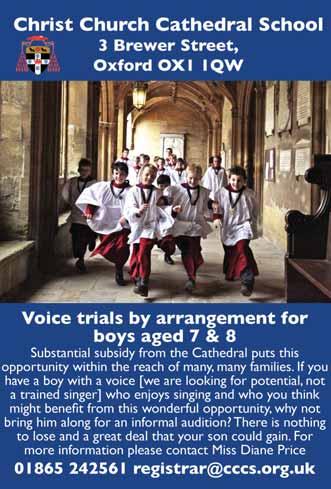
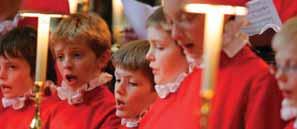
Why not come for an informal audition?

(Boys aged 7 or 8)
Details from:
Westminster Abbey Choir School
Dean’s Yard, London SW1P 3NY
Telephone: 020 7222 6151
Email: headmaster@westminster-abbey.org
www.westminster-abbey.org
Leaders include Malcolm Archer, Margaret Rizza, Robert Sharpe, Peter Moger, Andrew Maries.
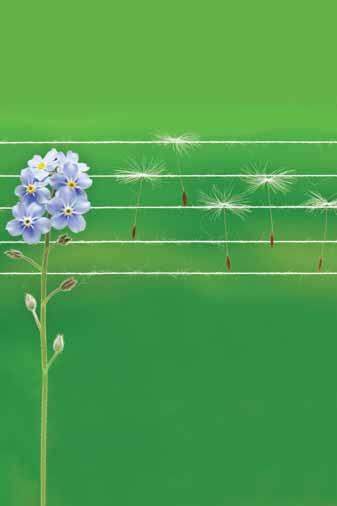
01722 424843
issc@rscm.com
www.rscm.com/issc
The Girls and Men of Exeter Cathedral
G Jackson Tomorrow go ye forth; Mawby Jesus Christ, the apple tree; Praetorius In dulci jubilo; Warlock Benedicamus Domino; Merulo
Tribus miraculis; Naylor Nunc dimittis; Purcell Hear my prayer; Battishill O Lord, look down from heaven; Bednall Salvator mundi; Ouseley O saviour of the world; Lee Meditation for Holy Week; arr Tanner Deep river; Shephard The strife is o’er; Palestrina Ascendit Deus; Tanner Come, Holy Ghost; Ye holy angels bright; Gretchaninov Hymn to the Trinity; Victoria O quam gloriosum; Vaughan Williams Let all the world.
Director: Stephen Tanner
Organ: David Davies
PRIORY PRCD 1066 TT 71:08
This CD follows the oft-repeated pattern of a journey through the year. One of the advantages of such a programme is that it allows the choir to showcase a wide variety of styles and emotions in a natural way. Indeed, this recording does just that, and to great effect. As an example, we move from the intensity of Stephen Tanner’s arrangement of Deep River to the bright and rhythmically alive setting by Richard Shepard of The strife is o’er. The girls’ choir was founded by Tanner in 1994, and on the evidence of this recording they show themselves to be a vibrant group, and with the lay clerks and choral scholars the whole choir comes across as an excellent ensemble. As well as the spiritual mentioned earlier, Tanner contributes two settings of very familiar hymns, Come, Holy Ghost and Ye holy angels bright, the first for the girls and organ, and the second for the full choir accompanied, both attractive and approachable pieces. The CD opens with a fine setting of the Advent Vesper Responsory by Gabriel Jackson, an increasingly wellknown voice in the choral world, and a lovely setting of words previously almost ‘owned’ by Elizabeth Poston, Jesus Christ the apple tree –a most welcome alternative. There is much else that will appeal, but space forbids...
The CD is directed with great sensitivity by Stephen Tanner, and the singers are accompanied with a sure hand (and feet), by David Davies.
 Roger Judd
Roger Judd
by Rütti and Poulenc
Rütti Concerto for Organ, strings and percussion; Tongues of Fire; Arensky Variations on a theme of Tchaikovsky; Poulenc Concerto for Organ, Timpani and Strings


The State Philharmonic Chamber Orchestra of Novosibirsk
Director: Rainer Held
Organ: Martin Heini
GUILD GMCD 7386 TT 74:08
Carl Rütti (b.1949) is Switzerland’s leading composer, and his choral music in particular will be known to aficionados this side of the Alps –he has written for King’s College and St John’s College Cambridge. His Concerto for organ, strings and percussion (tom-toms, cymbals, temple blocks, tambourine, triangle & snare drum) was written in 2011 and was commissioned jointly by the conductor and soloist on this recording. The concerto is in four movements; the first is a hard-driven moto perpetuo; the second, an adagio, is in the form of a chaconne; the third is an extremely brief scherzo; the fourth, the longest, is a set of variations on the composer’s own carol, A Patre unigenitus. I was greatly taken with this piece, and hope very much that others will give it listening time. The music is easy to understand, if gritty at times, and immediately appealing. Rütti’s piece for solo organ Tongues of Fire is given an exciting performance; based on the plainsong Veni
sancte spiritus, it features birdsong and virtuoso finger-work.
The Poulenc concerto is given one of the most satisfying performances I can remember hearing and, as in Rütti’s concerto, Guild have found just the right balance between organ and orchestra. I shall want to listen to these two concerti a good few times.
Arensky’s Variations will be well-known to many, and is sensitively played by the Russian band.
I have nothing but praise for the organist, Martin Heini. His performance is without reproach; technically he is in complete control and Rütti must be thrilled to have so fervent a champion of his music. The recording was made in the Pfarrkirche St Katharina in Horw, Switzerland, where the splendid-sounding three-manual organ is by Orgelbau Goll of Lucerne, built in 1996. The acoustic of the church lends just the right amount of bloom to the sound of the orchestra and organ without blurring the detail.
Roger JuddThe Theophoros Octet
Lviv Seminary of the Holy Spirit
Ukrainian Greek Catholic Church
Artistic director: Sr Solomiya Teslya
HERALD HAVPCD 374 TT 42:14




Formed officially in 2008 and made up of seminary members, the Theophorus Octet has become a musical ambassador for the Lviv Seminary, with the aim of performing Ukrainian liturgical music for both the religious life of the seminary and to represent the order at religious and cultural events within the Ukraine and abroad. The 15 short tracks present music of differing styles for use within the offices and ceremonies of the Ukraine Greek Catholic tradition. The octet of four tenors and four basses under the leadership of Sr Solomiya Teslya sing with evident commitment and understanding of the style, if not always managing security of intonation within the ensemble. This is an interesting disc for anyone wanting to become more familiar with sacred music of the Ukraine.
Jeffrey WilliamsMargaret Rizza
Ave Maria; O magnum mysterium; In the silence; Mary slept; Fire of Love; O sapientia; Christ be near; Mysterium amoris; Veni Jesu; Sanctus Dominus; O speculum columbe; Rising Prayer; Mysterious Night; Oculi mei; Ave generosa.
Gaudete Ensemble/Eamonn Dougan
NAXOS 8.573039 TT 72:22
Margaret Rizza has spent her whole career in music, principally as a professional singer and vocal teacher. She came to composition late in life, following the invitation to write her first piece in 1998. The music on this disc is a collection of seven unaccompanied pieces and eight with instruments. Margaret Rizza describes her music as being in the ‘contemplative Christian tradition’, and it clearly represents a deeply-felt spiritual conviction. Her writing is immediately approachable and refreshing in the beauty of its simplicity, though always steering away from any hint of sentimentality. The vocal phrases are nicely sculpted with much influence of plainsong, and the harmonic language makes effective use of dissonance together with widely spaced homophony. Eamonn Dougan and the Gaudete Ensemble respond sensitively to the spiritual and contemplative style, performing with exquisite control and balance, which, together with the quality of Naxos’ recording, produces a disc that is worthy of a place in any contemporary church music library.
 Jeffrey Williams
Jeffrey Williams

The Cardinall’s Musick
The Great Service; Praise our Lord, all ye gentiles; Unto the hills mine eyes I lift; Make ye joy to God, all the earth; Turn our captivity, O Lord; This day Christ was born
Director: Andrew Carwood
Organ: Robert Quinney
HYPERION CDA67937 TT 59:15
Byrd’s Great Service, with its rich scoring of divided parts and four alto lines giving rise to ten-part texture at times, was clearly not intended for use during the years of musical restraint in Elizabeth’s reformed Church, when such lavish extravagance would not have gone unpunished! Here we have three canticles for Matins, two sections of the Communion Service and two canticles for Evensong, all in one collection. Byrd’s writing explores the contrasts of mood and drama with the skilful use of textural contrast and interplay between the divided choirs. Andrew Carwood’s singers demonstrate clarity of tone and balanced contrapuntal lines. The voices are never forced, even in the more dramatic music, and there is warmth and colour for the intimate and expressive passages. The singing is rhythmically buoyant with a tight ensemble and clear diction.
Five short pieces from Psalmes, Songs and Sonnets provide an ideal foil for the more expansive music of the Great Service, and four of these are for male voices (ATB) only. The songs range in style from intimacy and restraint to the more extrovert, each piece capturing the essence of the text. We hear also instances of the madrigalian practice of word-painting brought by Byrd into sacred songs. The mood contrasts are captured beautifully by Carwood and his singers, and there is always just sufficient edge to the tone to avoid ‘woolliness’ of sound.
Jeffrey WilliamsTe Deum for St Polycarp; In the land of the living; O Lord, thou hast searched me out; I will lift up mine eyes; St Patrick’s Eucharist; Stabat Mater; Litany; Jesus, Saviour of the world; For Mary of our Lord; O Jesus, every moment; O God, our help in ages past; My solemn vow; Festival Benedicite; Do not be afraid; Prayer.
The Ecclesium Choir
Director: Philip Stopford
Organ: Tristan Russcher
PRIORY PRCD 1080 TT 74:30
This is a recording of original compositions, mostly the results of commissions and requests. Philip Stopford was, until 2010, Director of Music at St Anne’s Cathedral, Belfast, and his musical exposure to the Anglican core repertoire from his days as a chorister at Westminster Abbey is evident in these compositions. The music is written specifically with the limitations of parish choirs in mind and is immediately approachable and rewarding to learn, whilst at the same time maintaining quality and substance. The pieces include short and reflective psalm settings to a fine Te Deum in the familiar Anglican style of the late 19th / early 20th century works, a refreshing setting of the Eucharist and, more unusually, the Litany. There is much here that will appeal to enterprising church choirs without over-taxing resources. The Ecclesium Choir sings with clarity and sensitivity in the warm acoustic of Down Cathedral, Northern Ireland, and is accompanied ably by Tristan Russcher.
Jeffrey Williams
The Glory of the Lord; Fanfare for St Mary’s; The Christ-child; Hymn to St Margaret of Scotland; Jesu, Rex admirabilis; Ah, mine heart; Missa Sanctae Margaretae; Justorum animae; Vidi aquam; Let us all rejoice in the Lord; In all his works; The Land of Spices; Ecce venio cito.
Choir of St Mary’s Cathedral, Edinburgh Director: Duncan Ferguson
Organ Nicholas Wearne
DELPHIAN DCD34106 TT 68:38




This is the second release by the choir of St Mary’s Cathedral, Edinburgh of the sacred music of Gabriel Jackson. Unlike most other cathedrals in the UK, St Mary’s has had a mixed treble line since 1978 and was the first cathedral singing daily services to appoint a female alto. Under the direction of Duncan Ferguson, who was appointed Master of the Music in 2007, the choir, with Nicholas Wearne at the organ, is on sparkling form and rises admirably to, and seems to relish the many challenges of, Jackson’s style, which draws on a rich array of influences to craft music that speaks with a unique voice. There is drama, excitement, intimacy and some surprising vocal techniques all to be found on this thoroughly enjoyable disc, which features no less than eleven premiere recordings, captured in the generous acoustic of St Mary’s Cathedral.
Jeffrey Williams
The Choir of Truro Cathedral
Trad arr Vaughan Williams The truth from above; Drayton The World’s Desire; Stopford Sans Day Carol; Bednall Noe, noe; Hopkins arr Stopford We three kings; Brahms Warum ist das Licht gegeben ; Fauré Ave Maria; Bruckner Christus factus est; trad arr Wood
This joyful Eastertide; Finzi God is gone up; Ives Listen, sweet dove; Cheetham Blessed be the Holy Trinity; Walton The Twelve; Bairstow Blessed city, heavenly Salem; Dove Seek him that maketh the seven stars.
Director: Christopher Gray Organ: Luke Bond
REGENT REGCD377 TT 77:44

The fourth in the ‘A Year at...’ series takes us to Truro and like the other recordings in the series uses a mixture of wellestablished and less familiar repertoire to take the listener on a musical journey through the Christian year from Advent via Christmas, Lent, Easter to Trinity with a few feasts (Epiphany, the Annunciation, Ascension, Pentecost, All Saints, Dedication Festival and Christ the King) marked en route. The three Christmas pieces were all commissioned by the cathedral (in 2008, 2009 and 2010) as part of the cathedral’s effort to remind us that the Nine Lessons and Carols service was born in Truro. A number of the pieces have a local connection. Paul Drayton lives and works in Cornwall, whilst Philip Stopford is a former organ scholar at the cathedral and David Cheetham is a lay vicar emeritus of the cathedral. The performance is very good throughout, with well-chosen tempi, a wide dynamic range, and splendid organ accompaniments, all faithfully recorded by Gary Cole in the generous acoustic of Truro Cathedral. I particularly enjoyed the pieces by Philip Stopford and Brahms (all too rarely heard). Definitely a recording to buy.
Tim RogersonKatherine Dienes-Williams and David Davies
Handel Hornpipe; Hampton At the ballet; Reger Toccata in D min; Howells PsalmPrelude 1 ; O’Regan Colimaçon ; Vierne Hymne au soleil; Berceuse; Whitlock Folk tune; Saint-Saëns P&F in B; Wood Nunc Dimittis; Bach Bist du bei mir; Sinfonia from cantata no. 29; Lefébure-Wély Sortie in E flat; Bovet Salamanca; Johnson Trumpet tune in A
HERALD HAVPCD 371 TT 01:07:16
The honours are shared here between the organist of Guildford Cathedral, Katherine Dienes-Williams and former assistant David Davies in a programme of mostly familiar items. Of the lesser known pieces, Colimaçon takes the inspiration for its form from the spiral shape of a snail’s shell and At the Ballet uses a Stravinskian model with a melody played on a 2’ pedal stop accompanied by a manual ostinato. The Guildford acoustic presents some problems and some textures are rather indistinct at times, especially in the softer pieces. In the louder items, however, both players choose registrations and tempi that, through familiarity with the instrument, work well in the cathedral. An interesting game of ‘spot the organist’ may be played by not consulting the CD booklet and deciding which organist is playing…
Alan Spedding
James Thomas and David Humphreys play the new organ of St Edmundsbury Cathedral
Stanford Fantasia & Toccata in D minor; Bridge Lento ; Darke Andantino in C ; Howells Rhapsody No 3 op 17; Cocker Tuba
Tune; Widor Andante sostenuto; Messiaen Le Banquet Céleste; Joie et clarté des corps glorieux; Roger-Ducasse Pastorale; Elgar Pomp & Circumstance No 1.
REGENT REGCD383 TT 66:01
A glance at the sumptuous cases of the new organ in the Cathedral of St Edmundsbury tells you all you need to know about what you are going to hear. The cases are a glorious addition to the building, and so is the instrument contained within them. This CD is an excellent introduction to the new Harrison & Harrison organ, and the two organists show it off to fine effect. There is much to delight in, in this programme.
A movement from Widor’s Symphonie Gothique is most beautifully played, and is followed by two pieces by Messiaen, Le Banquet Céleste and Joie et Clarté. I felt that the first might have been played even more slowly to advantage, but what lovely sounds. Joie et Clarté is brilliantly done, and again the organ has all the ‘right’ sounds, and the quirky rhythms are caught perfectly and with just the necessary degree of abandon. I was so pleased to hear the Roger-Ducasse Pastorale again, a fine piece finely played, and far too rarely heard.
The CD opens with Stanford’s Fantasia and Toccata which introduces the listener to the overall sound of the organ, and two gentler pieces by Frank Bridge and Harold Darke are followed by the third Rhapsody by Howells, all well done. The new Tuba features in the infamous Cocker piece to splendid effect, and the CD closes with a suitably flamboyant performance of Elgar’s first Pomp and Circumstance March.
James Thomas must be thrilled with the way the new instrument has come to fruition, and he and his then assistant, David Humphreys, have done a great job in putting this CD together, aided by Gary Cole’s excellent sound and production.
Roger Judd
Ashley Grote plays the organ of Gloucester Cathedral ACCLAIM APCD4014 TT 69:27
Vierne’s was a life blighted by suffering, both personal and professional. His blindness caused him many problems in committing his music to paper and later editors had even more difficulties in interpreting his intentions. The articles by the late David Sanger (especially in the RCO Journal for 2008) make fascinating and sometimes poignant reading. Ashley Grote writes a full and perceptive programme note to his fine performances of Vierne’s second and third symphonies and gives the listener the opportunity of comparing these two important works dating from 1902 and 1912. It is too easy to imagine that the circumstances of a composer’s life will affect his music but in Vierne’s case music does seem to have afforded him solace and an outlet for his frustrations. Ashley Grote’s performances, technically secure and beautifully paced, are informed by scholarship and a depth of understanding. Adrian Lucas, the producer, has caught the ambience and acoustic of Gloucester Cathedral with sensitivity. Highly recommended.
Alan Spedding
St Joseph’s Chapel, College of the Holy Cross, Worcester, MA
Bach P&F in E min BWV548;Chorale
Preludes BWV650, 659, 617, 615; Briggs





Improvisation: Symphonie improvisée en quatre mouvements.
CHESTNUT MUSIC CD 009 TT 70:10
David Briggs sounds at home on the landmark St Joseph’s Chapel organ built on strict 17th and 18th century lines by Taylor & Boody in 1985. The recording was made at a public concert given in April 2012 and the performances have all the spontaneity with which a great communicator connects with an audience. The organ sounds well in the Bach pieces and the performances are characterful and colourful. David Briggs has a great reputation as an improviser à la française. The wonder here is not only that he improvises a coherent symphonic piece lasting some forty minutes but that all this is achieved on an organ with no registration aids. The audience reaction at the end says it all!
Alan Spedding


Robert Quinney plays the organ of The Queen’s College Oxford
Sonatas I-VI
CORO COR16095 TT 78:57
This CD is a joy from start to finish. All the component parts of this enterprise are ‘right’. The organ, an iconic instrument by the Danish builder Frobenius, is perfectly suited to this chamber music. The warmth of the acoustic of The Queen’s College chapel gives a beautiful bloom to the organ’s sound. Robert Quinney, presently Sub Organist at Westminster Abbey and shortly to move to Peterborough Cathedral as Director of Music, is the regular keyboard player for The Sixteen, and this disc is put out on their dedicated CORO label.
His playing of these wonderfully varied and expressive sonatas is superb. Tempi are well judged, there is some judicious ornamentation, and Quinney’s use of the relatively modest palette provided by Frobenius is imaginative and at all times serves the music perfectly. My recommendation for this recording comes without reservation.
Roger Judd
Paul Carr plays the organ of St Chad’s Cathedral, Birmingham Hakim Ouverture Libanaise; Hendrie Toccata & Fugue in F sharp minor; Dupré Esquisses Nos 1 & 2; Purcell arr Dupré Trumpet Tune; Prokofiev trans Guillou March from ‘The Love of Three Oranges’; Ravel trans Briggs Daphnis et Chloé; Briggs Variations on Greensleeves; Berlioz trans Best Hungarian March; Litaize Scherzo; Reuchsel Nuages ensoleillés sur le Cap Nègre.
St Chad’s Cathedral in Birmingham is rightly acknowledged as an architectural gem. Perhaps less well known is that it contains what must surely be one of the finest English organs of the second half of the 20th century. Built in 1990 by J W Walker & Sons Ltd, it sits on a West Gallery in an elegant case, and speaks directly into the warm acoustic of Pugin’s nave. The principal chorus is solid and is capped by bright mixtures and telling reeds. Quieter solo stops and pungent mutations provide plenty of tonal colour. Incredibly, this is only the first solo recording to date of this magnificent organ, and what a joy to hear it now, recorded so well by Regent.
Despite the title of Birmingham-based organist Paul Carr’s disc, not all of the music is French in origin, but rather Frenchinspired, though with an imaginative and eclectic mix of styles. It is a technically demanding programme, but Paul Carr’s technique is more than a match for the virtuosic challenges of the music, and he succeeds in presenting the listener with a very thorough tonal demonstration of the capabilities of this versatile instrument. The recording, which features a number of works not often encountered, comes across as refreshing and hugely enjoyable. This disc is highly recommended and is a must for any collector of organ recordings.
Jeffrey Williams
Andrew-John Smith plays the organ of La Madeleine, Paris Préludes et Fugues Op 109; Sept improvisations Op 150; Deux Versets; Prélude in F HYPERION CDA67815 TT 76:02
Saint-Saëns’ organ music is less well known (and certainly less recorded) than the works of his contemporaries, Vierne, Widor, Franck and Guilmant. Apart from the ubiquitous Organ Symphony and the fine Fantasias, the best-known works are the three Preludes and Fugues which form the backbone of this disc. They are joined by the Seven Improvisations and three short works, all recorded on the organ of the Madeleine church in Paris over which Saint-Saëns presided for 19 years from 1858 to 1877. Only the three short works date from this time, however, as the Preludes and Fugues and the Improvisations were composed much later in his long life. Andrew-John Smith, Director of Music at St Peter’s Eaton Square since 1997, gives committed and carefully executed performances of these works, which cover a wide range of the moods from the joyful and exuberant C major Prelude to the rather more serious and considered Improvisation in E major. The programme notes are also extremely informative. In all, an impressive and interesting disc.
Tim Rogerson
Kerry Beaumont plays the organ of Coventry Cathedral
Dove Niagara; Moore Paean; Chilcott Sun dance; MacMillan Meditation; Offertorium; Kelly Exultate; Bedford Carillon; Ives Processional; Mathias Processional; Bingham
St Bride, assisted by angels; Preston Alleluyas; Matthews Invocation; Madden Tuba magna; Wilby Pensiero; Finale: In moto perpetuo; Casken Sacrificium
HERALD HAVPCD
To mark the Golden Jubilee of the opening of the ‘new’ Coventry Cathedral, Kerry Beaumont has made this recording of works which by British composers, all of which have been composed since the cathedral (and the organ) was consecrated in 1962. The organ, of course, is unique, being an entirely new instrument built by Harrison & Harrison and set out in two vertical ‘cases’ around 70 feet high and 40 feet apart on either side of the high altar. It makes a thrilling and bright sound and so is ideally suited to the chosen repertoire, which also enables Kerry Beaumont to explore the many colours that the instrument has to offer. The disc includes no fewer than nine world premiere recordings as well as a few well-established works. The playing is of the highest order and the recording faithfully reproduces the special separation of the two sides of the organ, which is so marked in the cathedral. This disc represents a significant and important record of organ music composed over the past 50 years, and deserves a place in any serious collector’s recording library.
Tim Rogerson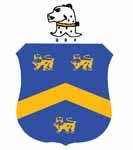



Allegro Music ................................................................41
Cambridge Summer Music Festival ............................37 Campaign for the Traditional Cathedral Choir ..........66
Canterbury Cathedral Choir ........................................51
Christ Church Cathedral School ................................61
City of London Festival................................................50
Edington Festival ..........................................................17
George Sixsmith Organs ..............................................65
Gloucester –Three Choirs Festival ............................67


Harrison & Harrison ....................................................29
Herbert Howells Trust ..................................................29
IAO ................................................................................51
Makin Organs ................................................................2
Musica Deo Sacra ........................................................51
Regent Records ............................................................67
Royal School of Church Music ....................................61
Salisbury Cathedral Voice Trials ..................................29
Southern Cathedrals Festival (Chichester) ................66
St Davids Cathedral Festival ........................................61
St Paul’s Cathedral School Foundation......................25
St Paul’s Organ Recitals ..............................................67
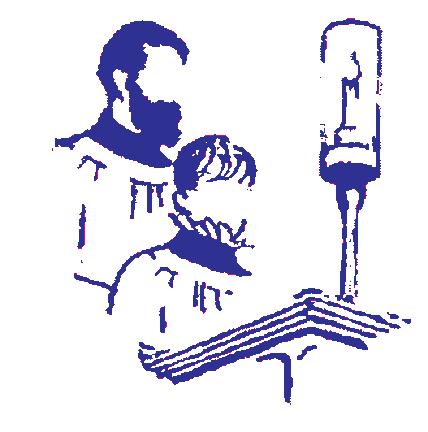

The Sixteen: Choral Pilgrimage ....................................4
Viscount Classical Organs ............................................39
Westminster Abbey Choir ............................................61
Westminster Abbey Summer Organ Series ................50
Westminster Cathedral Grand Organ Festival ............66
President: Dr Simon Lindley
THE ENGLISHCATHEDRALALL-MALE CHORALTRADITIONISPROBABLYTHE OLDESTMUSICALTRADITIONINTHE WESTERNWORLD, YETITSFUTURESURVIVAL ISUNDERINCREASINGTHREAT. PLEASEJOIN ANDHELPUSDOALLWECANTOSUPPORT THECONTINUATIONOFTHISUNIQUESACRED ARTFORM.
Please write toMiss L Collins Cow Hey Farm, 7 Gawthorpe Lane, Kirkheaton, Huddersfield
West Yorkshire HD5 0NZ for a membership leaflet or visit www.ctcc.org.uk.
The Choirs of Chichester, Salisbury and Winchester Cathedrals
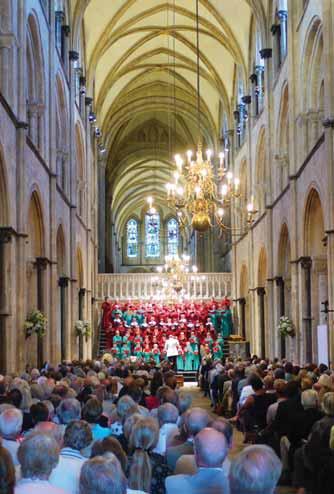
A celebration of the Benjamin Britten centenary: St Nicholas, Rejoice in the Lamb, Hymn to the Virgin Poulenc – Organ Concerto (soloist Andrew Lumsden) Premiere of motet by James MacMillan Scarlatti 10-part Stabat Mater


18th-21st July 2013 Tickets available from 1st May
Tel: 01243 813595
www.southerncathedralsfestival.org.uk
Thursday 2nd May
SIMON JOHNSON
Organist, St Paul’s Cathedral
Thursday 13th June
MARTIN BAKER
Master of Music,Westminster Cathedral

Admission: £10 (£7 concessions) on the door. Seating unreserved All concerts start at 6.30 pm
www.stpauls.co.uk
www.facebook.com/stpaulscathedral www.twitter.com/stpaulslondon
Thursday 11th July
DAVID GOODE
Organist, Eton College
Thursday 1st August
TIMOTHY WAKERELL Sub Organist, St Paul’s Cathedral
Thursday 5th September
ROGER SAYER
Organist, Rochester Cathedral
Guest conductors:
Vladimir Ashkenazy
Edward Gardner

Stephen Layton
John Butt
For the widest selection of new choral and organ recordings

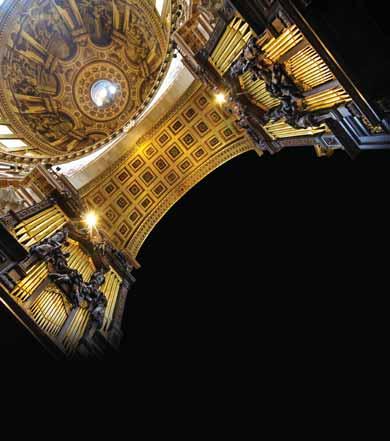











Programme to include:
Rachmaninov
The Bells
Elgar
Cello Concerto
Verdi
Four Sacred Pieces
Coleridge-Taylor
The Song of Hiawatha
Pärt
Berliner Mass
Beethoven
Choral Symphony
Walton
Belshazzar’s Feast
Guest artists
to include:
Helena Juntunen
Sarah Connolly
Philip Higham
Rosemary Joshua
Toby Spence
Polyphony












www.3choirs.org
0845 6521823 @3choirs 3ChoirsFestival
